The Hisense E8Q is a television that clearly draws heavily from the U7Q model – and that's a good thing. After all, it is its European version, not another "diet" mutation. Just a few moments with this screen reveal that the E8Q is trying to impress. And in many ways, it really succeeds. Right off the bat – what stands out: the black is deep, the contrast is high, and the brightness exceeds the threshold that we can simply call satisfying. Let's add to that almost perfect smoothness in tonal transitions, and we have an image that looks very mature, especially for this price segment. In gaming? Just as good. It supports VRR, ALLM, 144 Hz in 4K, and even 240 Hz in Full HD – it's hard to find fault here. Well… almost. Because the E8Q has one additional flaw compared to the U7Q – the sound. In our unit, even at moderate volume levels, the back of the casing started to resonate, generating quite unpleasant crackling noises. This might be a flaw in the test sample, but since the U7Q simply performed better – it's worth noting. Especially if you find both models at a similar price. We can confidently state that the E8Q is a television that can boldly compete for the attention of those looking for a quality Mini-LED at a reasonable price. If a good deal comes along, it's definitely worth it – because we get almost the same as with the U7Q. And that means a really solid picture, excellent gaming features, and overall very good equipment that you can stick with for a long time.
- Matching (Score)
- Our verdict
- TV appearance
- Where to buy
- Contrast and black detail
- HDR effect quality
- Factory color reproduction
- Color reproduction after calibration
- Smoothness of tonal transitions
- Image scaling and smoothness of tonal transitions
- Blur and motion smoothness
- Console compatibility and gaming features
- Input lag
- Compatibility with PC
- Viewing angles
- TV efficiency during daytime
- Details about the matrix
- TV features
- Apps
- Playing files from USB
- Sound
Hisense E8Q vs Sony Bravia 3 50' (VA)
Direct compare
E8Q
BRAVIA 3 / K-(XX)S3
Available screen sizes: 50”
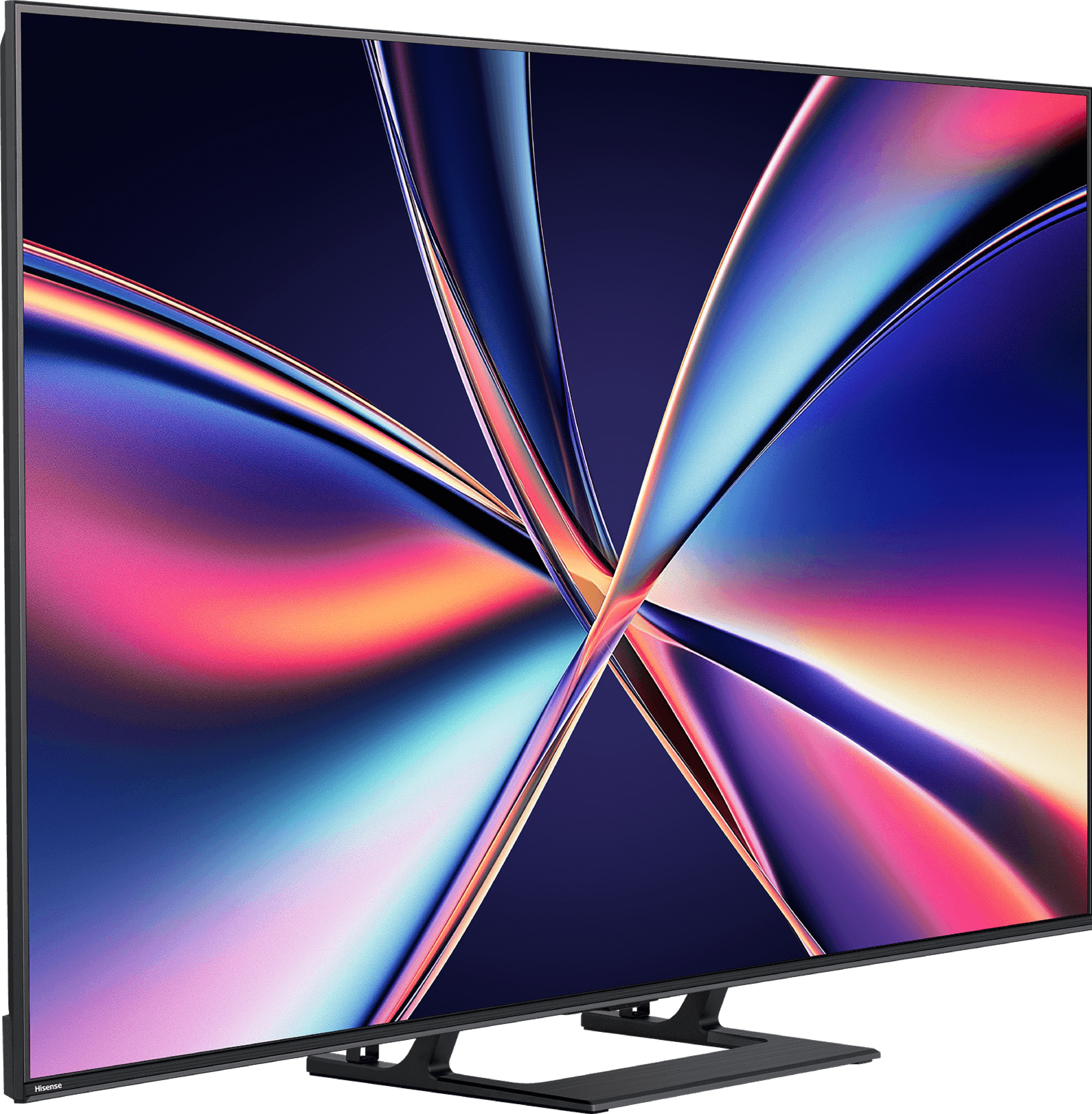
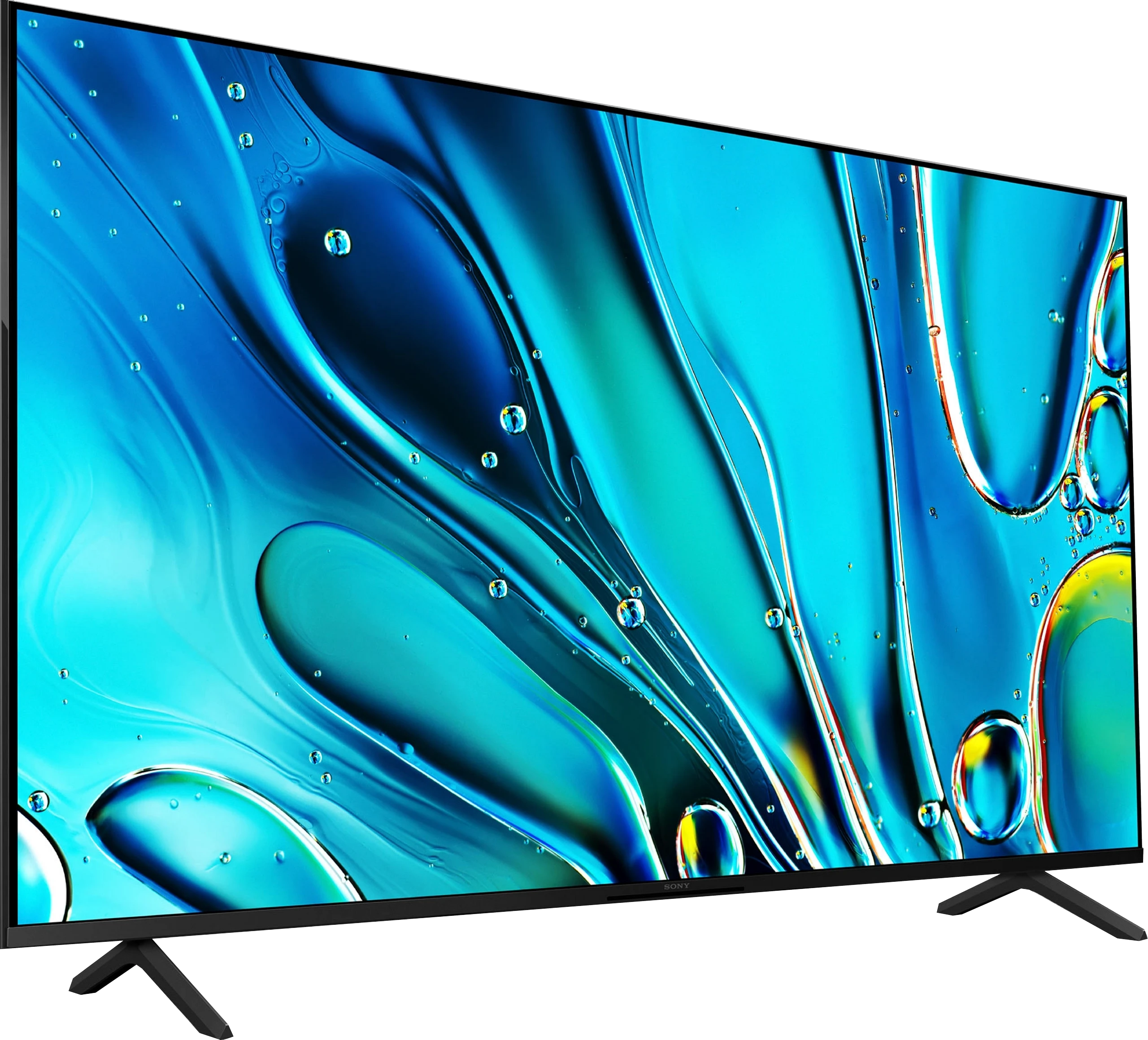
Panel type: LCD VA
Resolution: 3840x2160
System: VIDAA
Model year: 2025
Complete the survey to find out the result

Panel type: LCD VA
Resolution: 3840x2160
System: Google TV
Model year: 2025
Complete the survey to find out the result

Overall rating
7.2
6.1
Movies and series in UHD quality
6.7
6.3
Classic TV, YouTube
6.8
6.3
Sports broadcasts (TV and apps)
6.5
5.3
Gaming on console
8.0
6.5
TV as a computer monitor
8.6
3.5
Watching in bright light
6.2
5.4
Utility functions
8.9
6.1
Apps
7.7
9.6
Sound quality
7.2
6.5
Complete the survey to find out what fits your preferences
Advantages
Great contrast and deep black
Very good fluidity of tonal transitions (close to reference level)
High brightness
Support for 4K 144 Hz and even 240 Hz in Full HD
VRR, ALLM, G-SYNC – a complete package for gamers
Low input lag
Many classic TV features built into the VIDAA system
Significantly better contrast and deeper blacks than the IPS variant
Higher screen brightness, which improves viewing comfort during the day
More uniform panel, fewer issues with vignetting and lightening
Smooth tonal transitions, especially in bright scenes
Wide color gamut coverage (over 91% DCI-P3)
Effective upscaling of lower quality materials
Dolby Vision support, which partially enhances the experience of HDR content
Google TV system with a large app library
Two remotes included – classic and minimalist
Disadvantages
No support for HGiG (makes HDR setup difficult on consoles)
U7Q
A lot worse viewing angles than in the version with the IPS panel
Collaboration with PC clearly weaker: worse font readability and visible dithering
Occasional system freezes on Google TV
Missing USB recording feature
Our verdict
Sony Bravia 3 in the VA panel variant is a television that remains the same budget model in character, but the change in panel type makes watching movies and series much more enjoyable. Higher contrast and deeper blacks finally allow for viewing in the evening without the impression that the screen is drowning in shades of gray. This is a significant advantage over the IPS version, even if it comes at the cost of much worse viewing angles. In practice, this comes down to a choice – if we watch mainly from a couch positioned directly in front, the VA panel gives a decidedly better effect. The rest of the image remains largely the same. The PFS filter still provides pleasantly saturated colors, and the upscaling is at a good level, ensuring that SDR content looks clean and aesthetic. The Google TV system, although it doesn’t always work perfectly smoothly, remains a huge asset – access to a broad library of applications and streaming platforms is something that competitors in this price range don’t always offer in such a refined form. At the same time, the Bravia 3 with VA does not solve all the issues of its predecessor. HDR brightness at around 350 nits still does not allow for a true high dynamic effect, and the lack of local dimming means that fine details can still be blown out. Additionally, there’s no USB recording, which was present in the predecessor. So, who is the Bravia 3 in the VA version for? For those who want to enter the world of Sony televisions at a lower cost and care about decent quality in films and series, primarily watching lower-quality content. It is not a proposition for gamers or for someone expecting cinematic HDR effects. As with the IPS version, it’s hard to talk about a bargain – even if it is the "cheapest Sony of 2025," it is still more expensive than competitors who can offer Mini-LEDs with significantly better contrast and brightness at the same price. Therefore, it is worth considering this model primarily when we come across an attractive promotion.
TV appearance
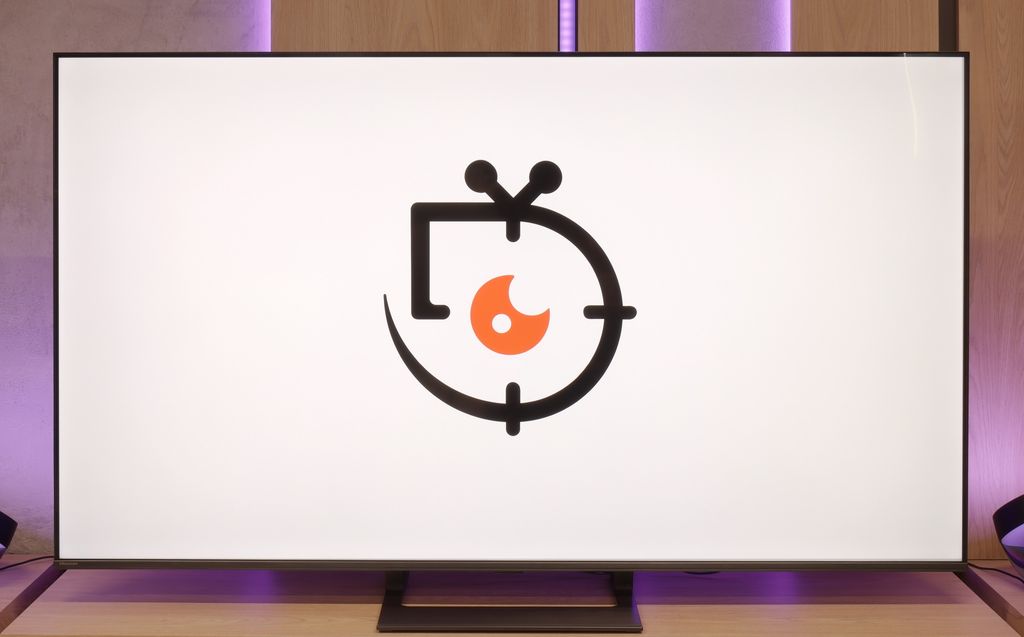
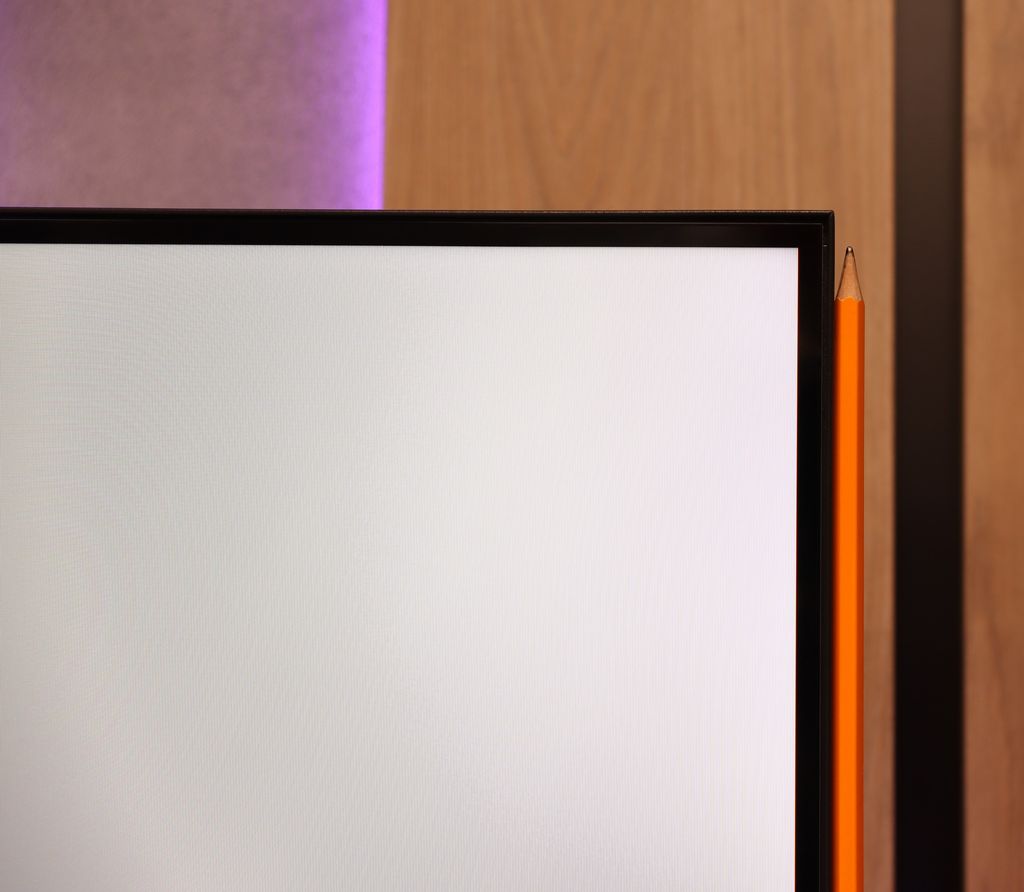
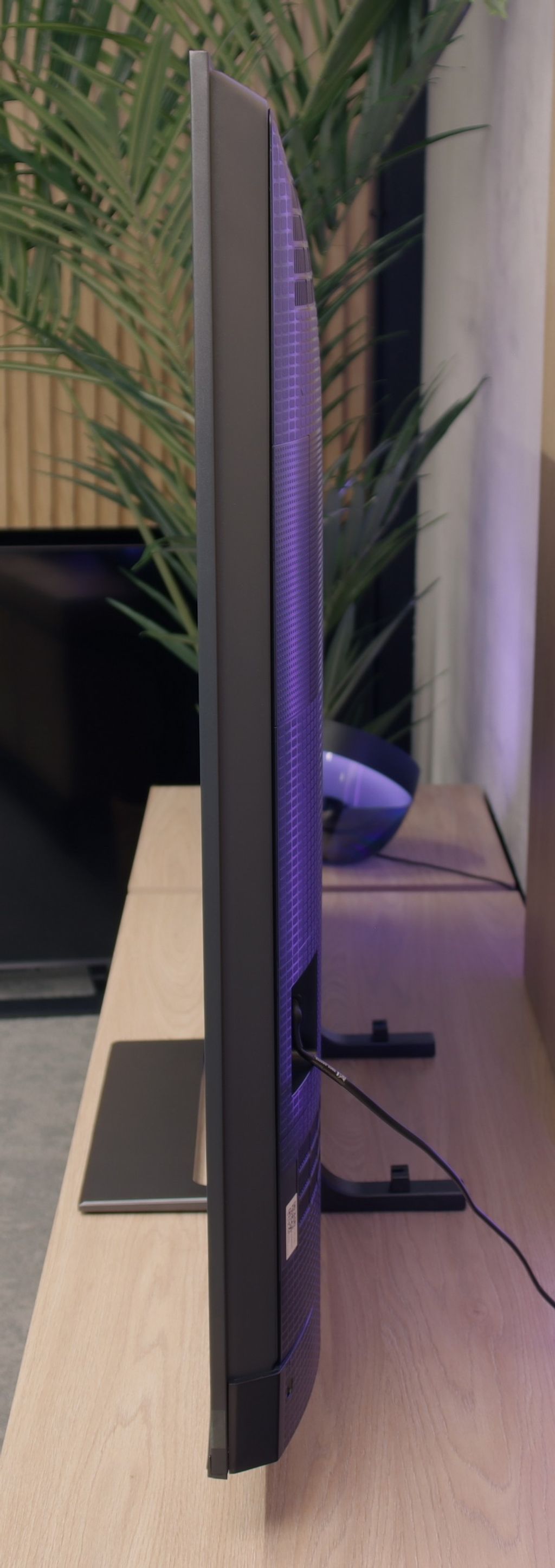
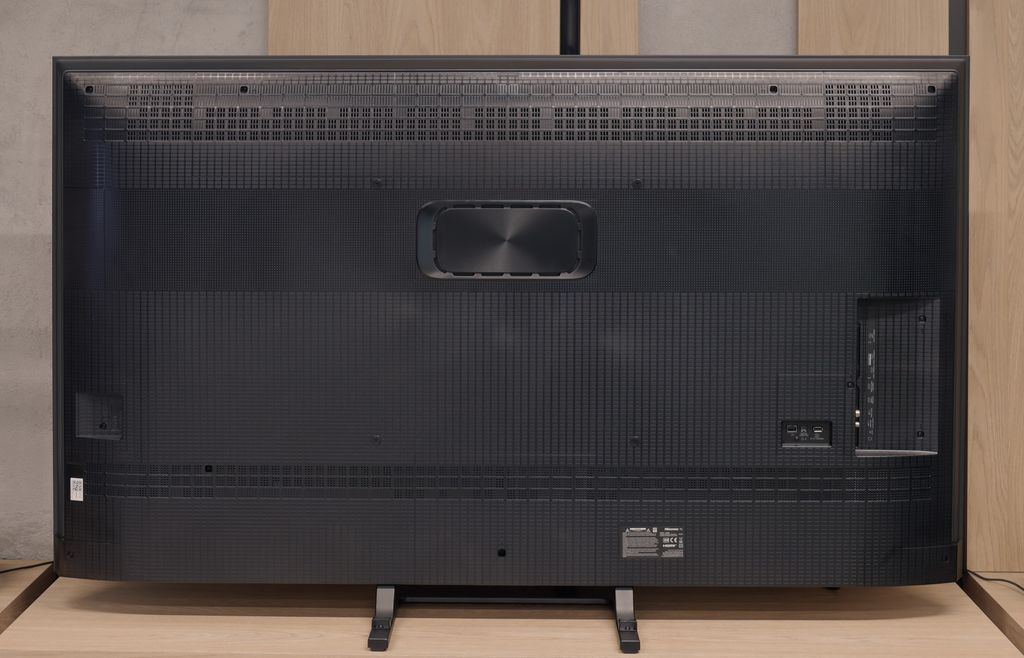
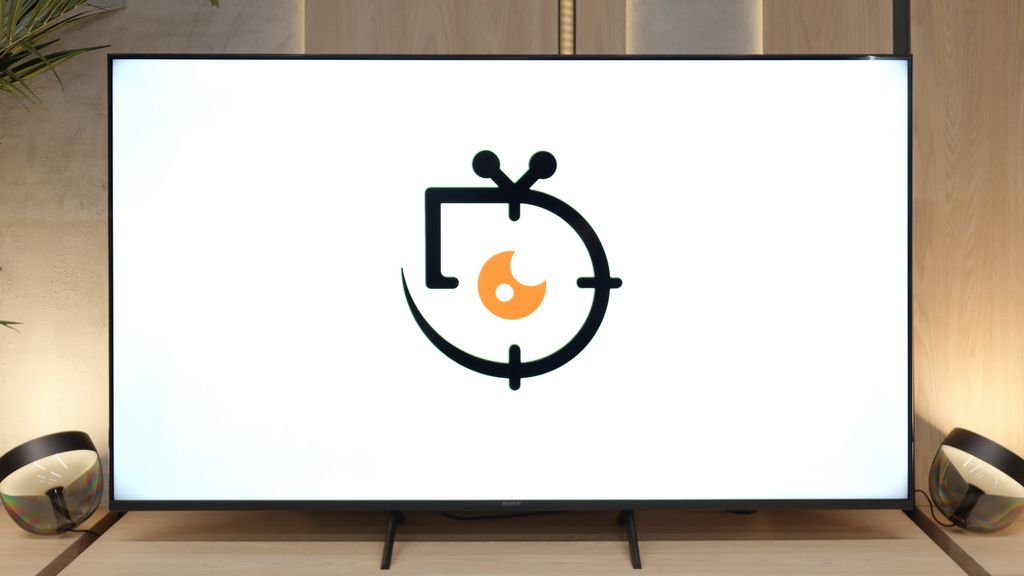
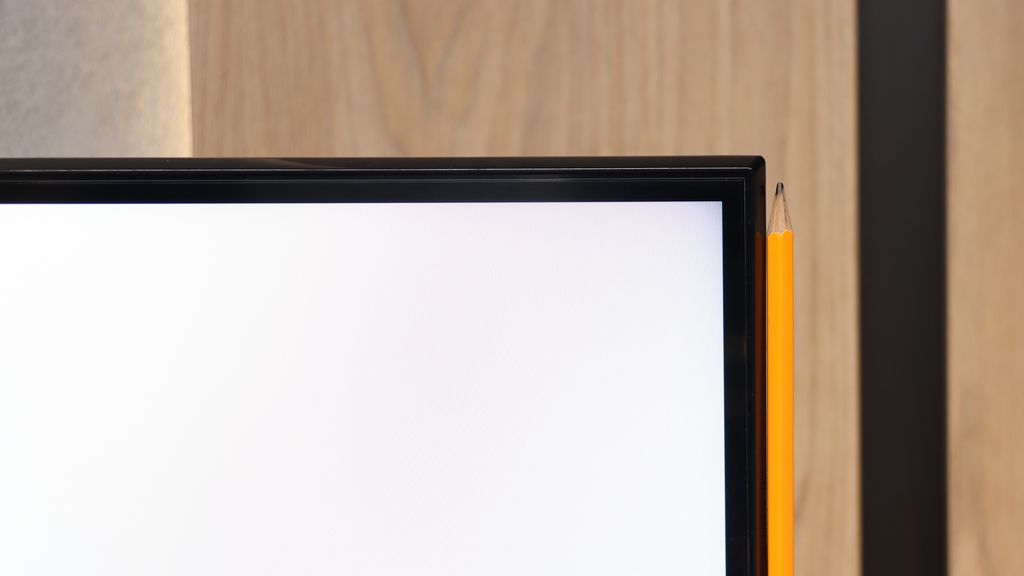
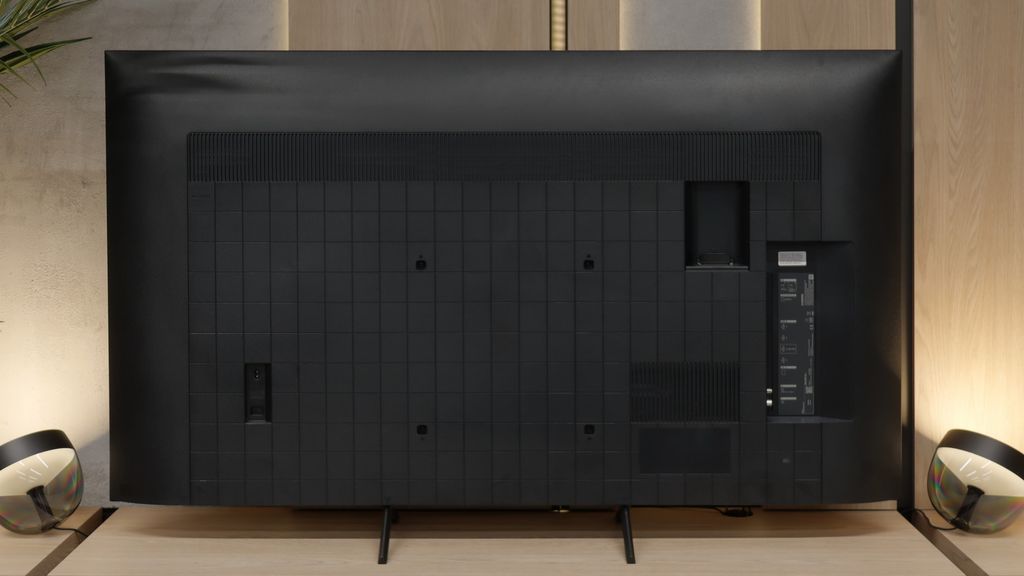
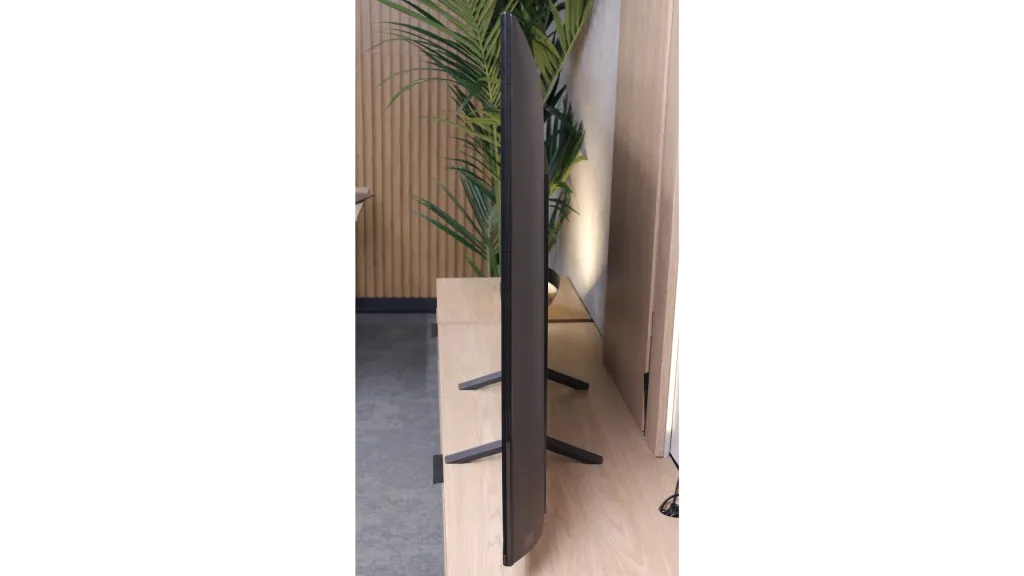
Contrast and black detail
7.6/10
5.7/10
Local dimming function: Yes, number of zones: 220 (10 x 22)
Local dimming function: No
Contrast:

Result
277,000:1

Result
43,700:1

Result
15,750:1

Result
8,850:1

Result
6,350:1

Result
5,550:1

Result
5,250:1

Result
5,050:1

Result
5,150:1

Result
4,000:1
Halo effect and black detail visibility:
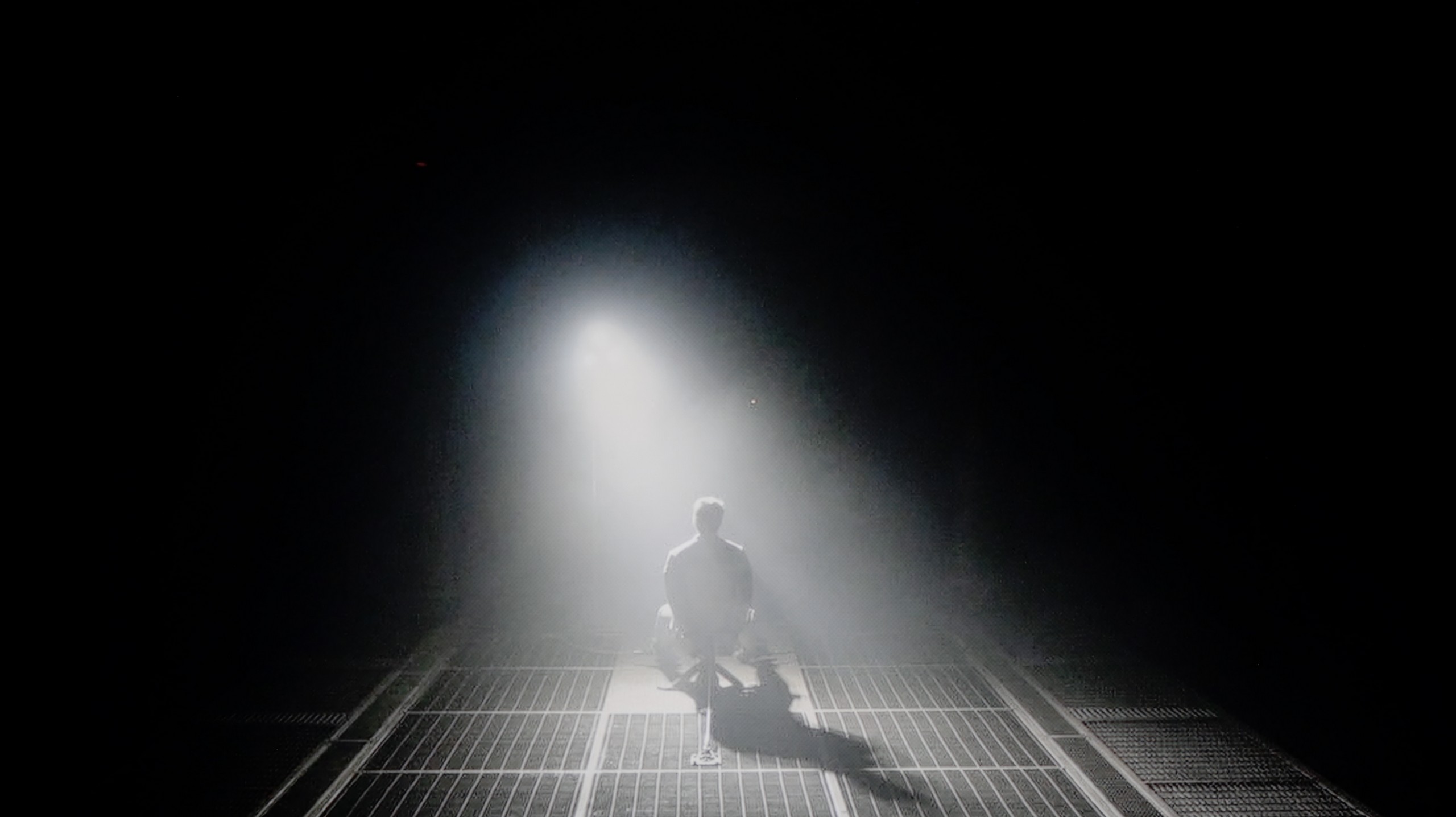
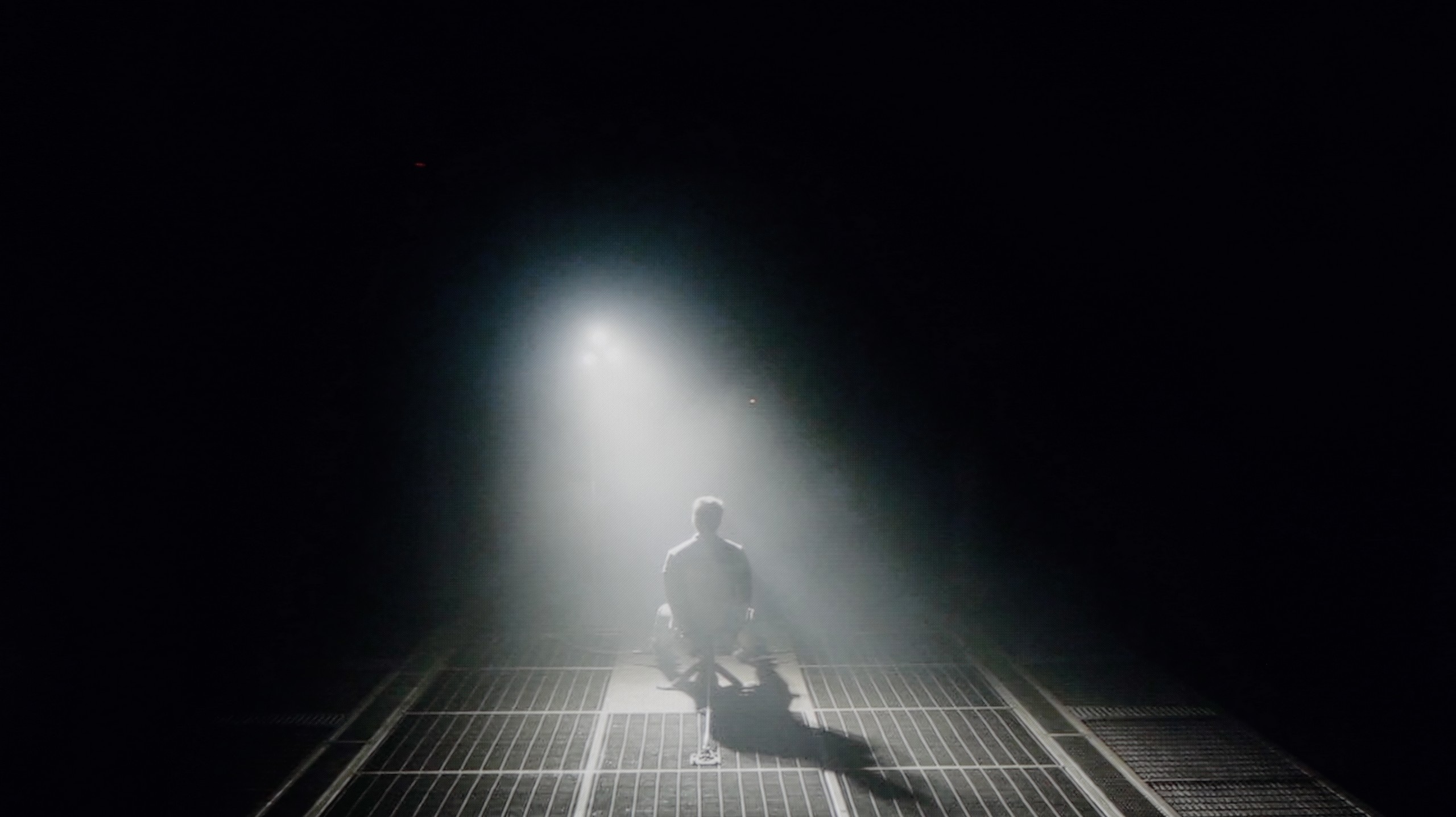
Similarly to the U7Q, the E8Q model uses a VA panel and Mini-LED backlighting. The number of dimming zones also remains at a very similar level – in the 65-inch variant we tested, we counted 220 zones, which is exactly the same as in the U7Q. On paper, this looks really good for this price segment, but even better – in practice. The contrast is high, and black can be really deep. In many scenes, the lights are clearly separated, and the image gains in spaciousness. This is one of those cases where Mini-LED shows it can approach the quality of OLEDs – provided that we are aware of the limitations we need to consider. In very difficult scenes, there may be slight lightening or minor halo effects around bright objects, but these are phenomena typical of this technology and are not very noticeable. Ultimately – the contrast and blacks in the E8Q are really solid, almost identical to those in the U7Q model. It’s hard to find fault with this, especially when we look at the price of the television.
The biggest difference in the 50-inch variant is the way Bravia 3 handles contrast. Although the television is not equipped with a local dimming system, simply changing the type of panel to VA provides a noticeable effect. The contrast is definitely higher than in the other sizes based on IPS panels, and the blacks no longer resemble washed-out shades of gray or navy. As a result, much more detail is visible in darker parts of the image, making evening viewing simply more enjoyable. It's still not at the level of more expensive Sony models, but the difference compared to the other variants of Bravia 3 is clear and easily noticeable after a short viewing session.
HDR effect quality
4.5/10
4.9/10
Luminance measurements in HDR:

Result
531 nit

Result
148 nit

Result
320 nit

Result
100 nit

Result
625 nit

Result
319 nit

Result
360 nit

Result
393 nit

Result
365 nit

Result
395 nit
Scene from the movie “Pan” (about 2800 nits)


Scene from the movie “Billy Lynn” (about 1100 nits)
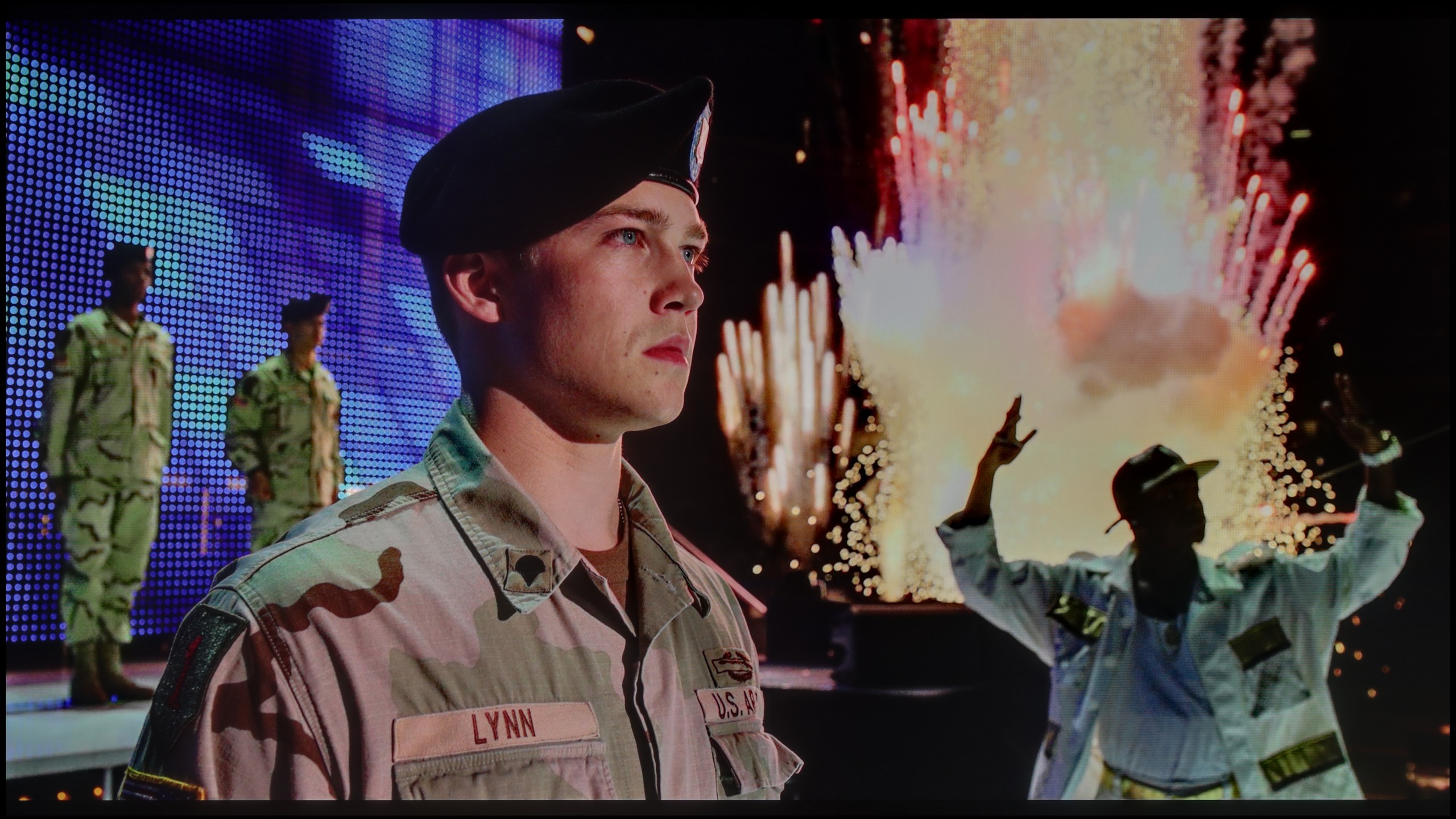
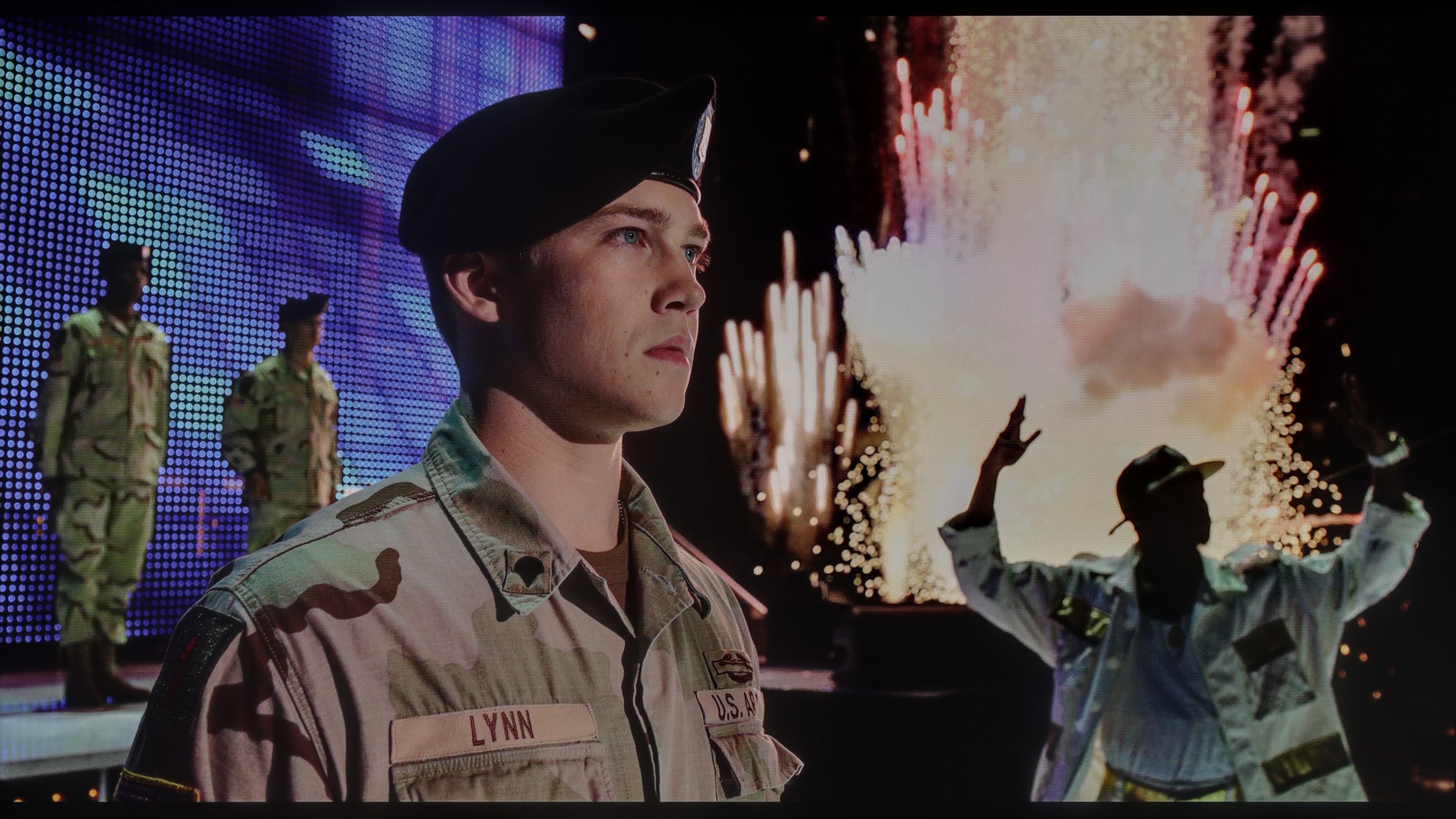
Static HDR10


Dynamic: Dolby Vision
Dynamic: Dolby Vision


HDR luminance chart:
Sony Bravia 3 50' (VA)
HDR luminance
Hisense E8Q
HDR luminance
Since the E8Q is a twin of the U7Q, it’s no surprise that the quality of the HDR effect is almost identical. On paper, it looks promising – a peak brightness of 800 nits can impress in many scenes. Fragments like the flashes of light in “The Meg” or shots of the sun in “Life of Pi” can indeed evoke a “wow” effect. But the longer we watch, the more we notice the limitations. The problem arises when small, bright details are supposed to be displayed on a dark background. In such situations, the dimming algorithms try to preserve contrast but end up dimming what should shine the brightest. Instead of dazzling details, we get almost invisible points of light. This is typical for Mini-LED in this price segment and is not surprising – but it’s worth knowing that the HDR effect won't always be fully preserved. Fortunately, the color reproduction offers reasons to be satisfied. A coverage of the DCI-P3 color gamut at around 94% is a very good result, and the applied quantum dot layer (more specifically, PFS) does its job – colors are saturated and vibrant, especially with 4K content.
Interestingly, in the 50-inch version, the Bravia 3 performs slightly better in terms of brightness than its larger variants. In measurements, it achieved around 370 nits, which still aren't values that can compete with top-end televisions, but enough to speak of a semblance of HDR effect. For some users, this level will be acceptable, while others will view it as typical for SDR content, where spectacular bursts or strong contrasts are not expected. It must be clearly stated that the Bravia 3 is not a television for those who want to extract maximum quality from the most challenging film materials.
However, this does not mean that everything is mediocre. Sony equipped this model with an additional PFS filter, which works similarly to solutions used in QLED televisions. As a result, the coverage of the DCI-P3 color palette increased to over 91 percent. In everyday use, this means livelier, more saturated colors and a more pleasing image texture. Even if strong lighting effects are lacking, movies and series can look significantly more attractive than in its predecessor, the X75WL.
Factory color reproduction
6.5/10
5.8/10
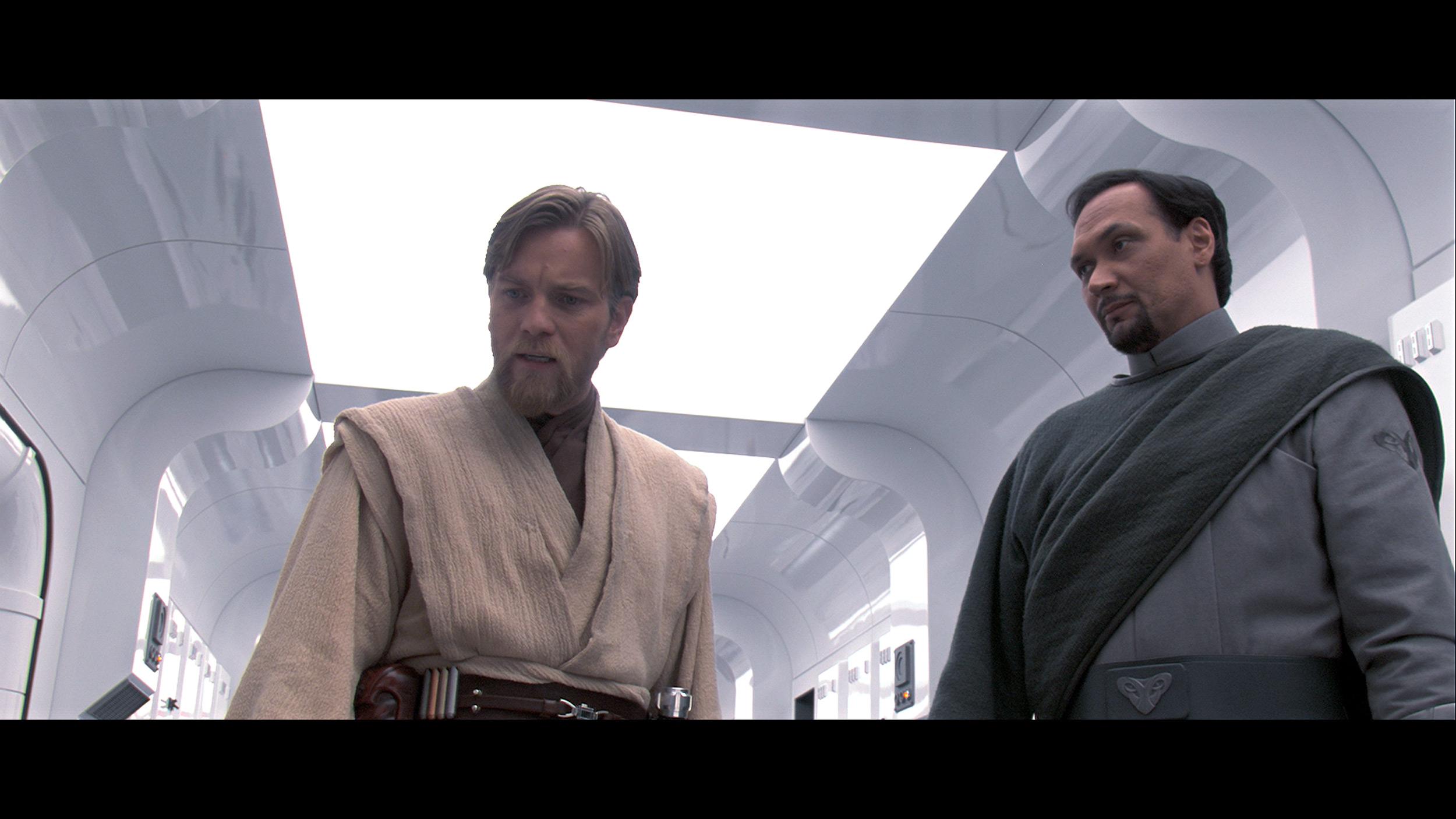
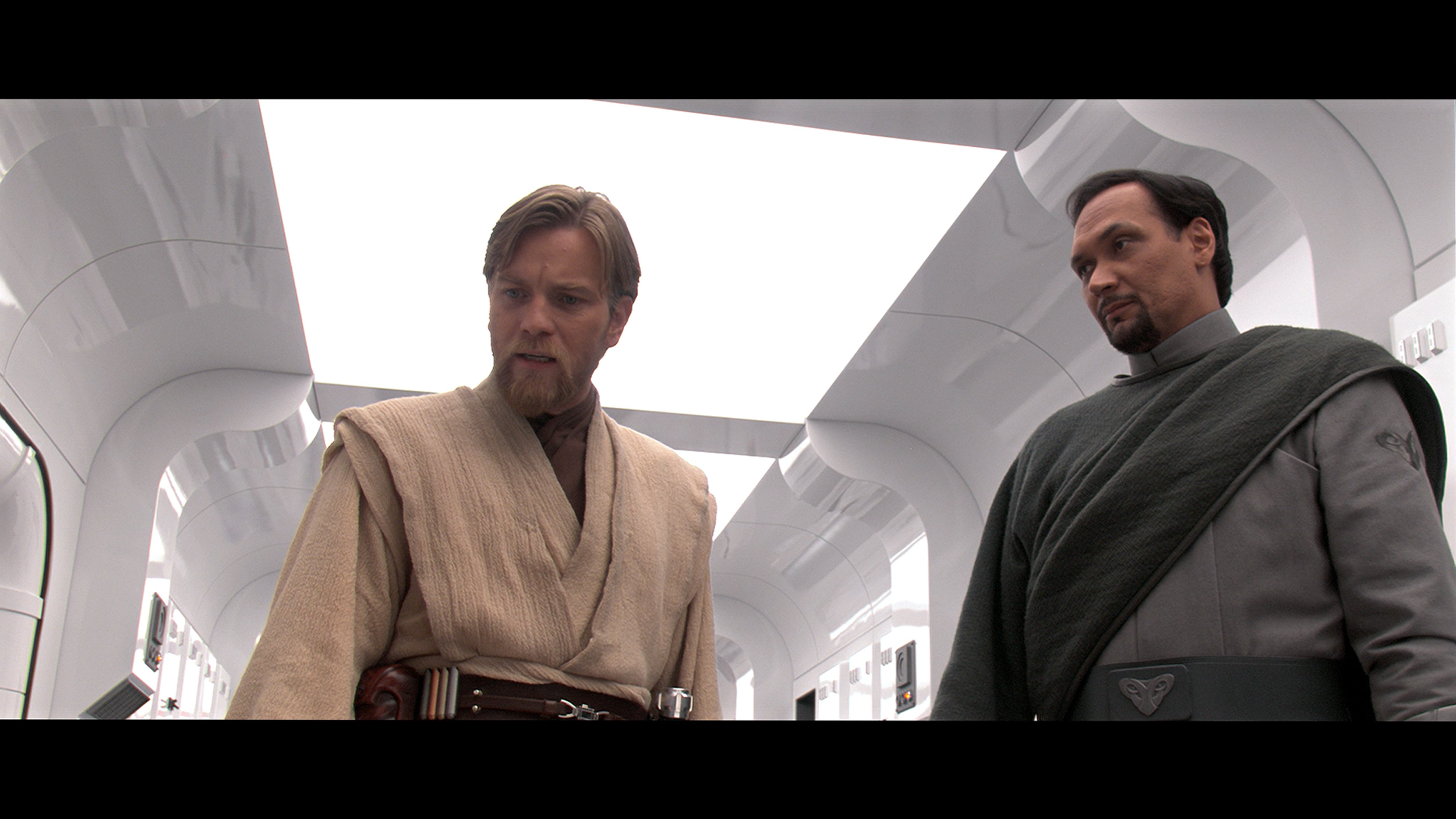
Factory Mode
After calibration


Factory Mode
After calibration
Testing the Hisense E8Q in Filmmaker mode, we were hoping for a neutral image close to the director's vision. Unfortunately - although on paper it doesn't look bad (the color reproduction errors are not significant), in practice the image feels somewhat unnatural. The reason? Too strong an increase in blue and a lack of red in the white balance. The effect? The scenes look cool, and the white appears slightly bluish. Alongside the U7Q model, we also noticed a specific approach to brightness management here. The brightness reproduction curve for HDR content (EOTF) shows that the TV can significantly dim small, bright elements of the screen to maintain contrast - but sometimes it goes too far. On the other hand, it can excessively brighten larger, very bright parts, which disrupts tonal balance. This is a compromise that may not suit everyone – especially if you want an as faithful image as possible right out of the box.
We primarily tested the Sony Bravia 3 in movie mode, which immediately proved to be the best choice among the factory settings. It's not a perfect picture, but compared to eco mode, which the TV suggests right out of the box, the difference is clear and positive. In movie mode, one can notice a certain problem: the picture seems too warm, which results from a lack of blue in the white balance. Despite this, in SDR content, the final effect can still be considered quite decent and satisfactory for everyday viewing. Much more serious errors appear in HDR materials. The Color Checker analysis showed significant deviations, and poor brightness management, combined with limited color gamut coverage, further exposes the shortcomings of the picture in this mode. All this makes HDR on the Bravia 3 look unconvincing and can spoil the impression left by the quite decent SDR content settings. Fortunately, this is not a hopeless situation. All sorts of errors can be somewhat mitigated, and some can even be completely corrected through professional calibration. That’s why we decided to see how the TV would perform after such adjustments.
Color reproduction after calibration
7.4/10
7.5/10
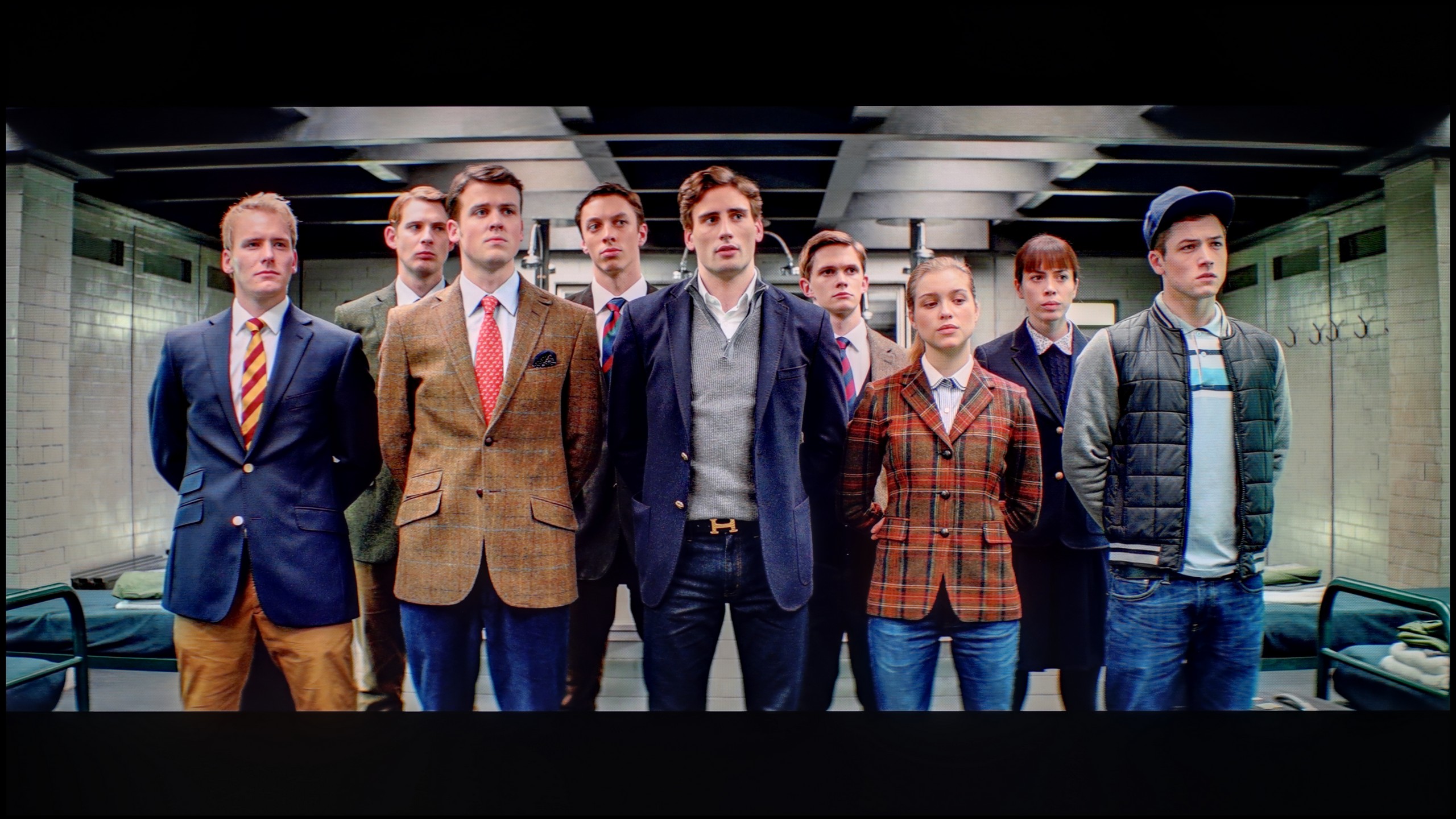
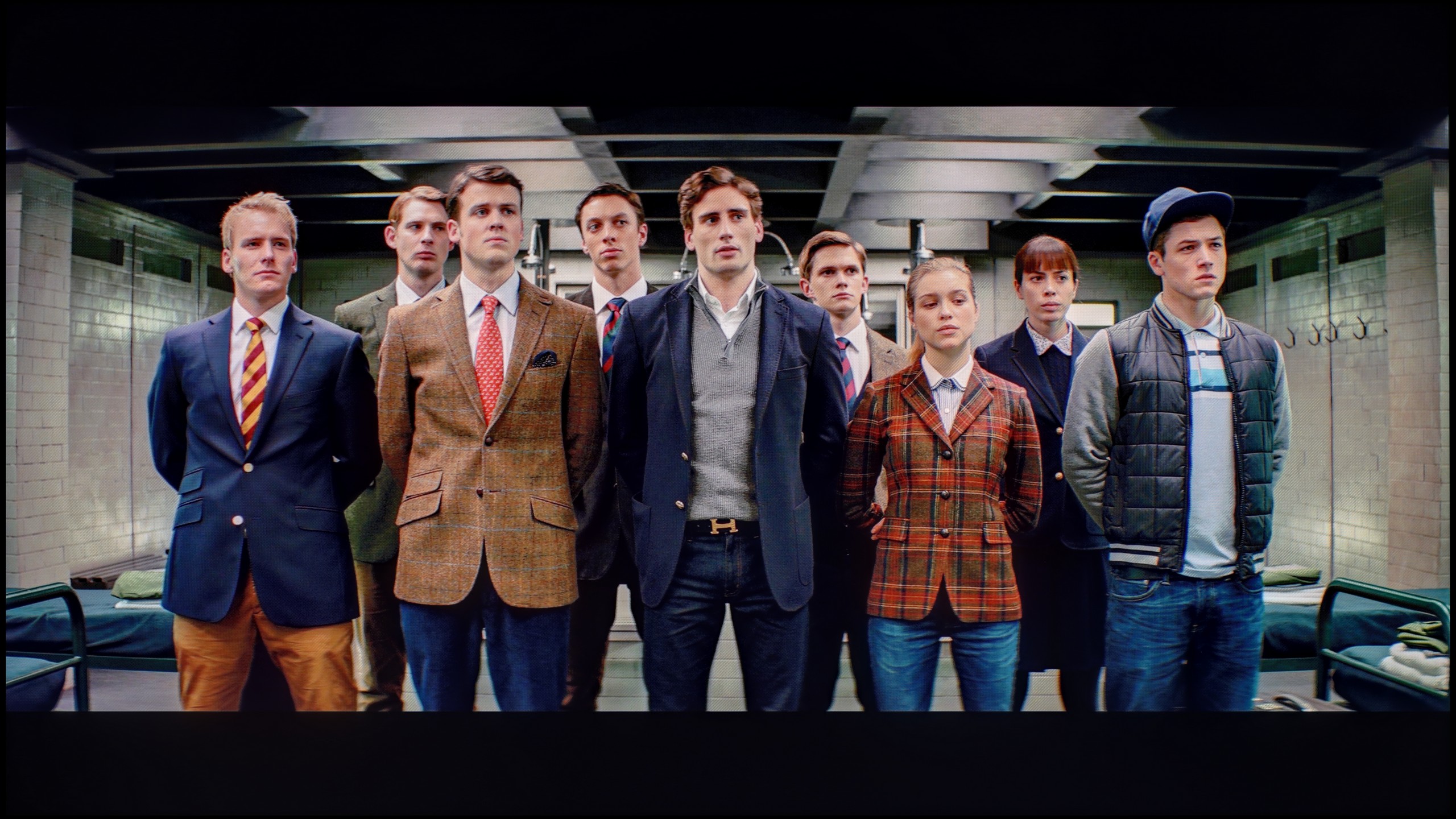
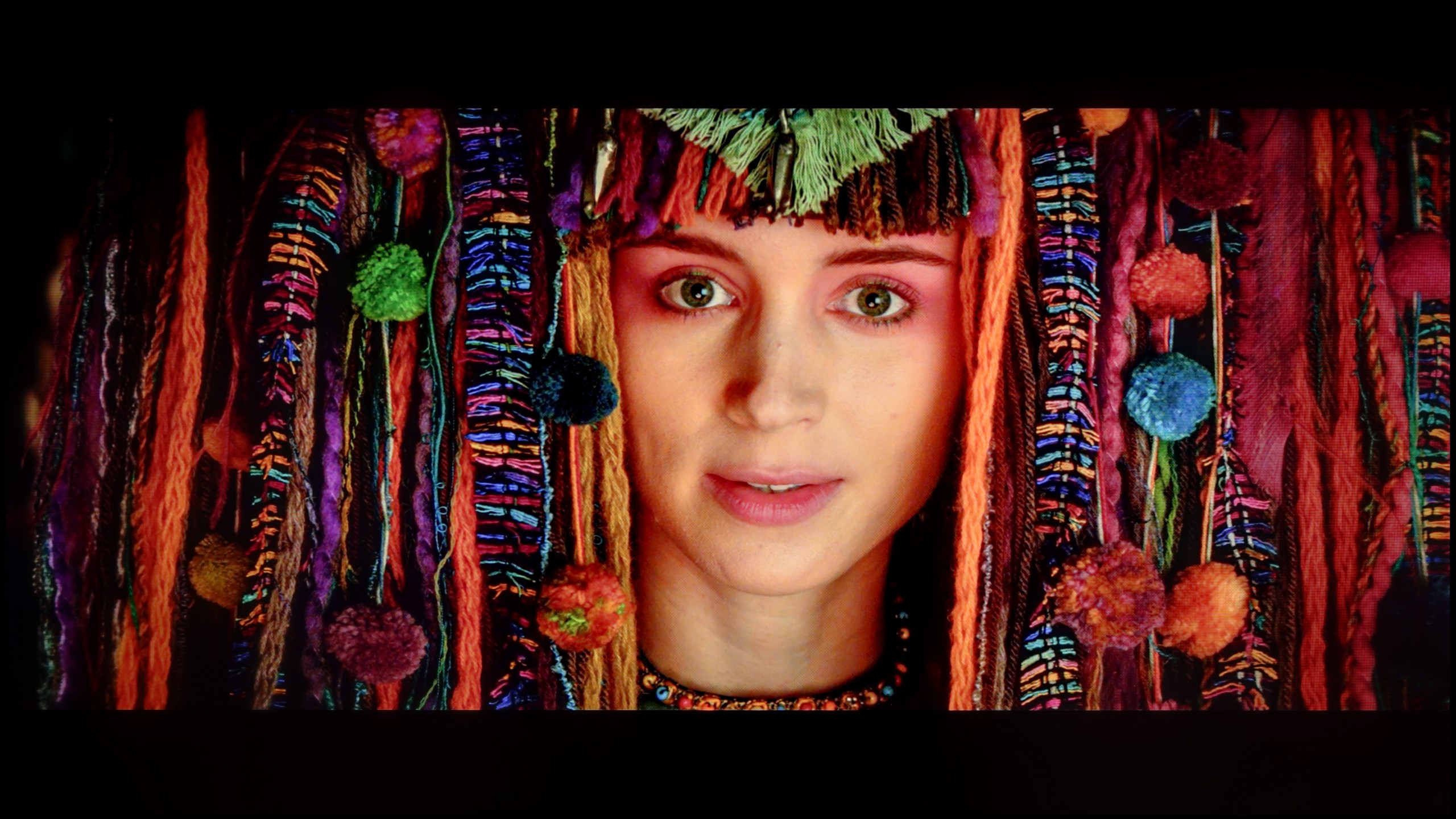
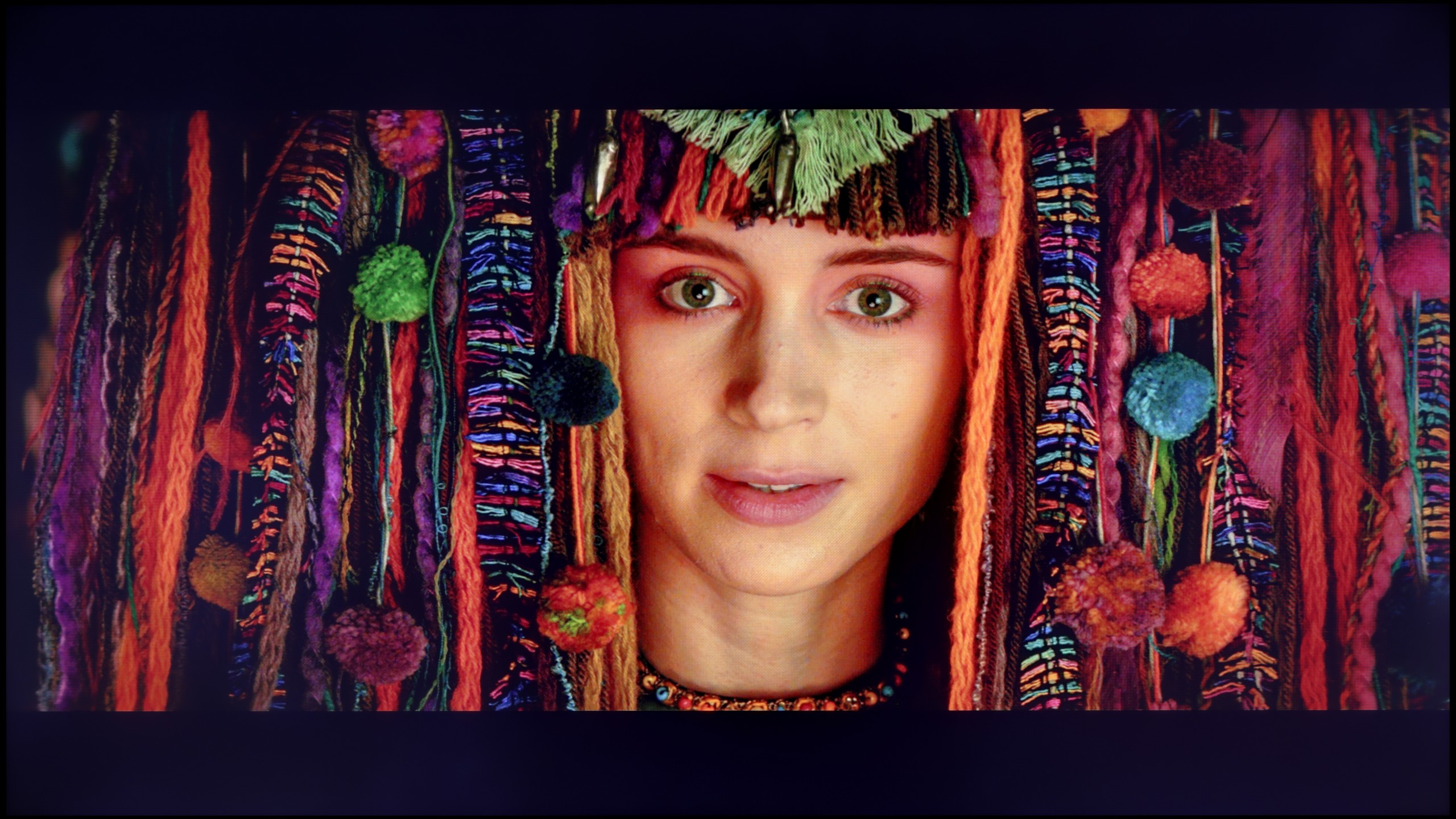
The calibration of the Movie mode brought really good results, especially regarding SDR content. The white balance was successfully adjusted, which gave the image a natural look – it appeared almost reference-level. The colors were well-saturated, and the overall perception of the content improved significantly. Unfortunately, when we moved to HDR materials, the well-known problems from the U7Q model returned. The TV still tends to “do things its own way,” which is evident from the analysis of the EOTF brightness characteristic – despite calibration, the E8Q still dimmed small details in the shadows, while the bright areas of the screen could sometimes be excessively boosted. In practice, this means that in darker scenes, some of the tiniest details could simply disappear. Although it must be admitted that the entire calibration process brought a lot of good, not everything can be circumvented – even with the use of professional tools. The E8Q can impress with its picture, but in HDR content, its design limitations become noticeable, and it is worth keeping this in mind.
The calibration allowed us to extract significantly more from the Bravia 3 than we could have expected at the beginning. Most importantly, we managed to address the deficiency of blue, which previously caused a noticeable warming of the image. After a slight adjustment in the white balance, most of the errors in the Color Checker measurements for SDR content practically disappeared. The shades of white gained naturalness, and the brightness management in gamma stabilized to a level nearly ideal, not exceeding the threshold of human eye perception. One can therefore confidently say that in SDR content, after a few adjustments in settings, the Bravia 3 performs really impressively. Much worse, though still definitely better than before calibration, is its performance with HDR content. The white balance has been brought under control, but the limitations of the IPS panel are insurmountable. The lack of local dimming means that even the smallest elements can be overexposed, which is immediately noticeable. Color-wise, the effect is also improved, although far from perfect – many errors still exceed four, or even five delta E units, meaning they remain visible to the human eye. It was already clear that the Bravia 3 is not a television designed to impress with HDR quality. Nevertheless, it is gratifying that in SDR content, after calibration, the image can look truly great, and in this category, the television surprised us positively.
Smoothness of tonal transitions
9.9/10
9.1/10
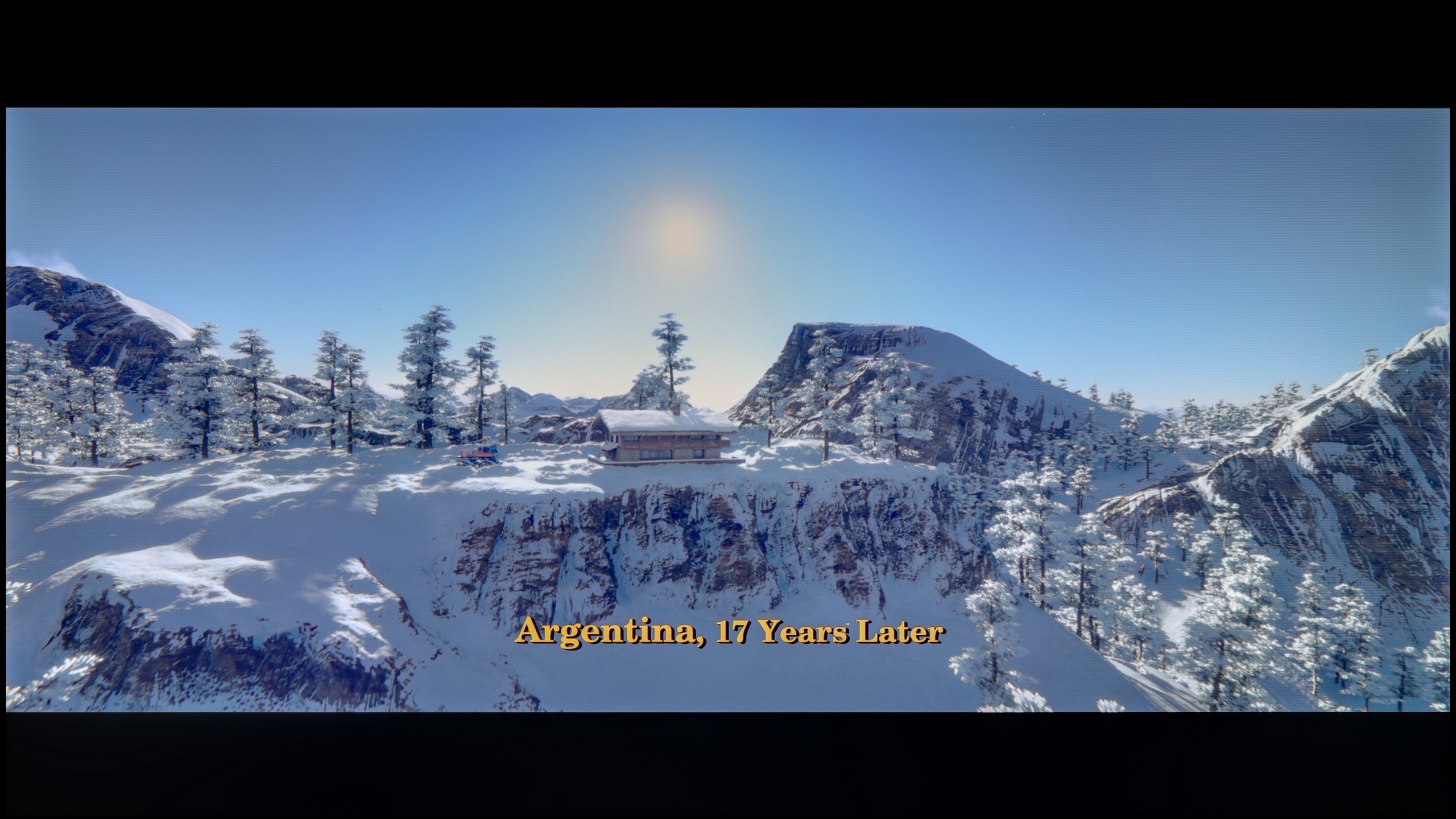
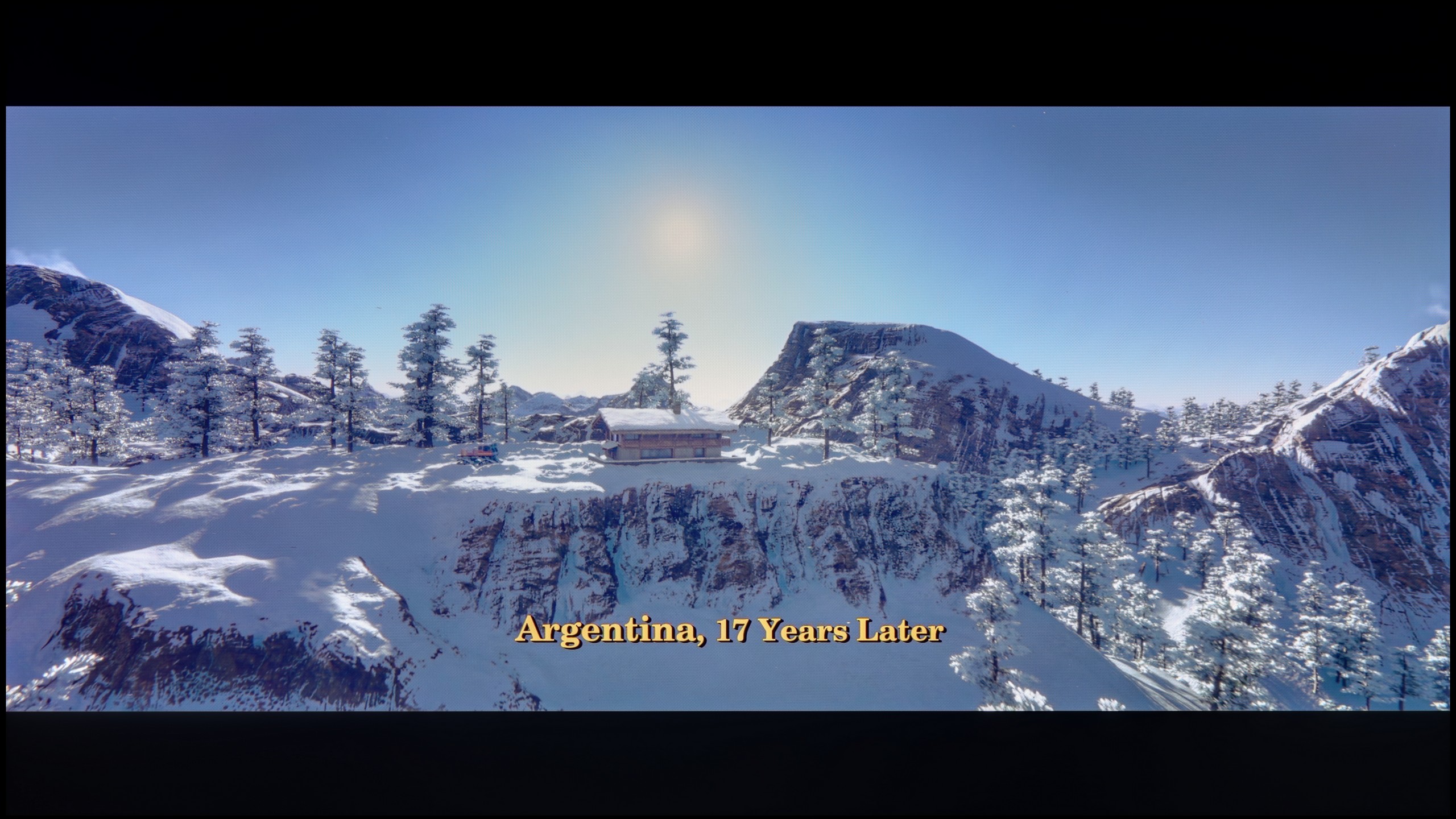


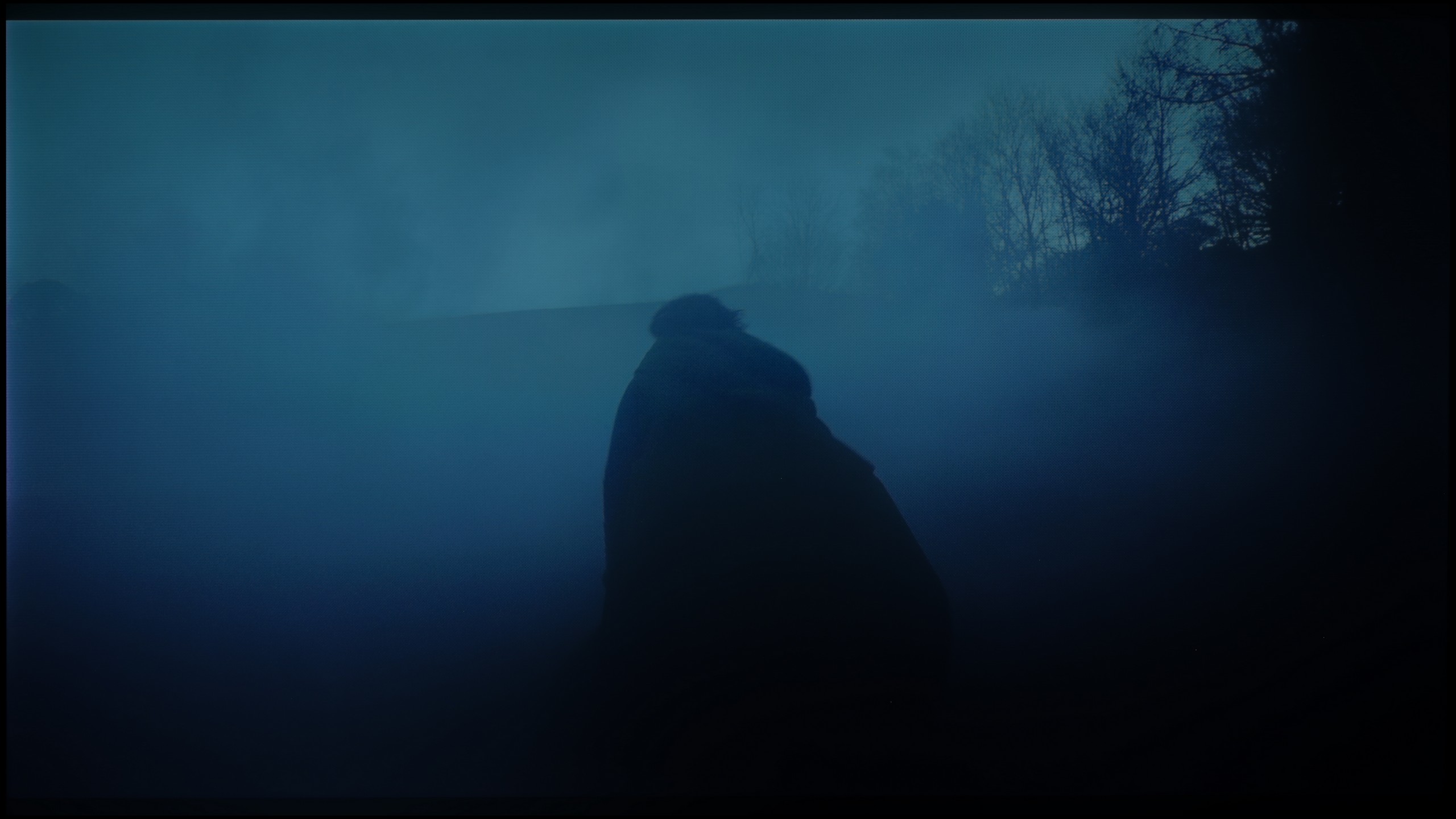
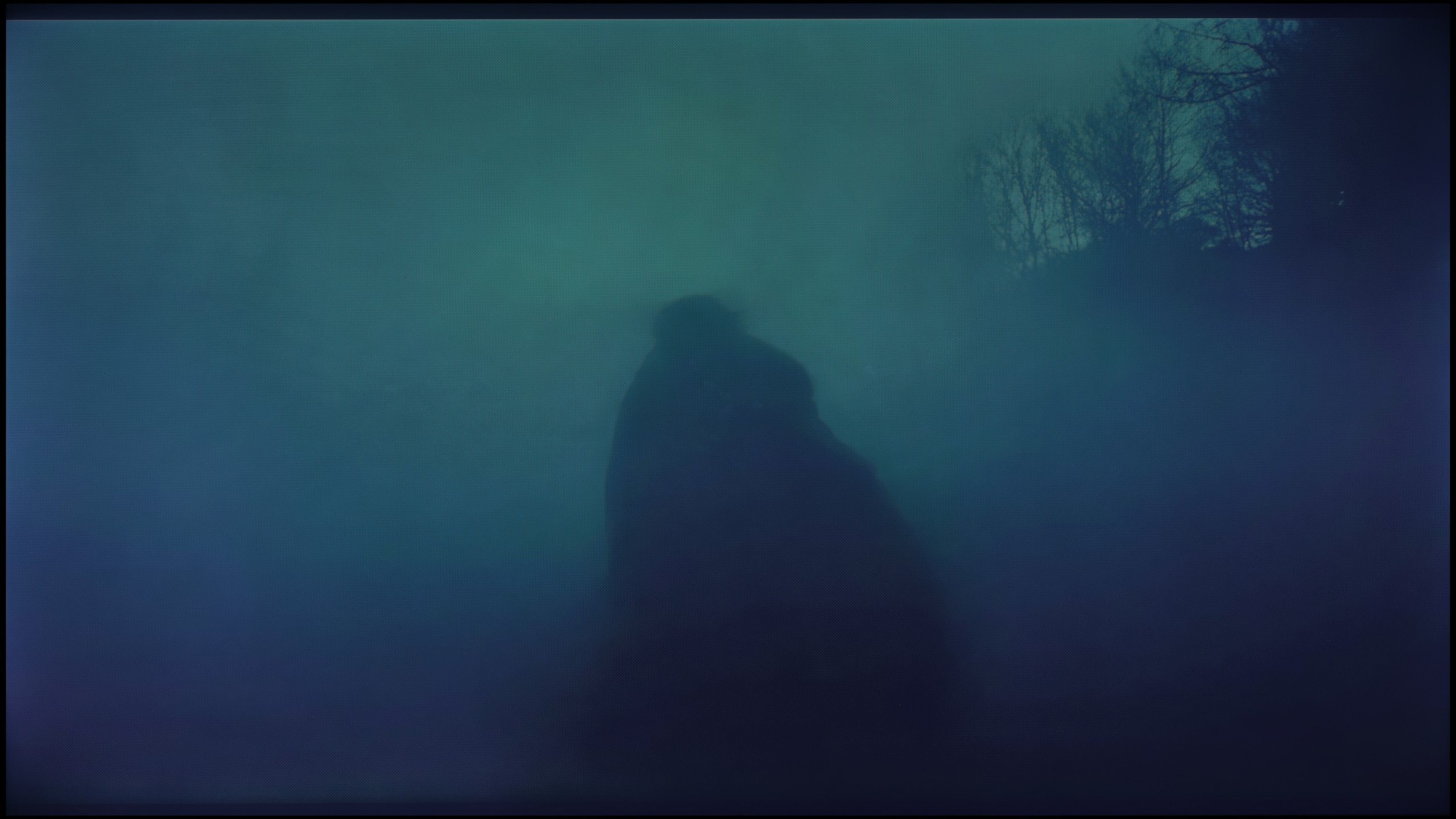
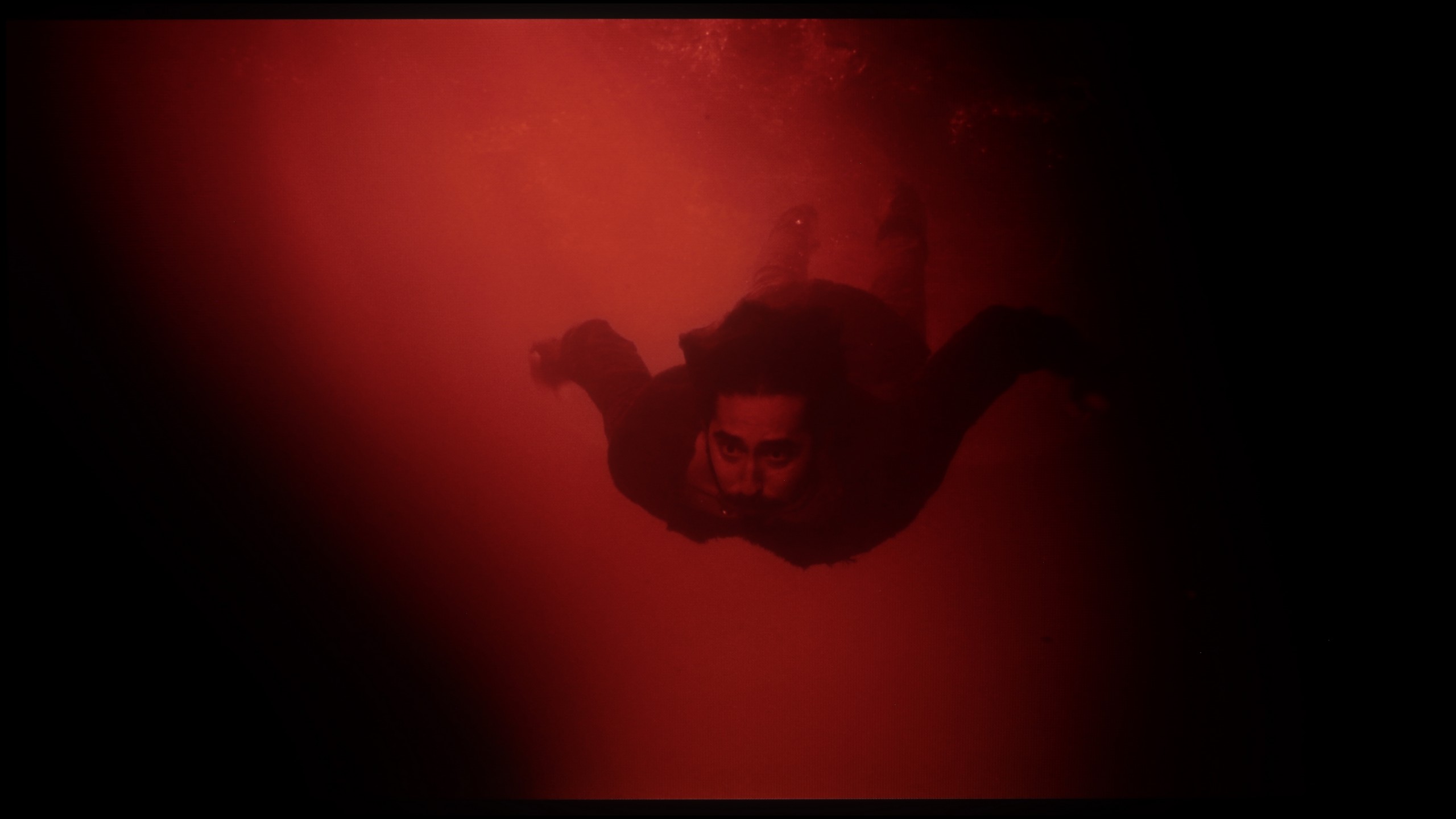
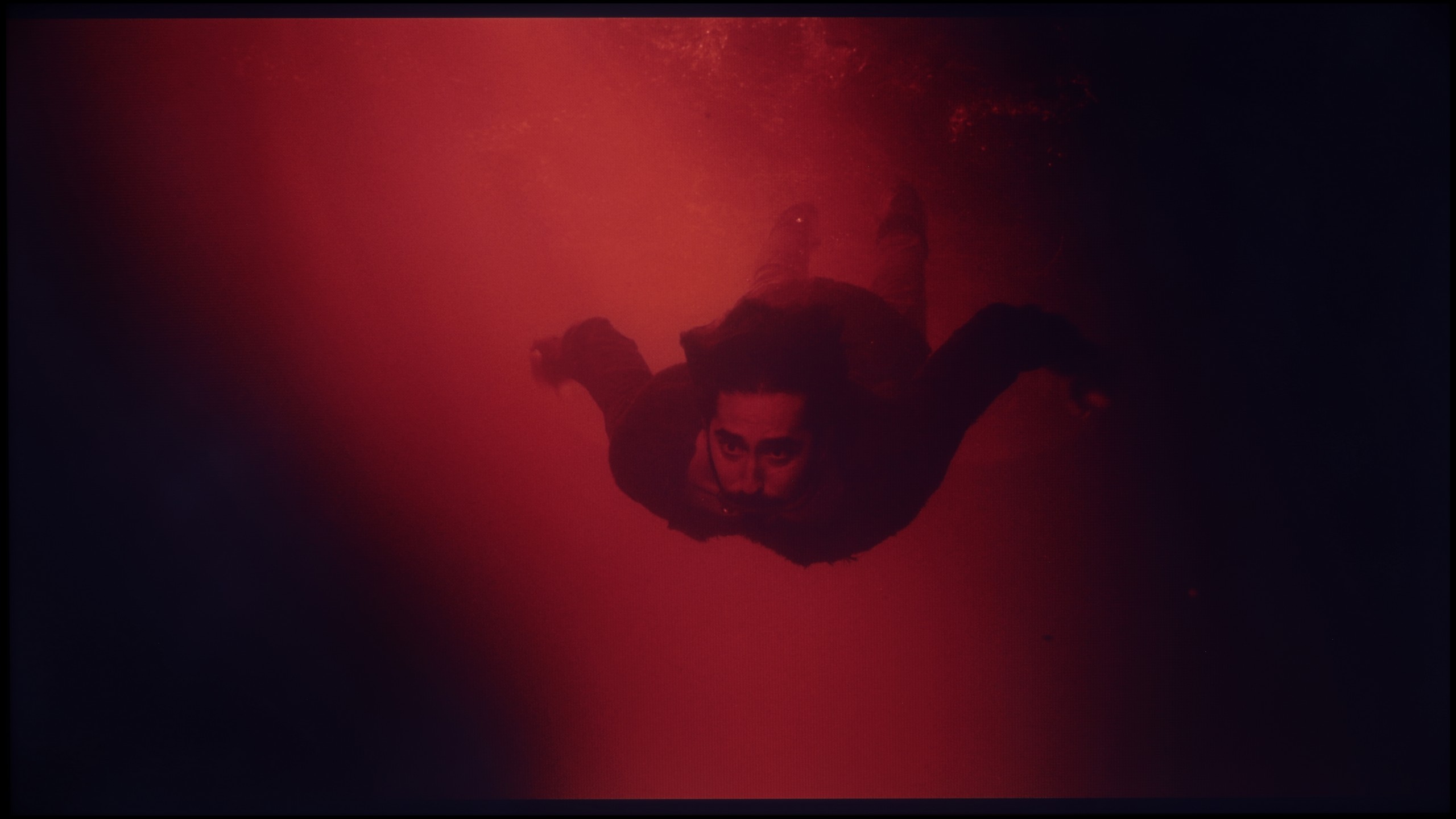




In this category, the Hisense E8Q truly shows its class. The transitions between colors are very smooth, with no "banding" or clear boundaries between tones. The image looks natural, and the color gradient is exceptionally well-executed – even in more difficult scenes. If there are any minor imperfections, they are subtle enough that they don't stand out. It's hard to find fault here – it looks almost exemplary.
In terms of the fluidity of tonal transitions, the impressions from the Bravia 3 with a VA panel are very similar to what we saw in the IPS variant; however, there is one crucial factor here – screen uniformity. The VA panel performs significantly better at maintaining image consistency, which immediately translates into a higher rating. This was most noticeable in scenes from the movie Green Knight. In the IPS version, strong brightening and vignetting practically made it impossible to assess the gradation itself, whereas in the 50-inch variant, this problem was greatly reduced. As for the tonal transitions themselves, the TV presents itself really well. In bright parts of the image, we did not notice any serious errors – colors combine smoothly, without creating artificial contours. In darker scenes, there are also no major issues with color gradation, and thanks to the more even backlighting, the image is much more pleasant to view than in the IPS panel version. So, one can say that this is one of those categories where the Bravia 3 in the 50-inch edition performs surprisingly well.
Image scaling and smoothness of tonal transitions
6/10
7/10
Smooth transition function
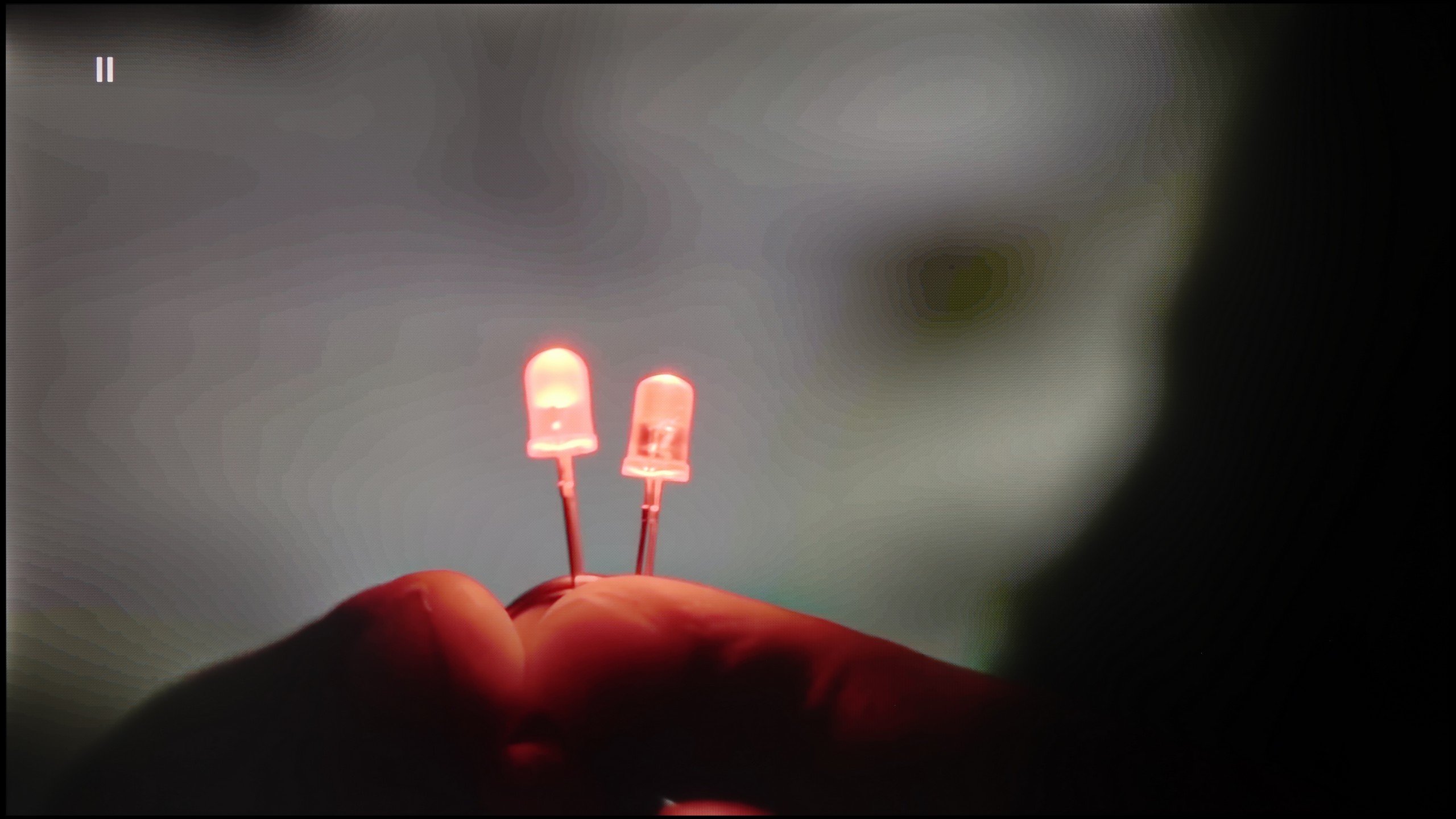
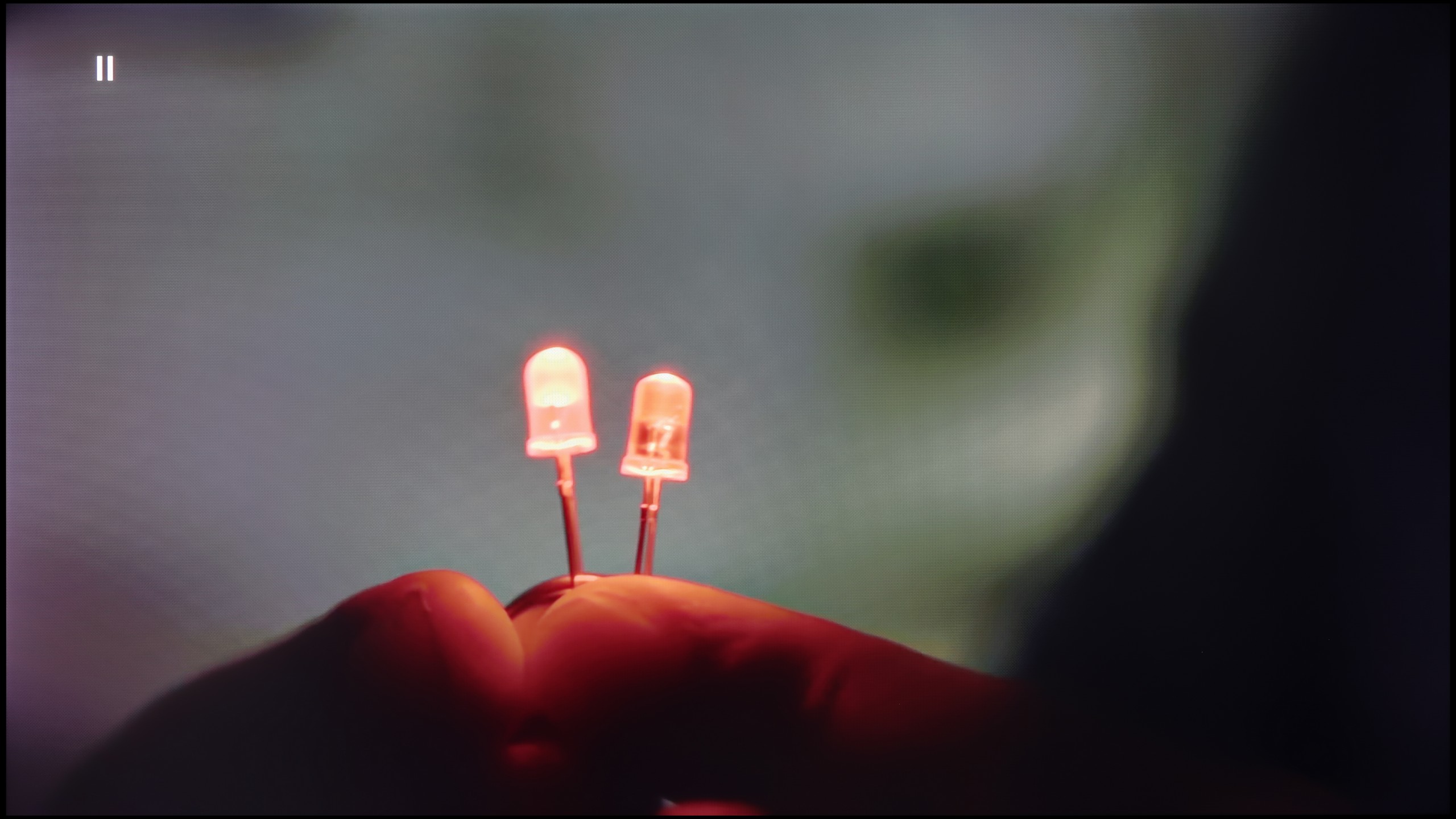
Image without overscan on the SD signal


In the case of older materials with lower quality, a gentle smoothing of tonal transitions is often useful. The Hisense E8Q, like the U7Q, has the "Smooth and Gradient Picture" feature, but unfortunately, its effectiveness leaves much to be desired. The “Low” setting is almost imperceptible in operation, while higher settings simply blur details instead of improving transitions. The good news is that the feature does not compromise the film grain, which allows it to maintain the image structure. On the plus side, the scaling is commendable. The television can fairly sensibly transform older content to a higher resolution—without artificially emphasizing contours or excessive sharpening. Though it does not match the best models in this category, it performs quite well for its class.
Bravia 3 brings something more to the Sony TV family than just a common name. It stands out primarily for its ability to enhance the quality of weaker materials thanks to the processor used. Of course, we won't find the advanced XR chip known from more expensive models here, but still, it must be admitted that the image at lower resolutions looked surprisingly good. The upscaling worked effectively, and most parts of the screen were free from the typical excessive edge jaggedness found in budget constructions. The feature that improves the fluidity of tonal transitions is also noteworthy. In the high setting, it works really well, effectively masking gradation imperfections without significant loss of detail. It does happen that the algorithm overly smooths elements that should remain sharp - for example, faces - however, in general, the effect is beneficial. The best results were achieved precisely at the highest setting, and this option could be recommended to people watching lower quality content.
Blur and motion smoothness
7.5/10
4.5/10

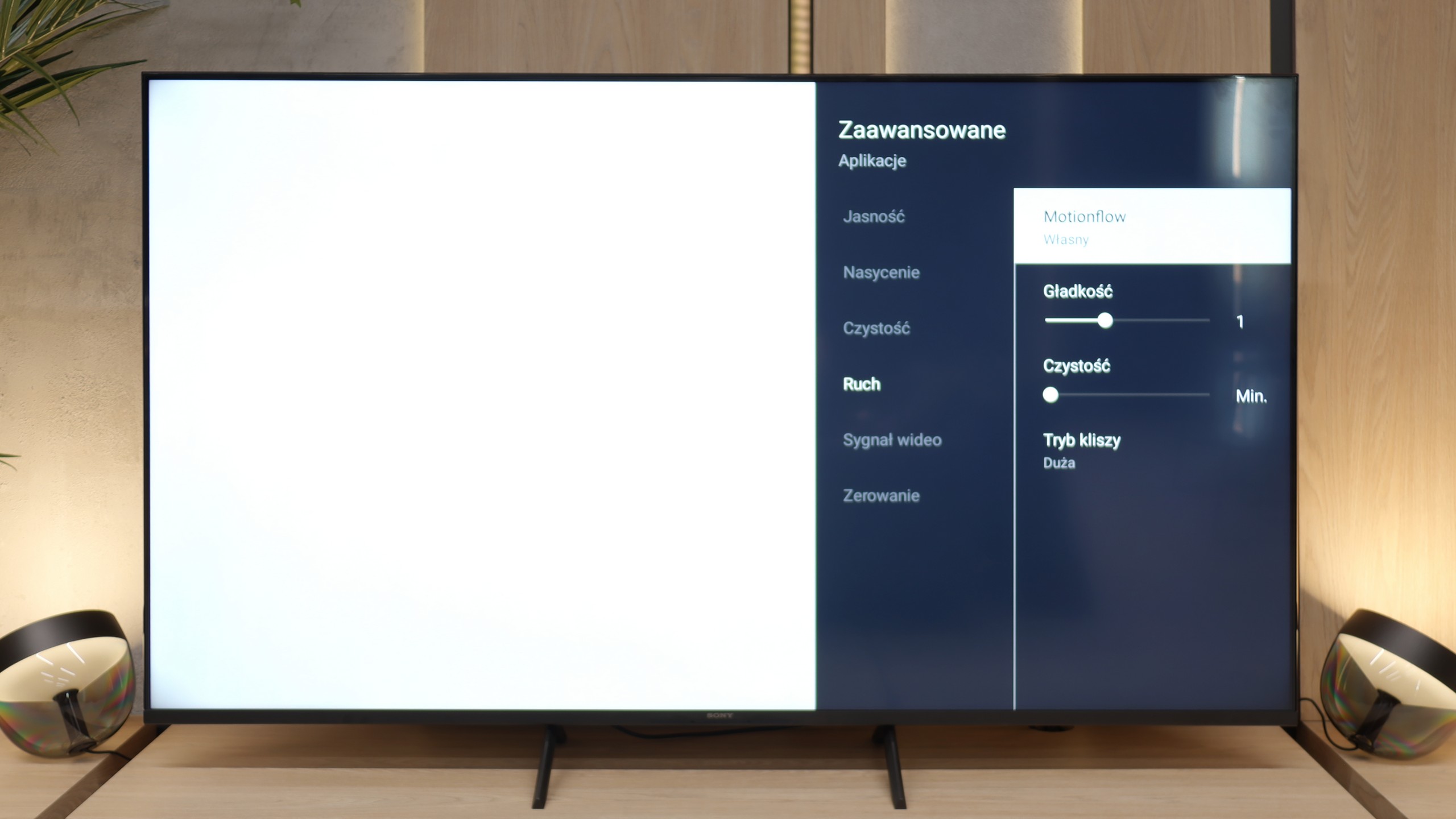
Blur (native resolution, maximum refresh rate):
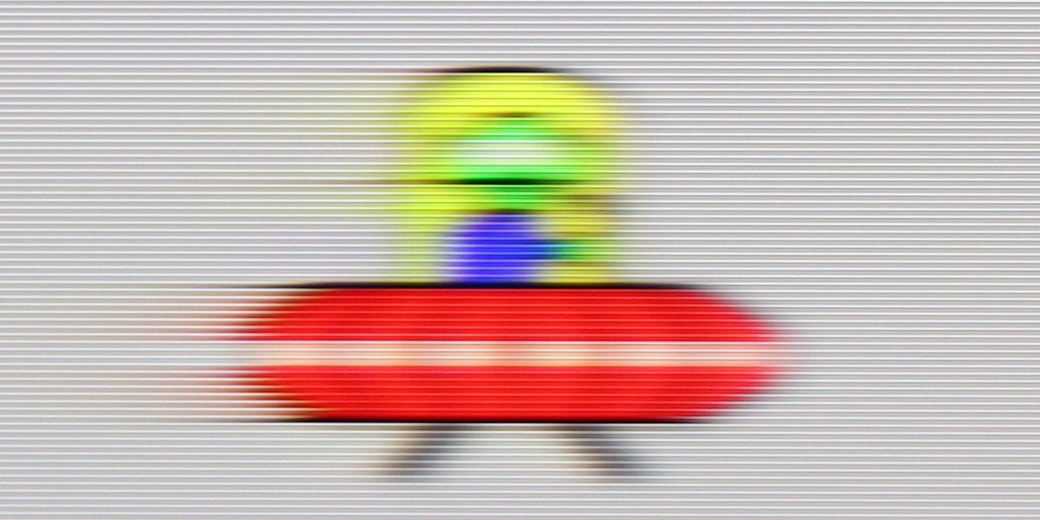
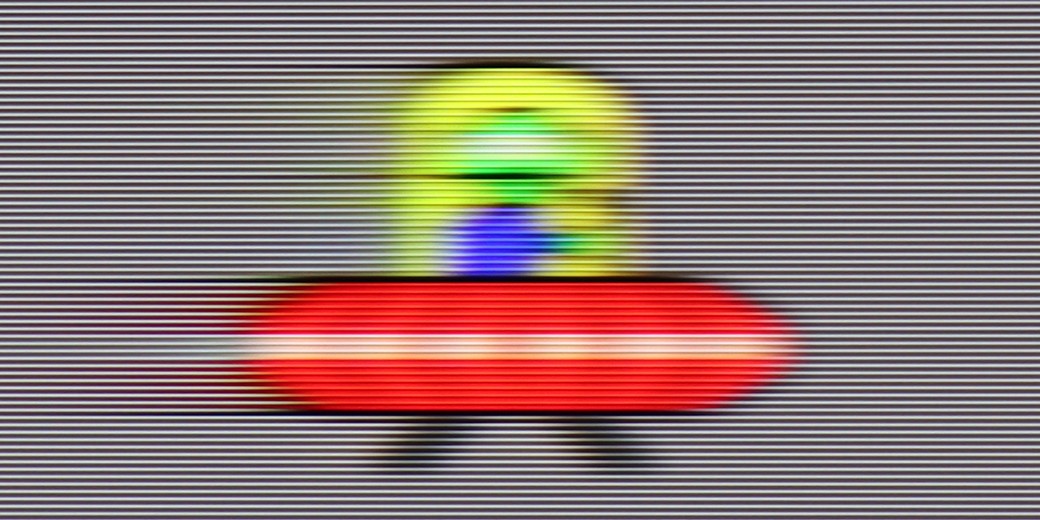
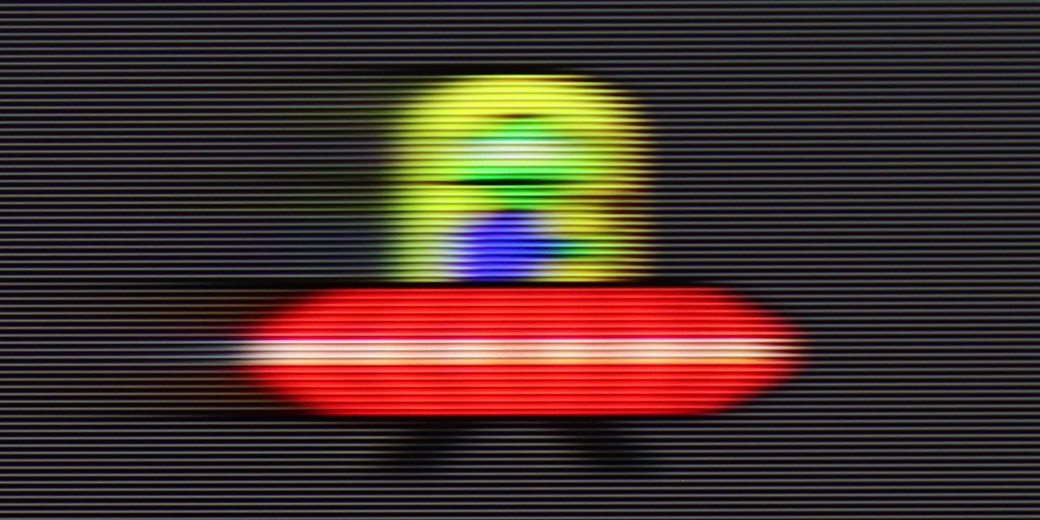
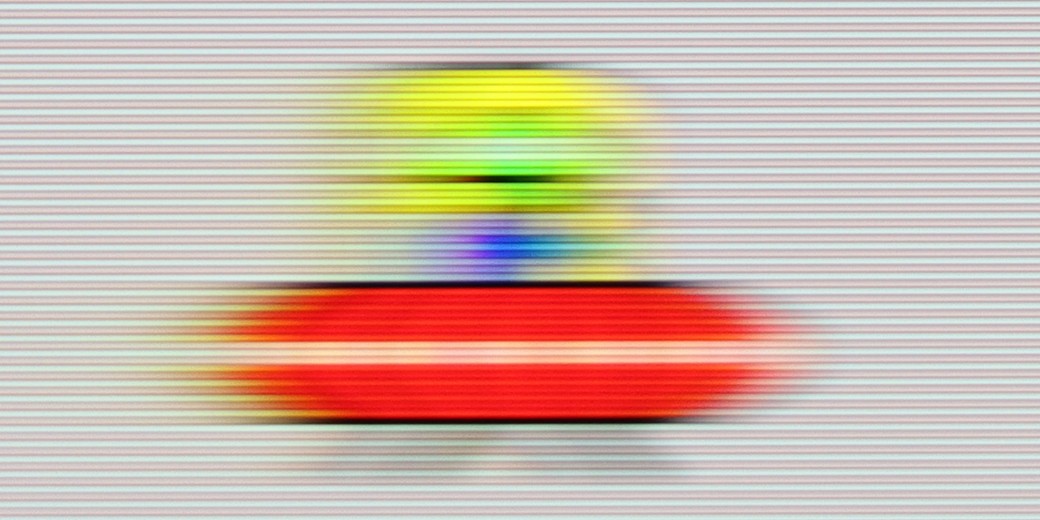
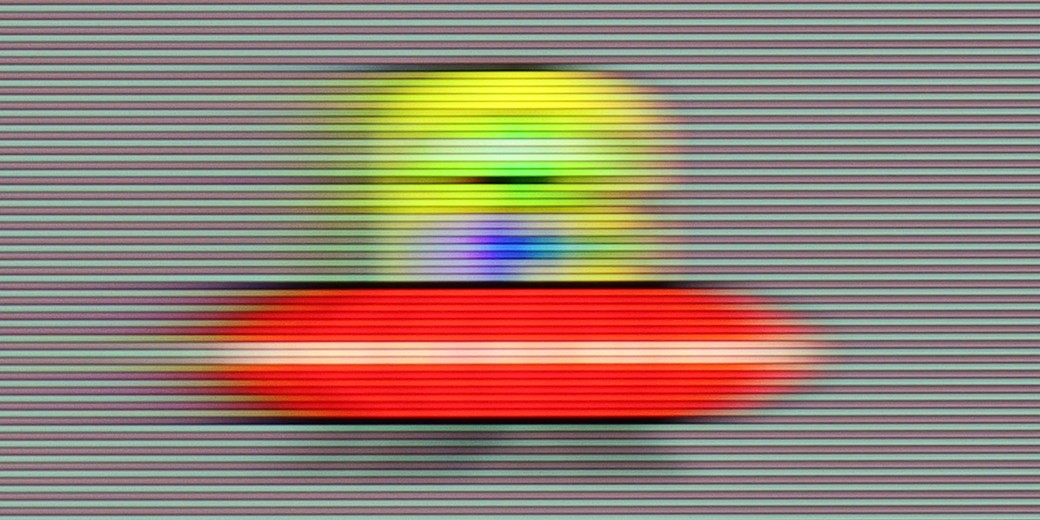
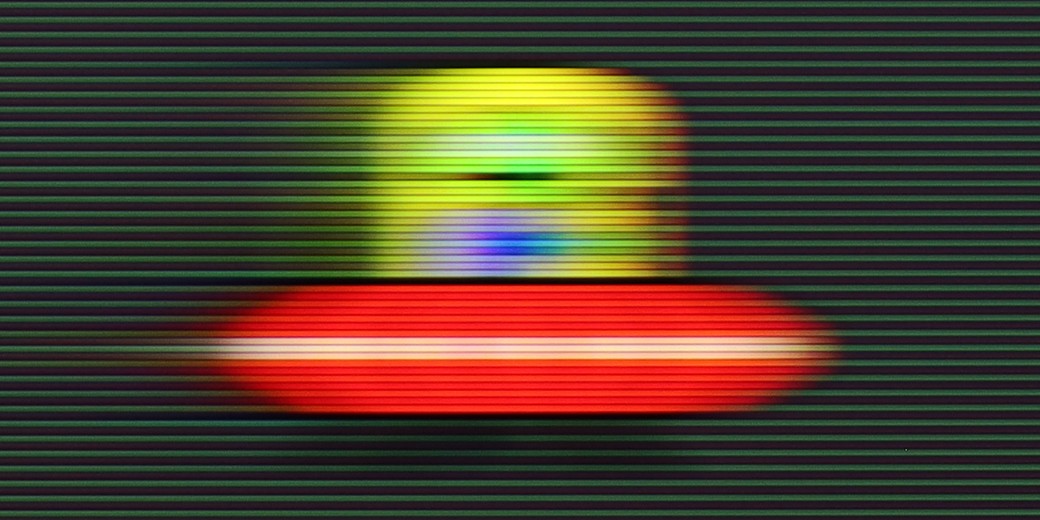
Blur (BFI function enabled):
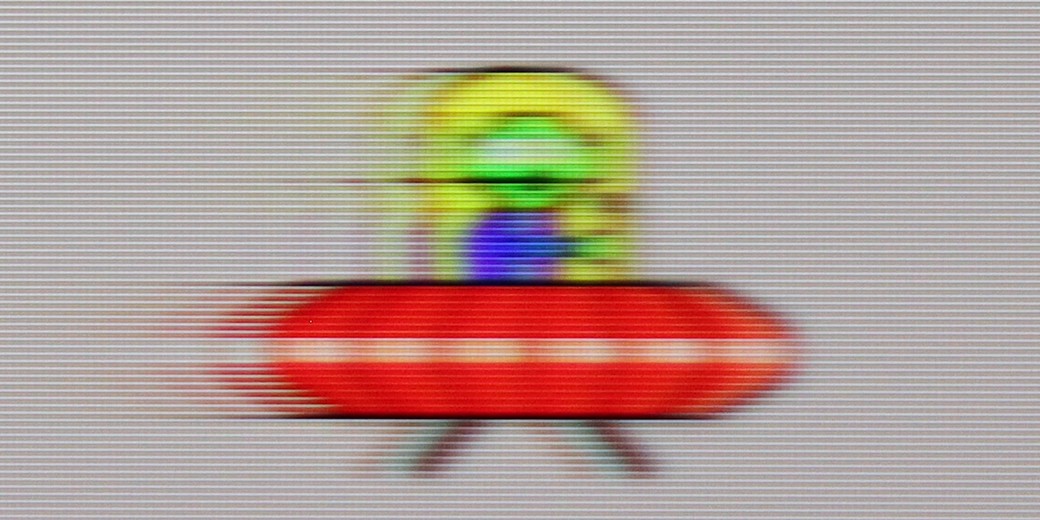
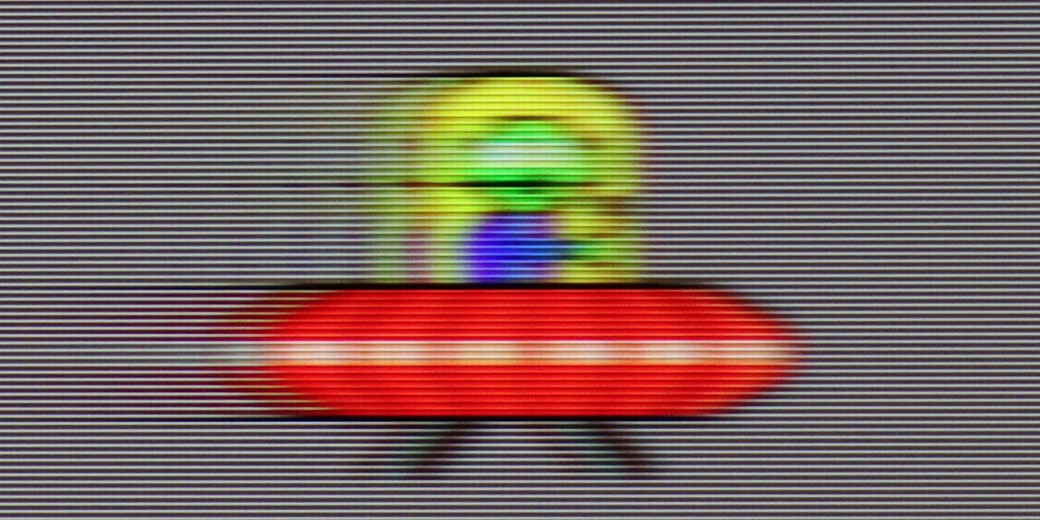
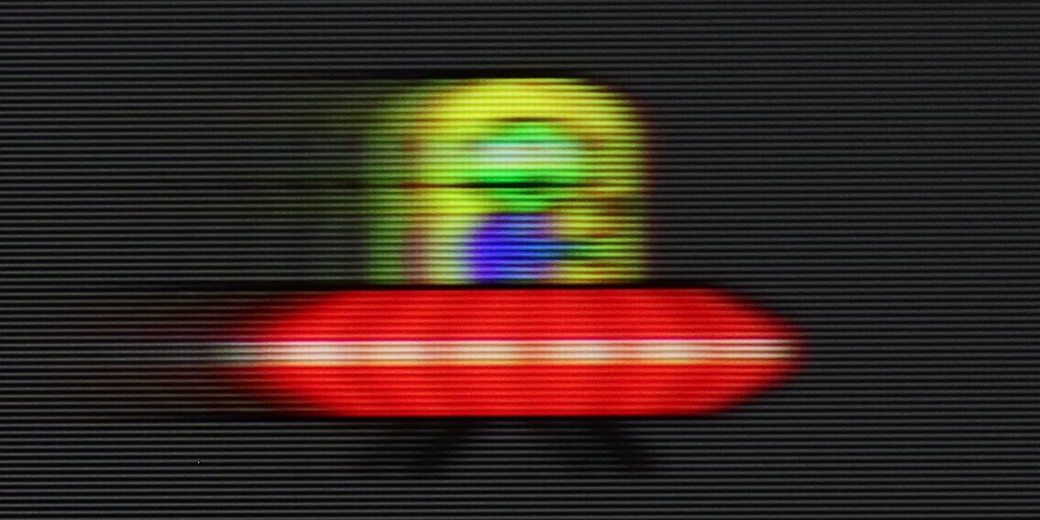
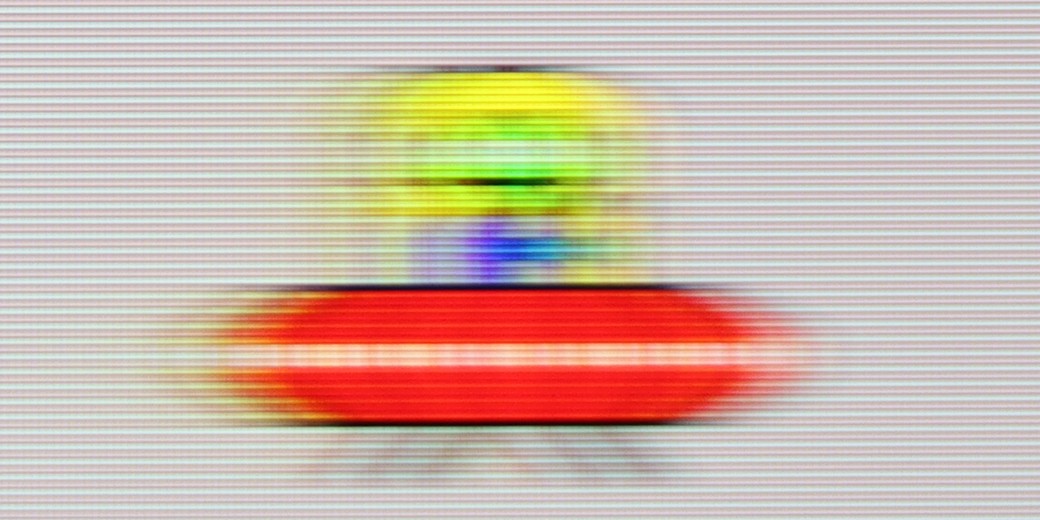
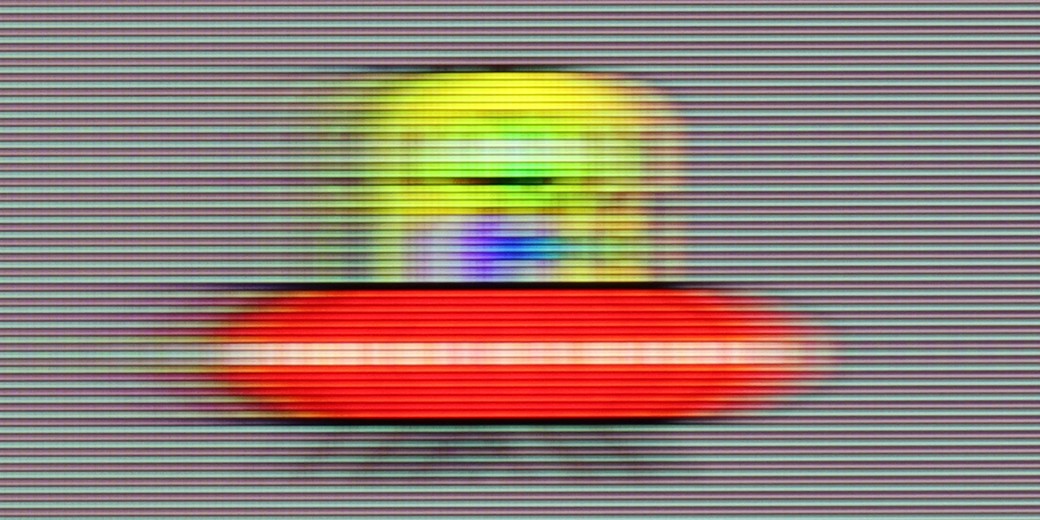
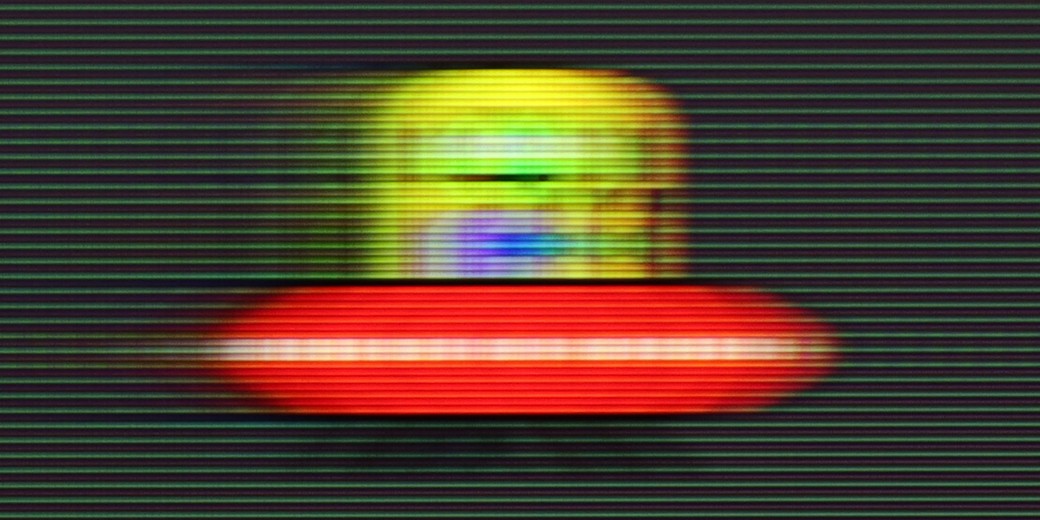
Smużenie (4K 120Hz):
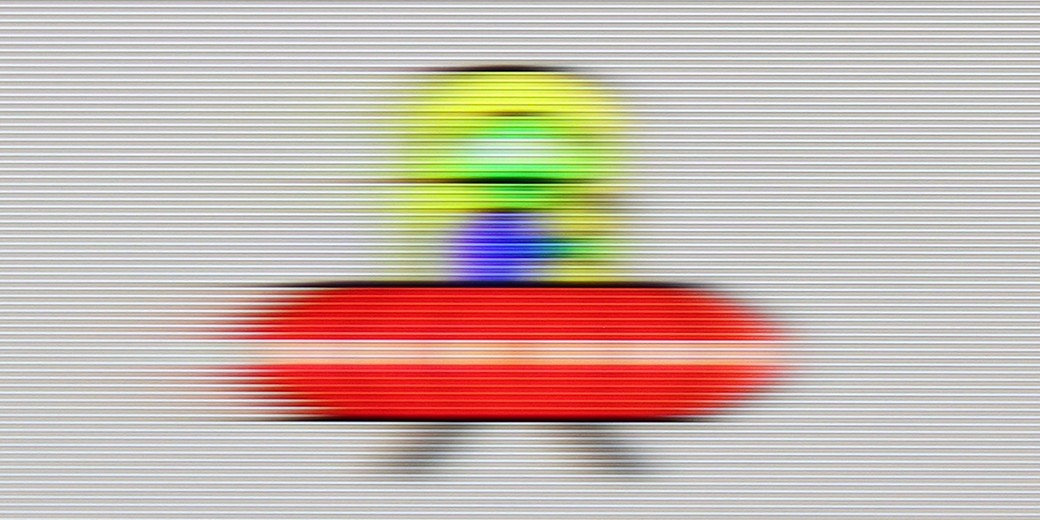
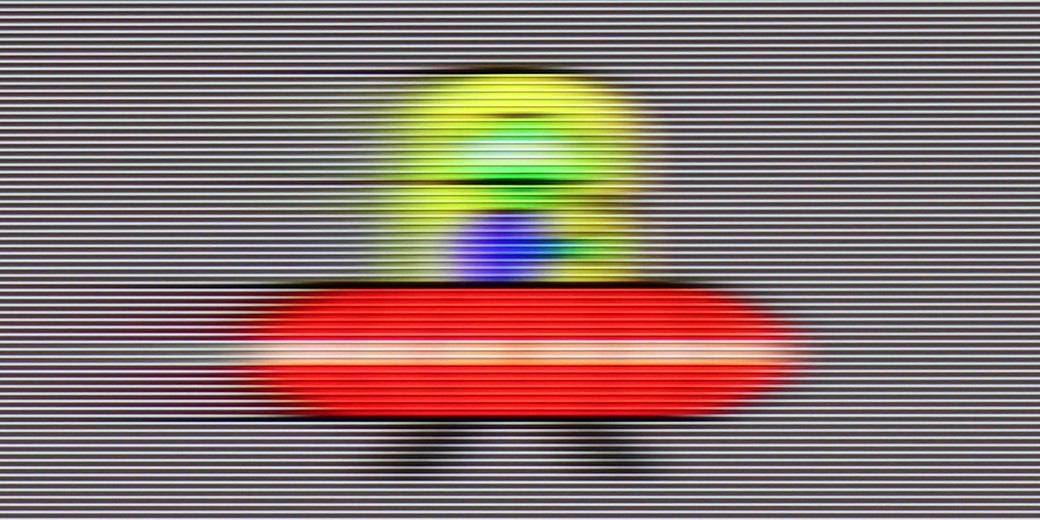
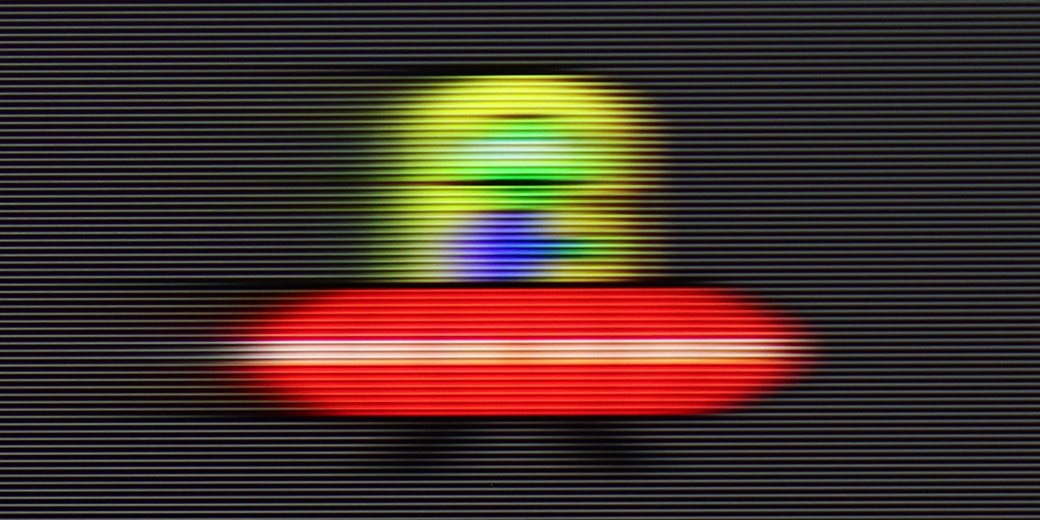
Smużenie ():
Like the U7Q, the E8Q model is a fast television designed for dynamic content. It supports 144 Hz refresh rates in 4K resolution, and if for some reason someone is still gaming in Full HD, it can achieve even 240 Hz. This is a significant advantage, especially for PC users looking for maximum fluidity. In everyday use, the television performs very well. The "Ultra Motion Smoothness" mode provides us with two sliders, allowing for personalized image settings – whether it’s more cinematic with preserved film frames or heavily smoothed, almost "series-like." It’s good that the manufacturer gives a choice here instead of imposing one style. On sports materials, live broadcasts, or in games – motion appears clean and stable. Sure, it’s not at the level of OLEDs, but for this price range, the E8Q performs really well.
The fluidity of motion has never been a strong point of televisions equipped with 60 Hz panels, and the Bravia 3 is no exception. Nevertheless, Sony has added something that may appeal to those who are more sensitive to the way images are displayed. We are talking about the proprietary motion smoother, Motion Flow, which gives users a lot of adjustment options. Thanks to it, the image can become smoother, almost theatrical, or you can stick with a more cinematic style characterized by the jaggedness that many people simply associate with the filmic atmosphere. These features work for content with lower frame rates, such as movies and series recorded at 24 or 30 frames per second, which are the materials we encounter every day. This is where the motion smoother proves to be one of the most important features in everyday use of the television, and here the Bravia 3 performs really well.
Console compatibility and gaming features
8.5/10
4/10
- ALLM
- VRR
- VRR range48 - 240Hz
- Dolby Vision Game Mode
- Correct implementation of HGIG
- 1080p@120Hz
- 1440p@120Hz
- 4K@120Hz
- Game bar
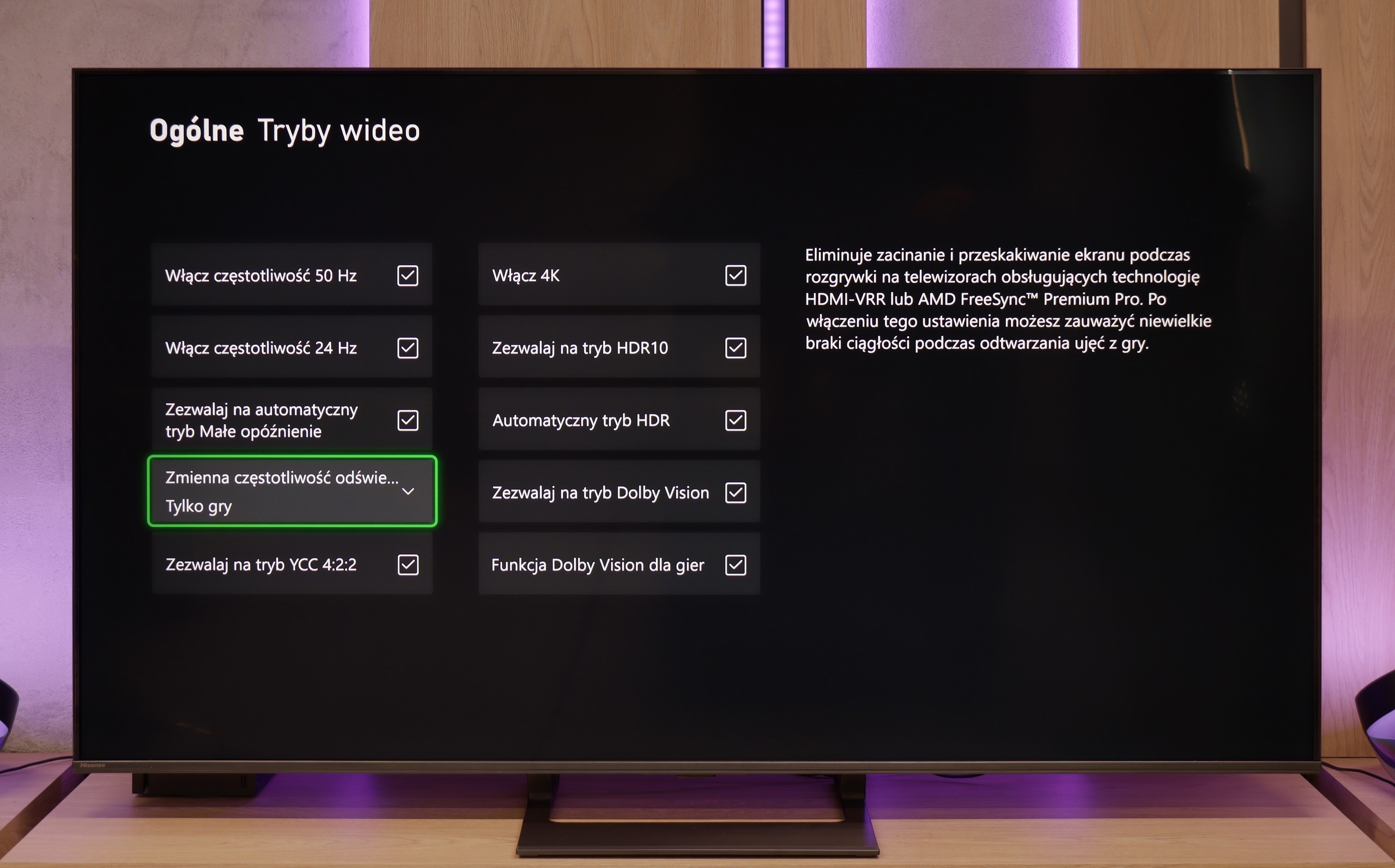
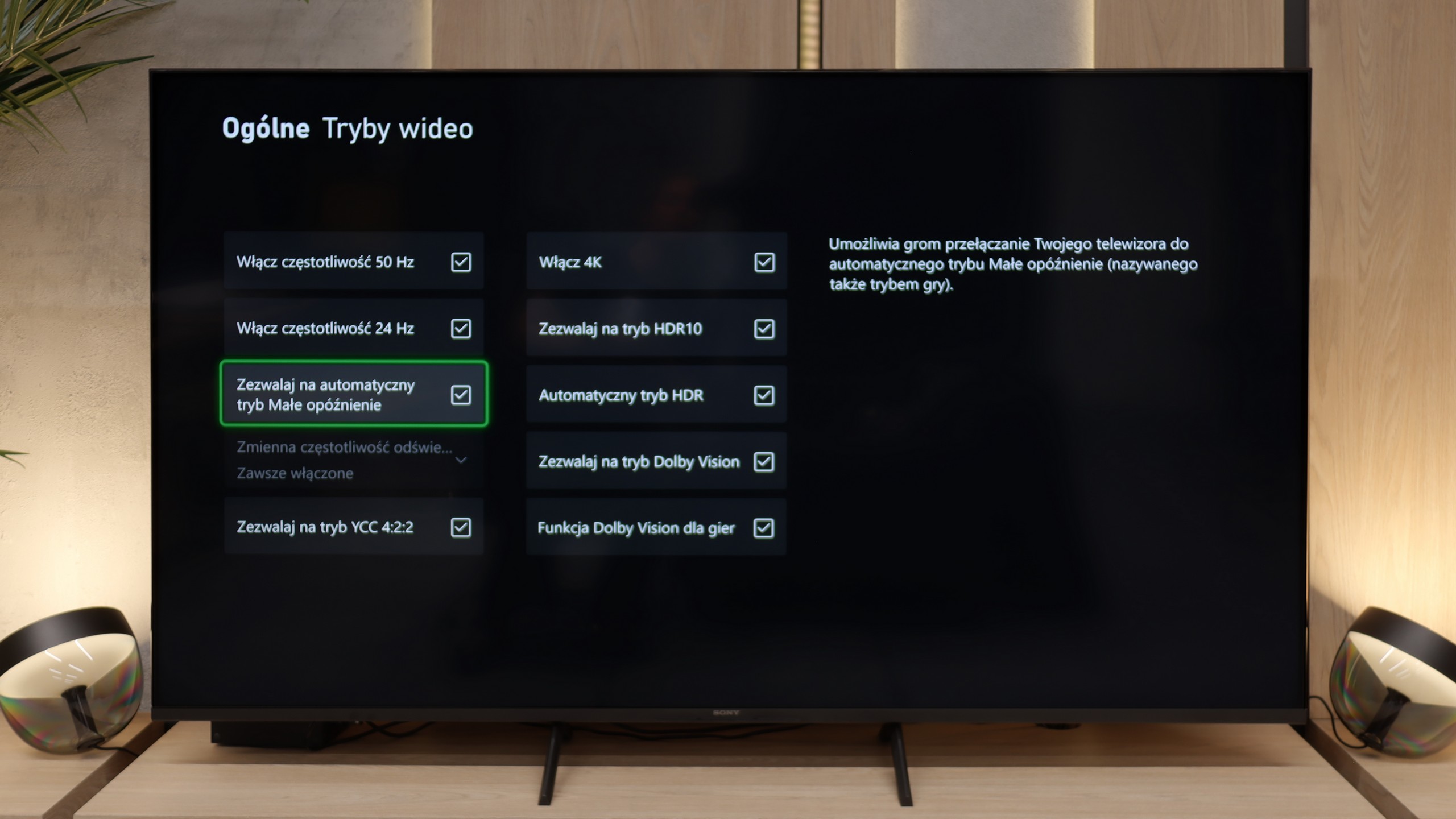
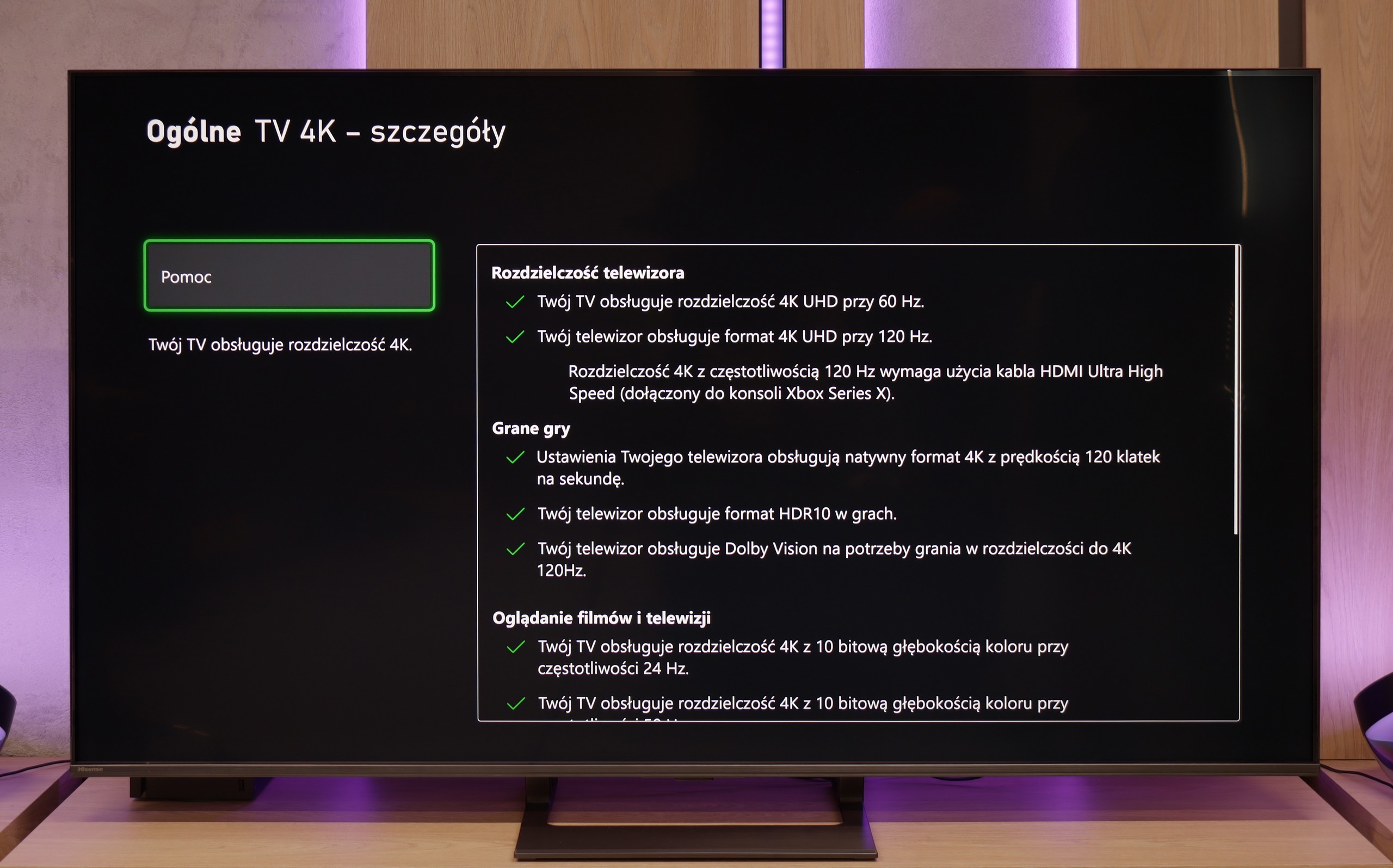
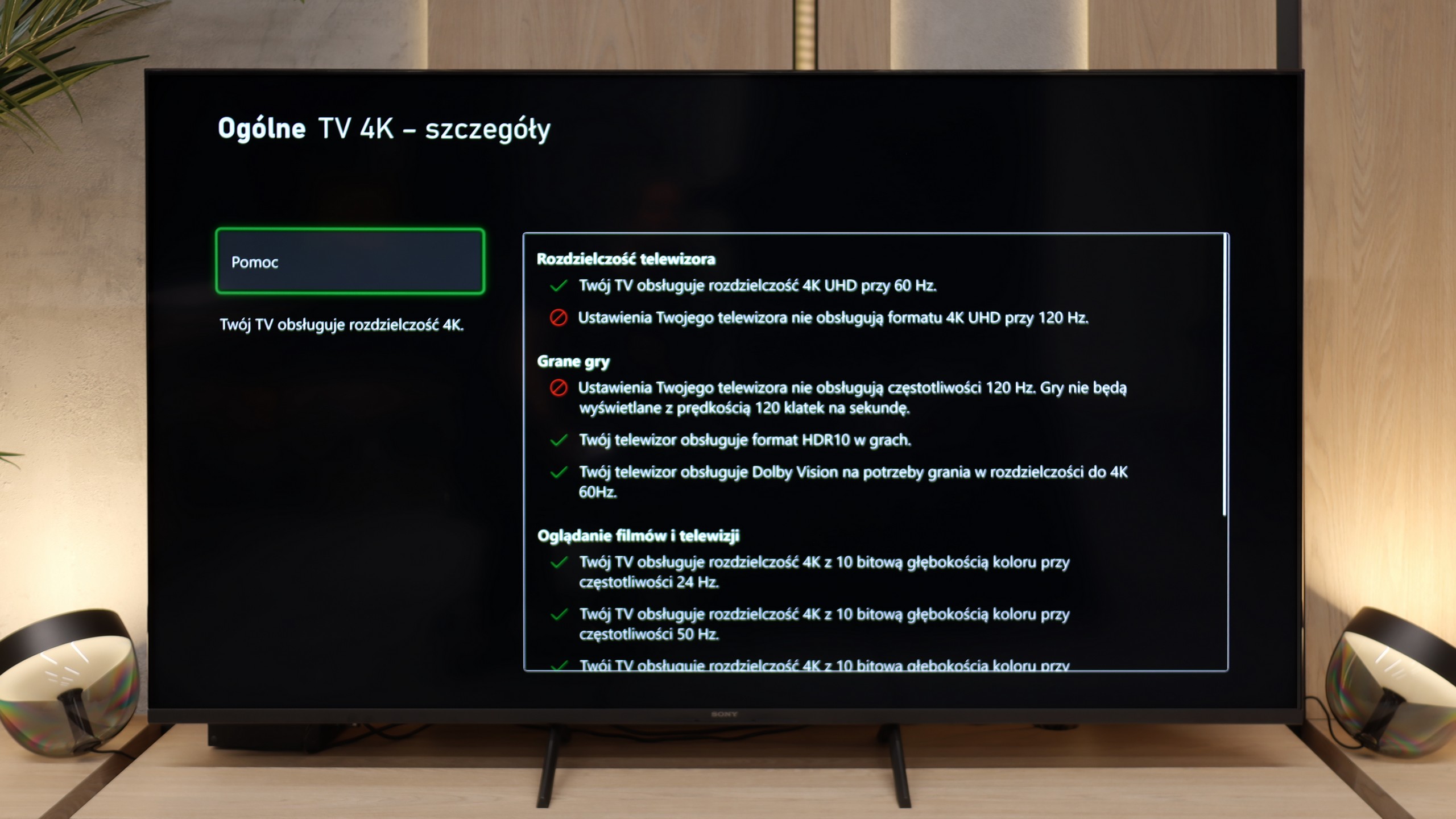
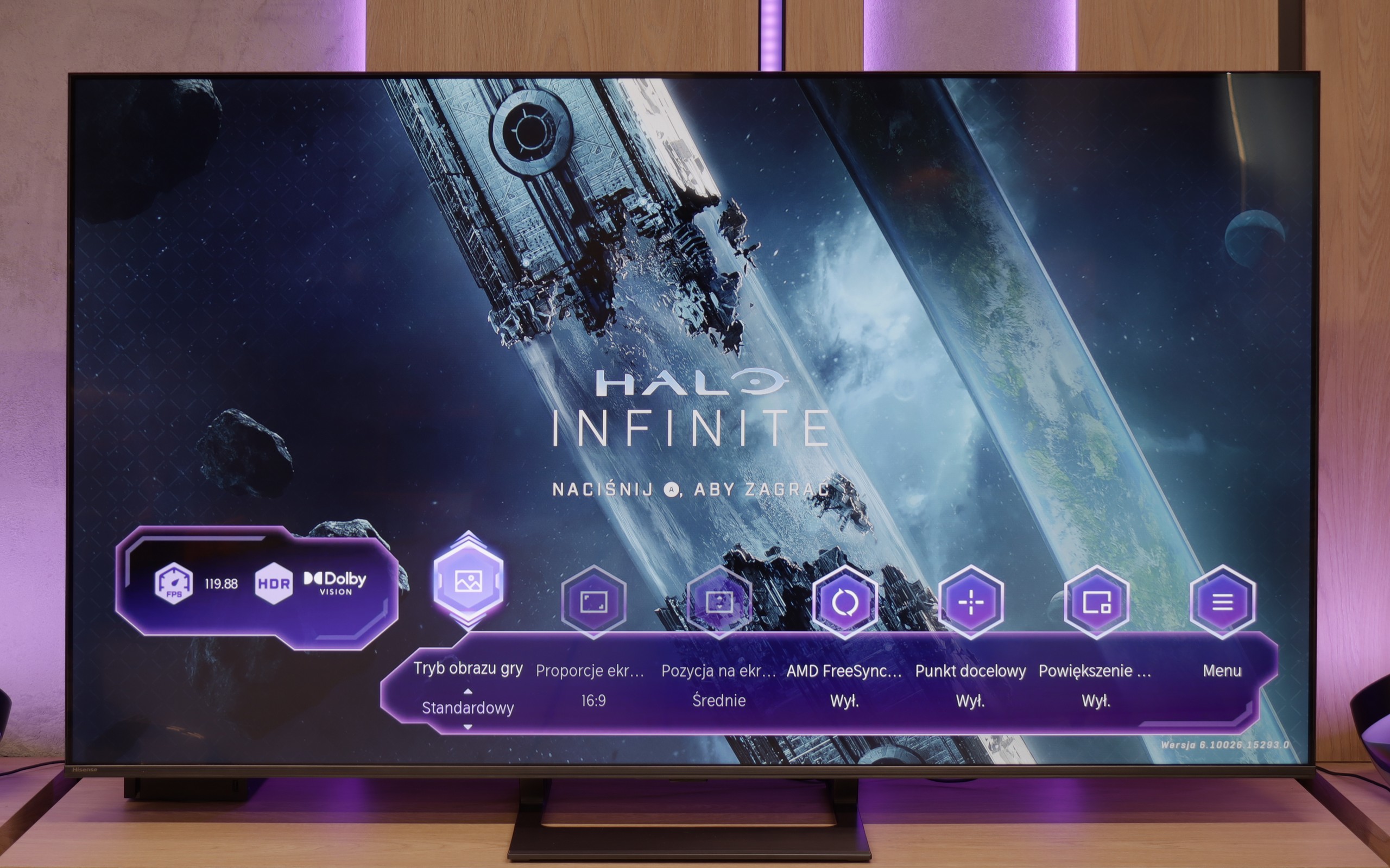
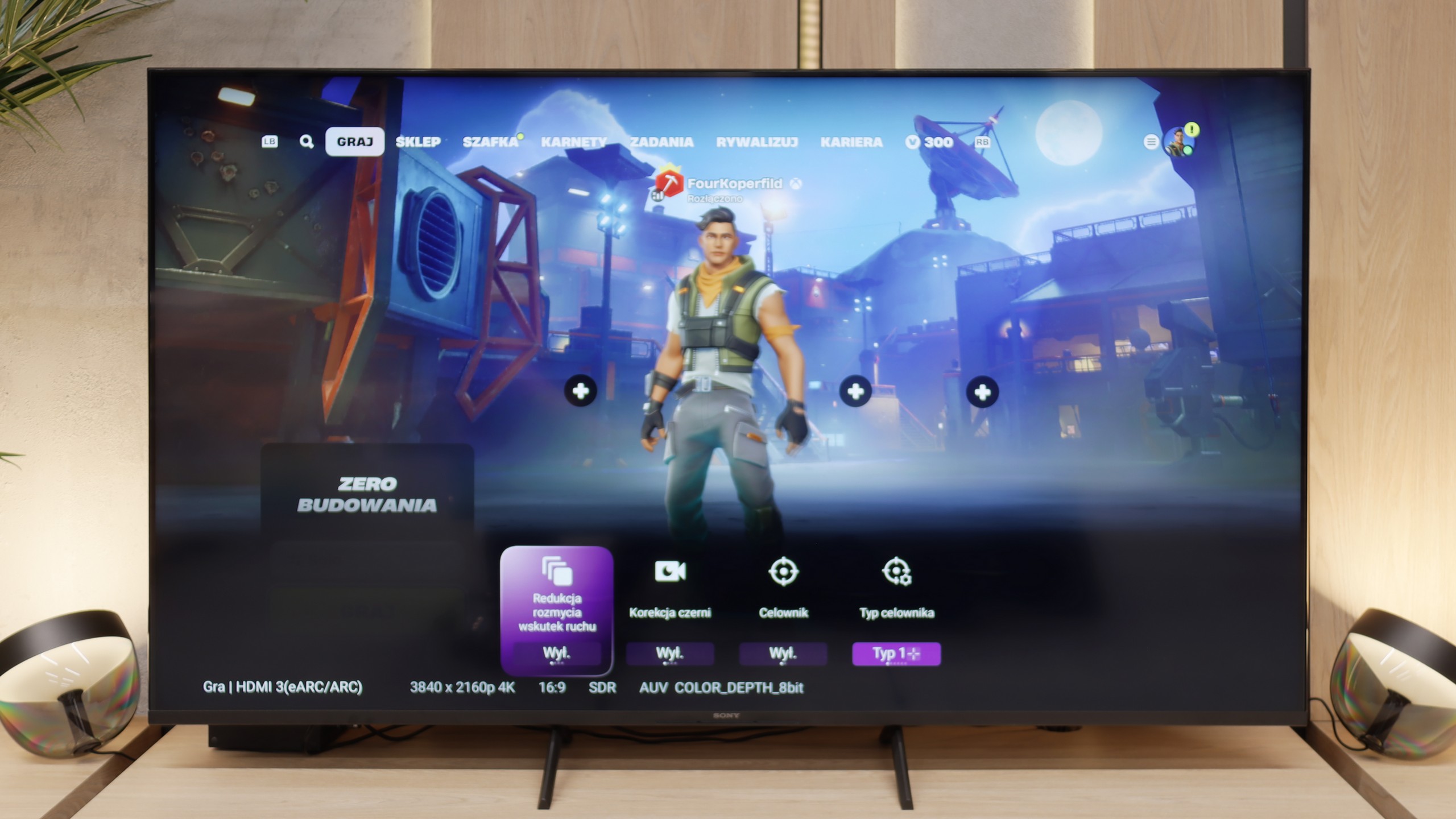
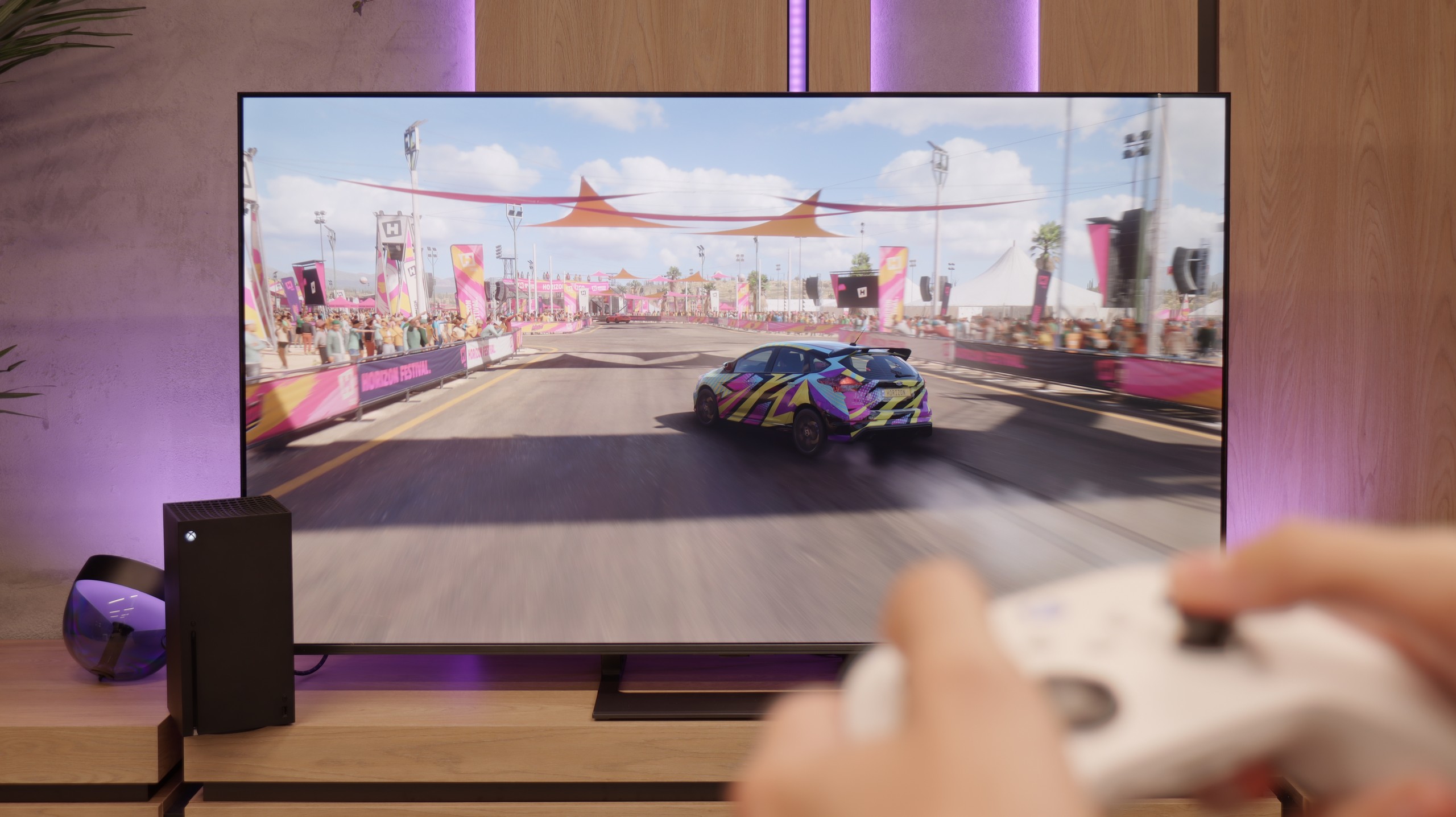
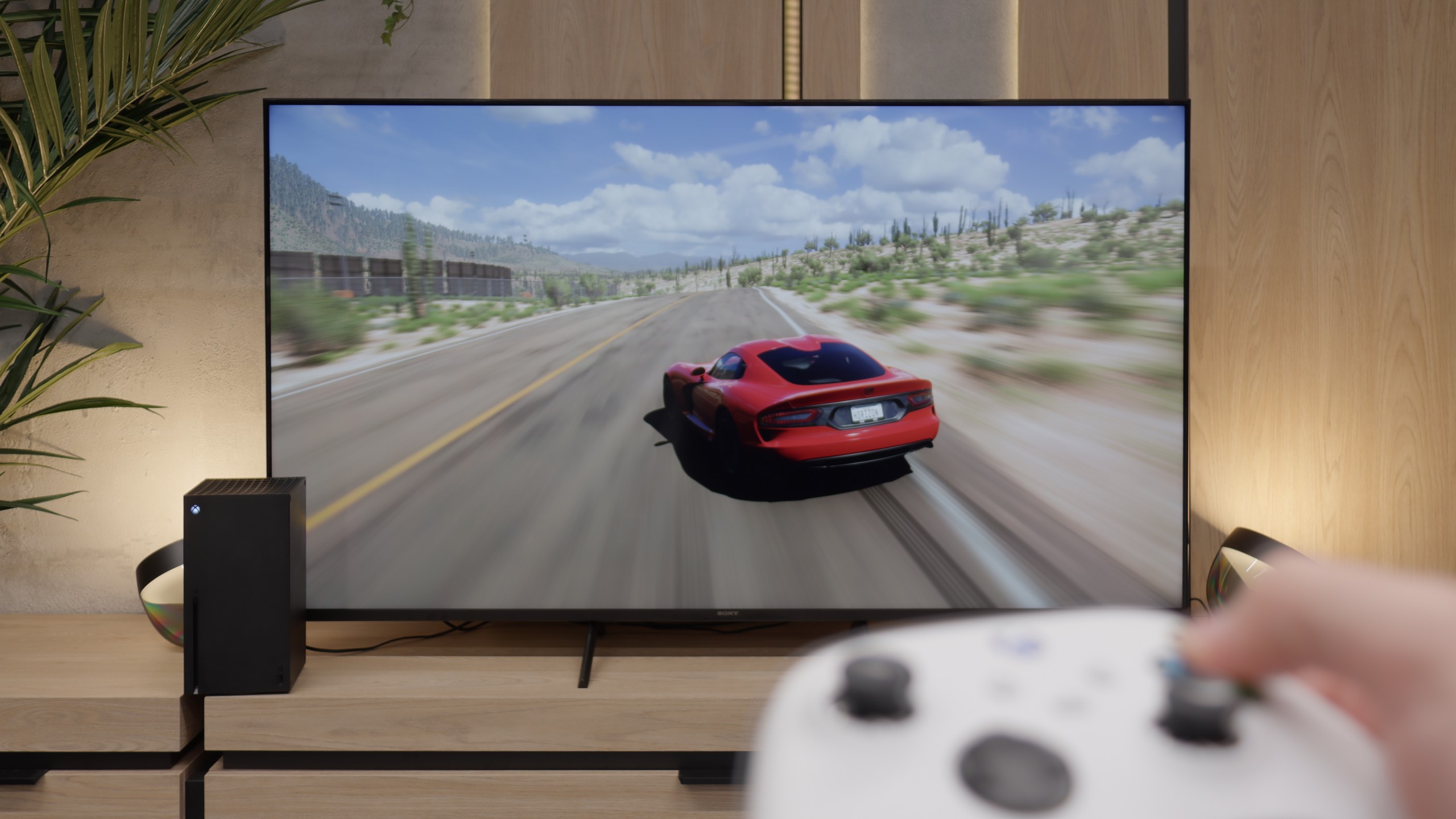
The Hisense E8Q does not hide its gaming pedigree. The specification alone reveals that we are dealing with a television that will work great as a gaming screen. Variable Refresh Rate (VRR)? Yes. Automatic low latency mode (ALLM)? It's there too. Additionally, there is impressive refreshment – 120 Hz in 4K or even 240 Hz in Full HD. Such a set is rare in this price segment. Everything works smoothly and without major surprises. The only missing element – like in the U7Q – remains support for HGiG. It's a pity, because this feature makes it easier to match the brightness curve to the capabilities of a particular television, improving visual consistency with the intentions of HDR game creators. Without it, one has to manually tweak the settings, which does not always yield a satisfying result.
Bravia 3 is not equipment for e-sports players or fans of late-night marathons with a controller in hand. The lack of 120 Hz refresh rate and HDMI 2.1 ports closes the topic before it even gets a chance to develop. This is a television for a casual gamer who will play FIFA or racing games after work, not for someone who measures every frame in a spreadsheet. Nevertheless, Sony has added a few nice extras to make it feel less bare. ALLM works as it should, automatically switching the television to game mode (low latency). There's even a simple Game Bar that is clear. However, the biggest curiosity here is the PlayStation Portal app. Thanks to it, you can launch games from PS5 wirelessly and see them immediately on the television screen. It sounds great, but it only takes a few minutes to feel significant lag. In our opinion, it's more of a showcase of capabilities than something you can reliably use every day. If someone really wants to play, it's better to connect the console with an HDMI cable and forget about wireless issues.
Input lag
9.7/10
10/10
SDR
HDR
Dolby Vision
The E8Q handles delays very well. For 120 Hz content, the input lag is super low – practically unnoticeable even for more demanding gamers. At 60 Hz, the values are a bit higher, but still comfortably within the "placebo" range – there's nothing to complain about. The biggest increase in lag was noted in Dolby Vision Gaming mode. The TV needs more time to process the signal in this mode, but even then, it does not exceed 30 ms. While these may not be perfect values, they won't pose any obstacles for most gamers – especially console gamers.
Here, Bravia 3 shows its best side. Latencies drop below 12 milliseconds in almost every resolution and mode, so the response to controller movements is instantaneous, and there is no noticeable delay. It feels like the console and the TV are speaking the same language, without unnecessary pauses and hesitations. Special attention should be given to the Dolby Vision Gaming mode. In its predecessor, the X75WL model, using this feature was simply agonizing – input lag could exceed 100 milliseconds, which effectively took away the pleasure of gaming. In Bravia 3, this problem has been completely eliminated.
Compatibility with PC
8.6/10
3.5/10
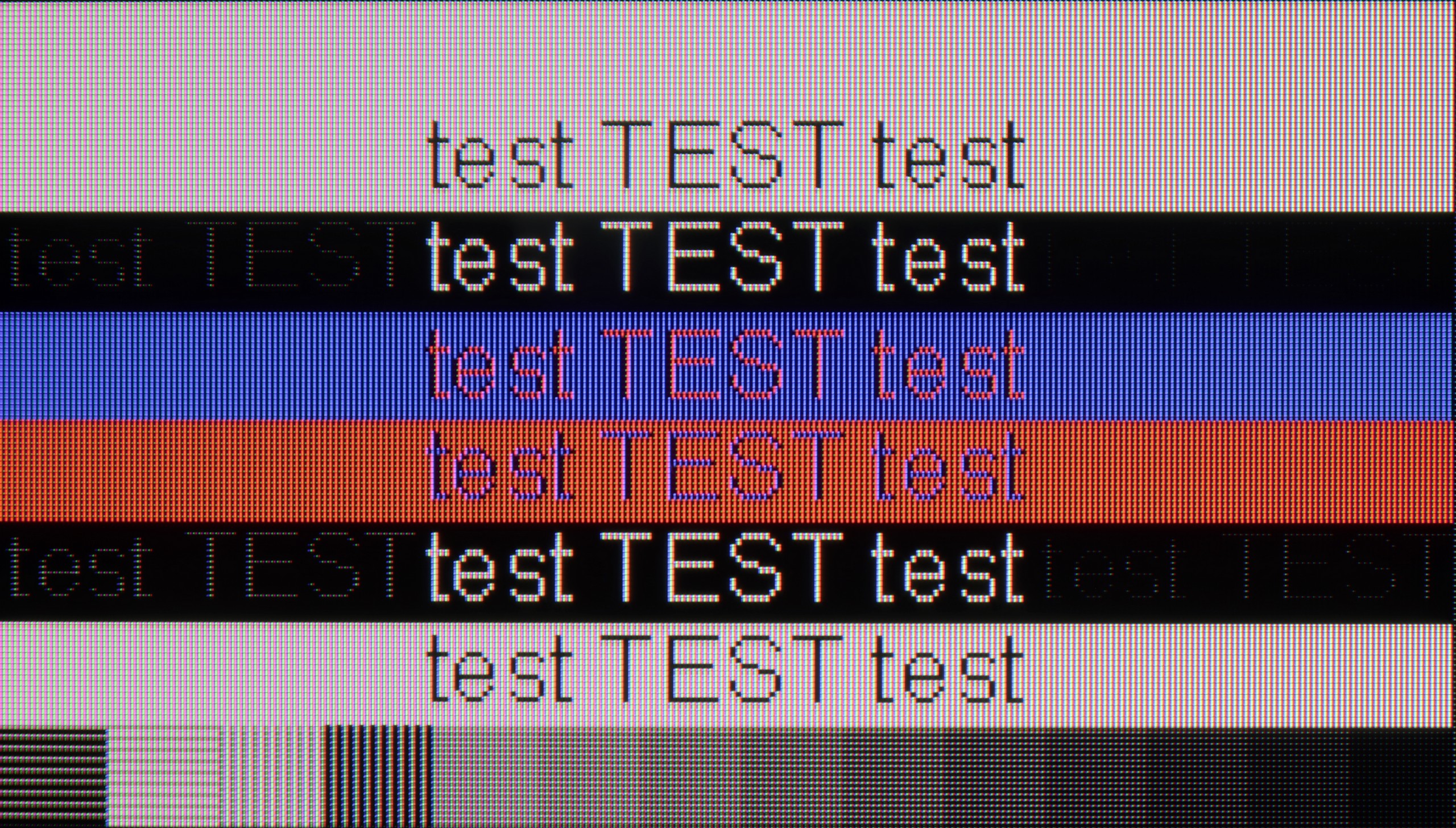
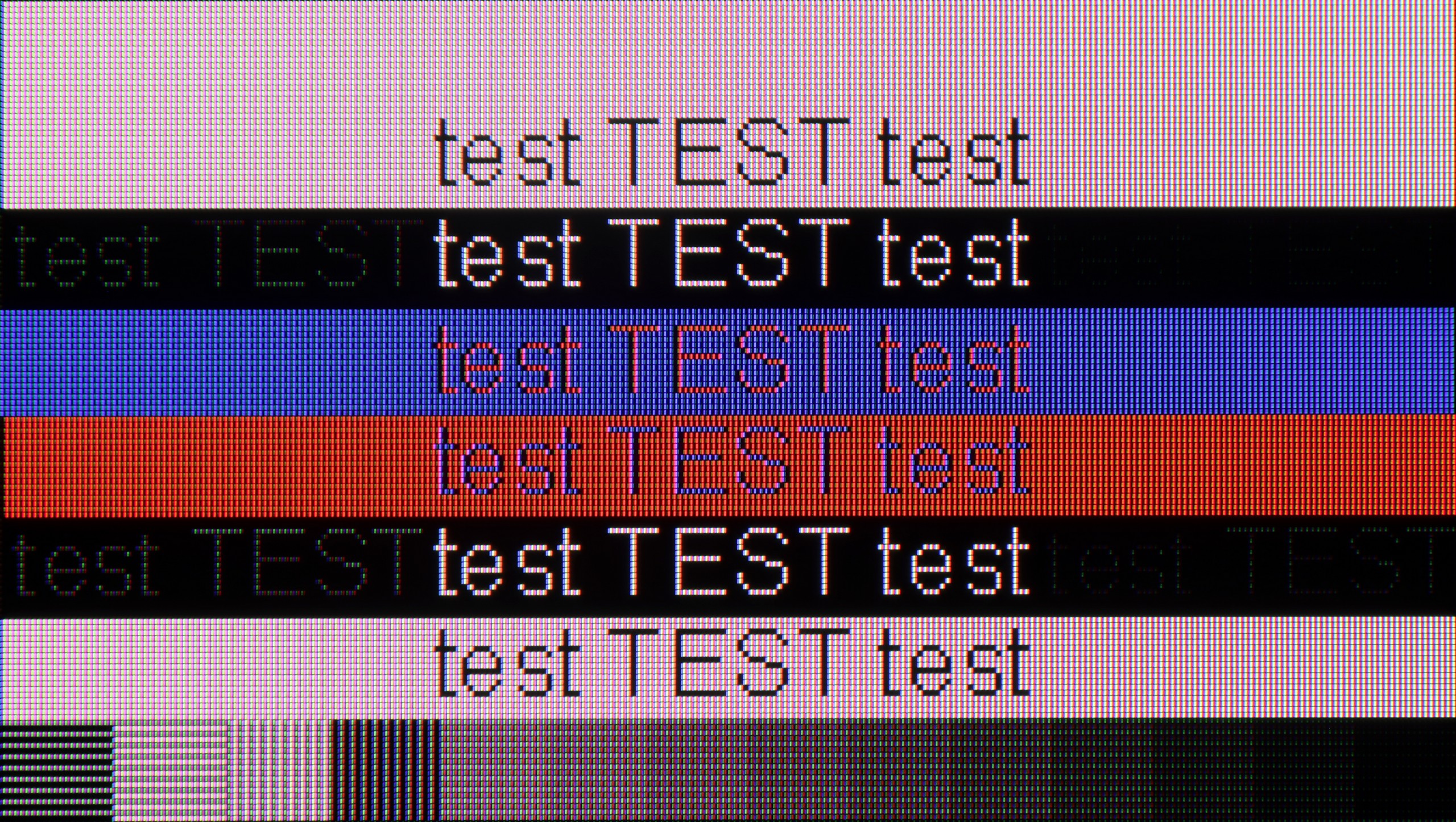
In terms of collaboration with the computer, the E8Q performs really well. It supports chroma 4:4:4 at full 4K resolution and at the highest refresh rate, so the readability of fonts – even the smallest ones – is at a very good level. There are minor blurriness issues with exceptionally thin fonts, but in everyday use, this is hard to consider a serious problem. A nice addition for PC gamers is the ability to achieve up to 288 Hz at lower resolutions. The E8Q communicates effortlessly with powerful graphics cards, making it an interesting choice not only for movies or consoles but also for gaming on a computer.
Collaboration with a computer in the case of Bravia 3 with a VA panel does not perform as well as in the version with an IPS panel. The fonts are noticeably less sharp and harder to read, which is immediately apparent when working with text. To this, there is the surprising issue of dithering, which we did not notice in the IPS variant. This is quite an unusual situation, but definitely worth noting, as it may hinder those planning to use the television as a monitor. When it comes to PC gaming, there are also no major reasons for enthusiasm here. The lack of support for frame synchronization with graphics cards or higher refresh rates makes the screen rather unattractive in this role. Therefore, if someone is seriously considering connecting Bravia 3 to a computer, a better choice would be the variant with an IPS panel, which performs significantly better in this regard.
Viewing angles
3/10
3.2/10
E8Q, like most TVs with a VA panel, looks best when we sit directly in front of the screen. In this position, one can count on deep blacks, good color saturation, and high contrast. Unfortunately, just moving slightly to the side causes the picture quality to suffer – colors start to fade, and blacks become more gray than black. This isn't surprising, but it's worth keeping in mind, especially if we plan to watch in a larger group from different positions in the living room. As a consolation – in return, we get significantly better black levels than with IPS panels.
The viewing angles in Bravia 3 with VA matrix are clearly weaker than in the version with IPS panel. It is enough to sit slightly to the side for the image to begin losing saturation and clarity, and the black to take on a lighter shade. This is the natural price to pay for the significantly better contrast and deeper blacks, which are a definite advantage in this variant.
TV efficiency during daytime
6.2/10
5.4/10
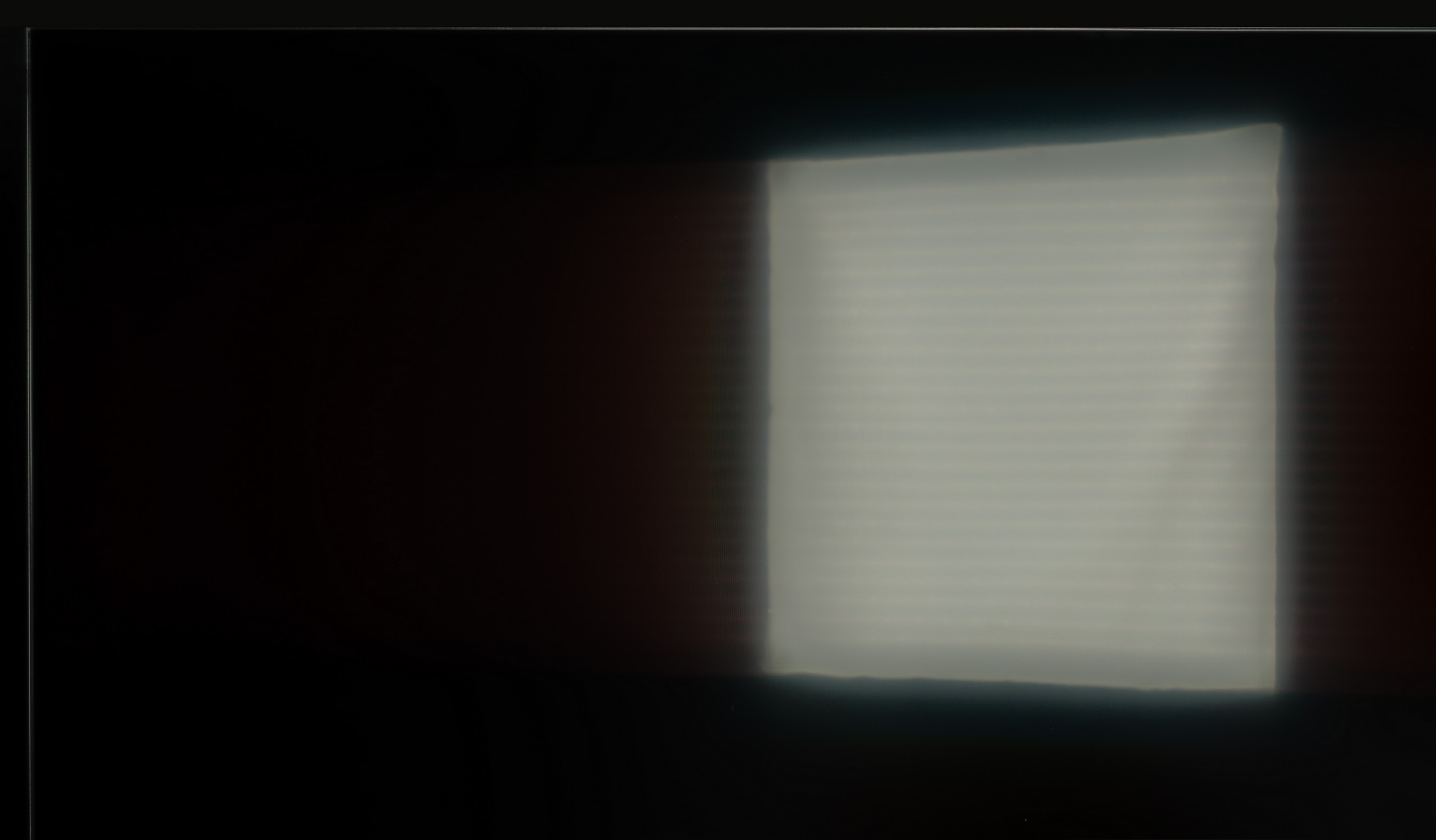
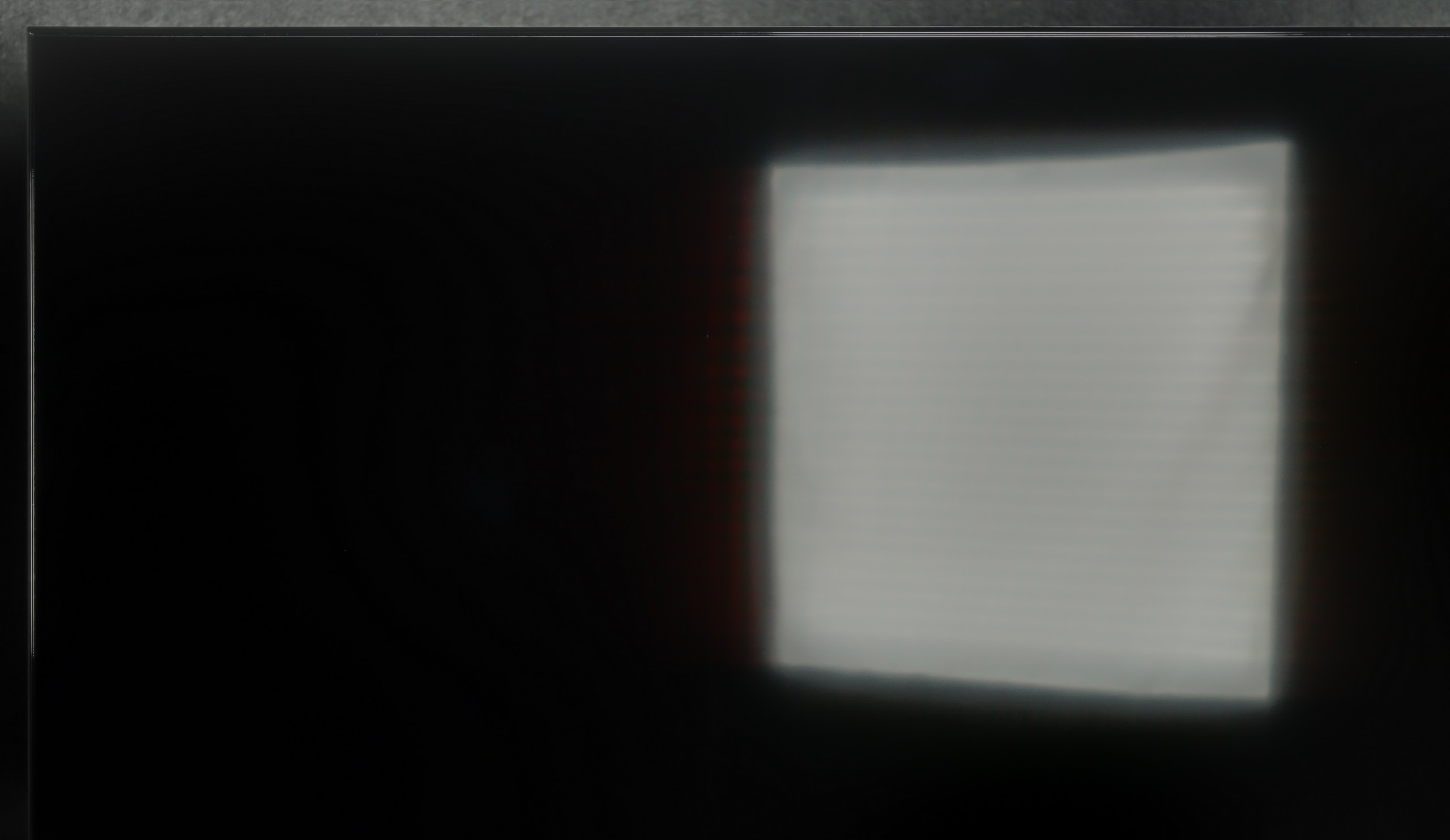

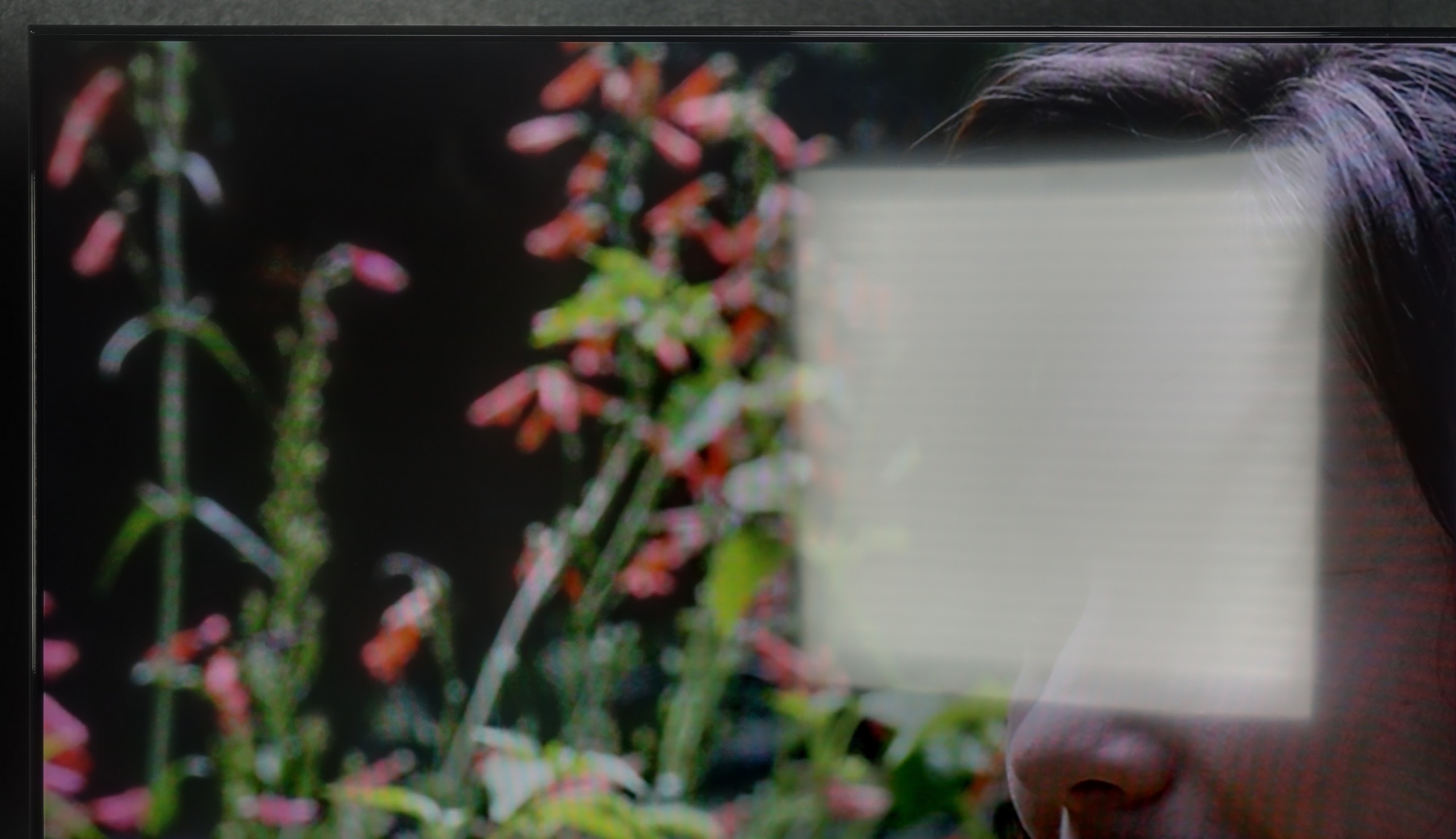
Matrix brightness
Average luminance SDR
Sony Bravia 3 50' (VA): 397 cd/m2
Hisense E8Q: 504 cd/m2
The Hisense E8Q is not afraid of bright interiors. Even when the full sun is shining outside, the television can maintain good image clarity. A brightness level of around 500 nits ensures that you can comfortably watch content during the day, without feeling that everything is drowning in glare. The satin screen coating also helps to pleasantly reduce reflections – it doesn't eliminate them completely, but limits them enough that they don't interfere with everyday viewing.
The performance of the Bravia 3 in the VA variant during the day is a mix of pros and cons. The manufacturer has also used a satin coating here, but compared to IPS, it struggles more with direct reflections. When sharp light hits the screen, reflections can be more pronounced and may interfere with viewing. On the other hand, the television compensates with higher brightness. In normal daytime conditions, the image is clearer and sharper than in the version with the IPS panel. Thanks to this, in everyday use, the Bravia 3 in the VA edition can perform even better, as long as it is not placed in a highly sunlit area.
Details about the matrix
Subpixel Structure:
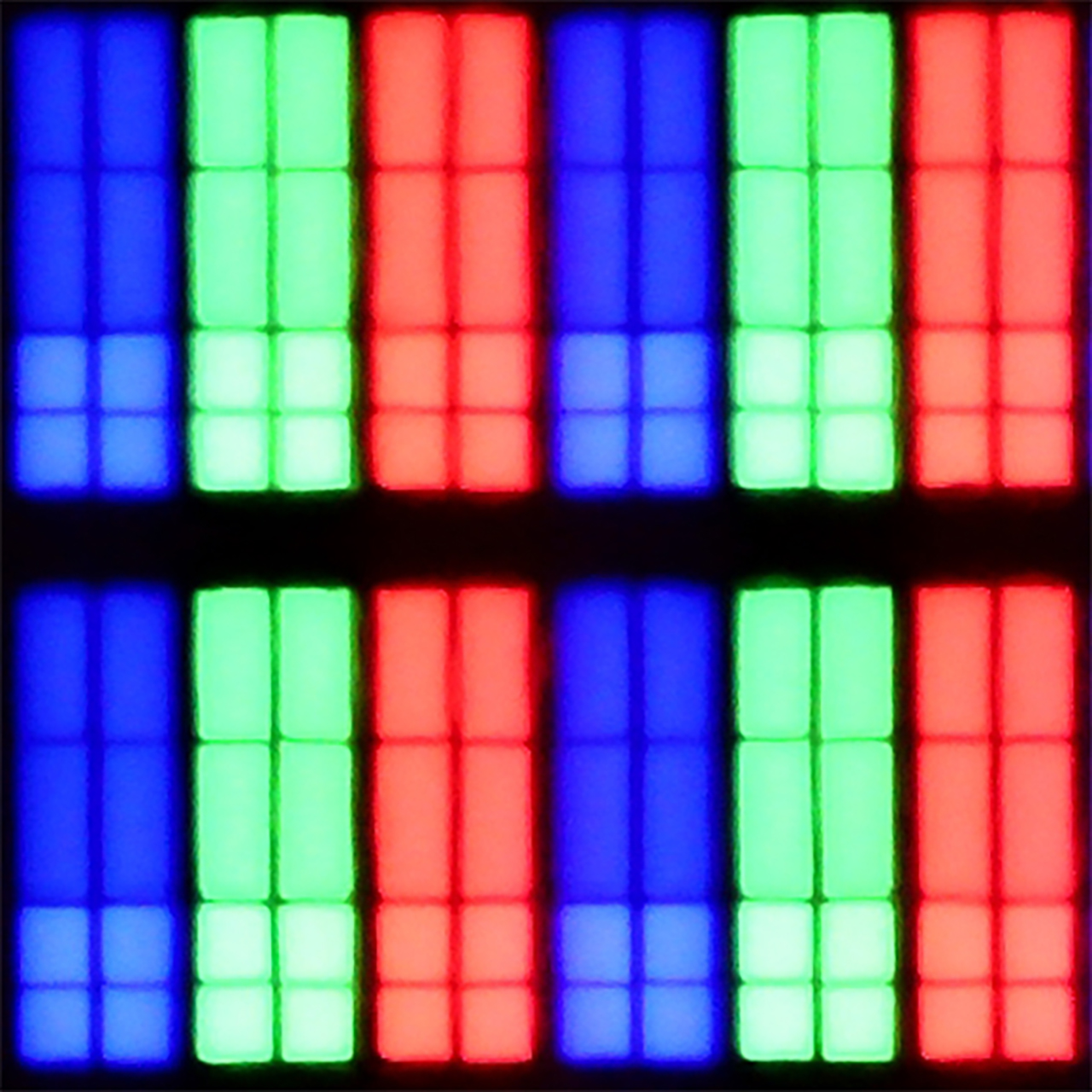
Panel uniformity and thermal imaging:
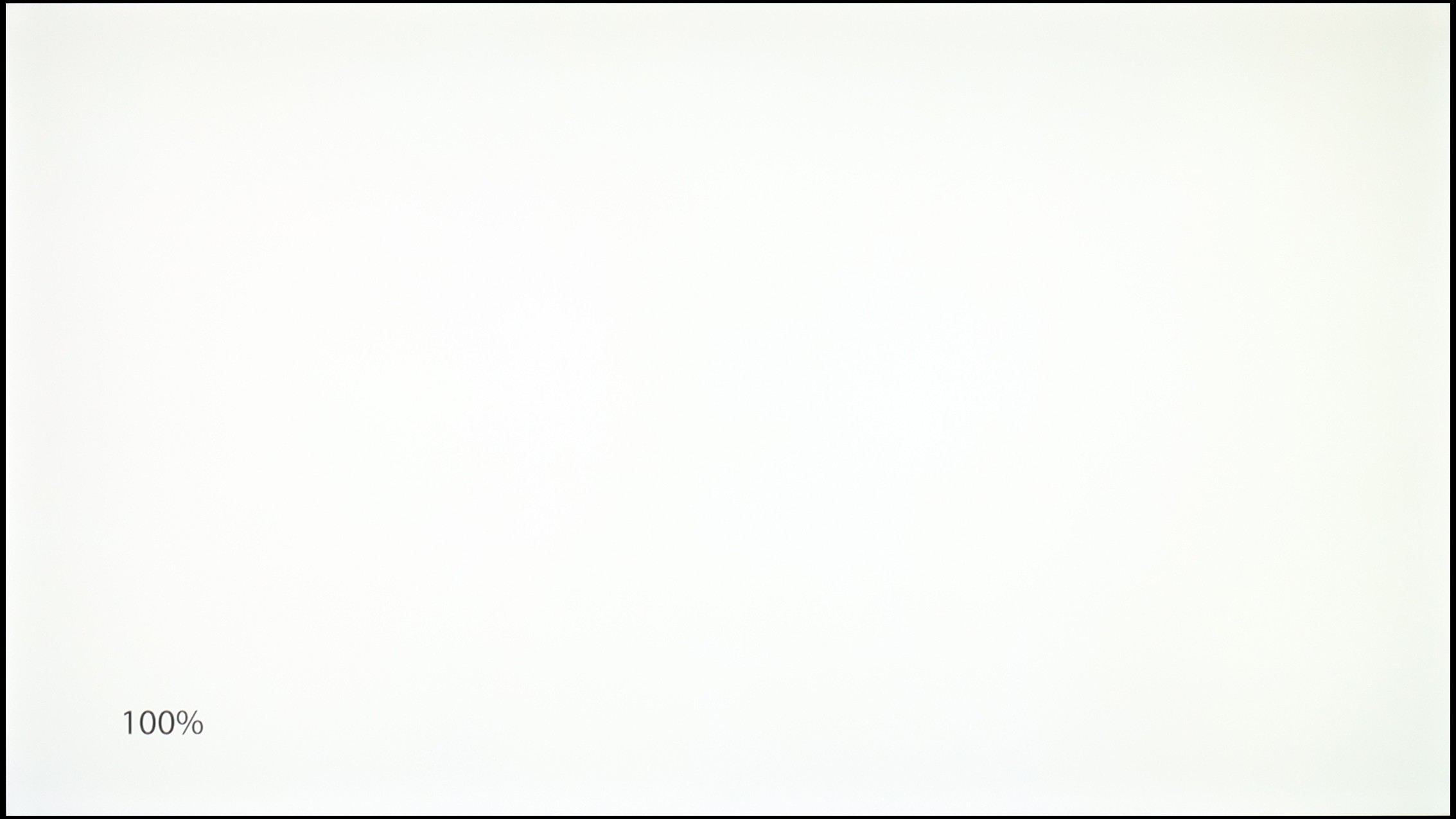
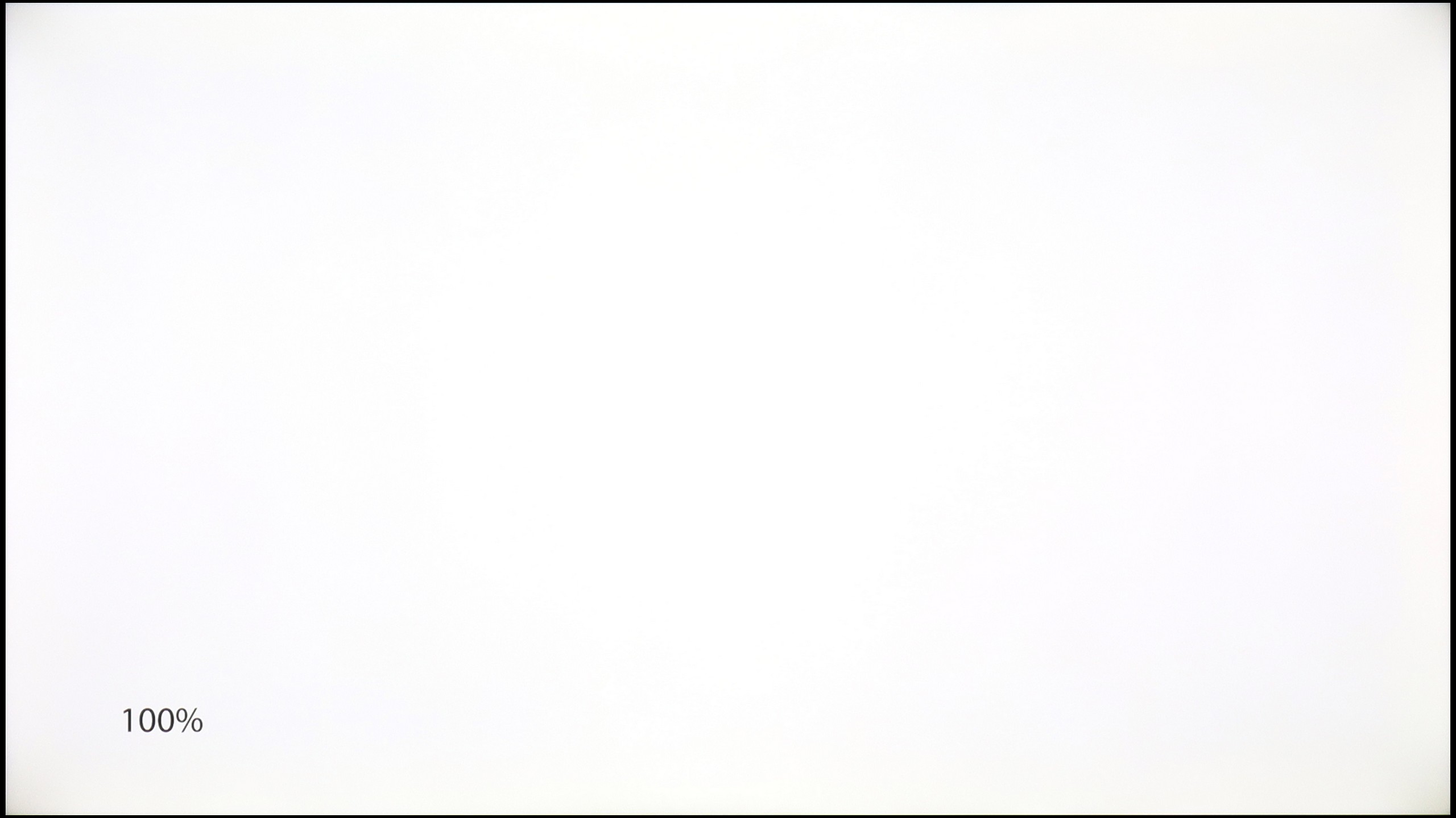
TV features
8.9/10
6.1/10
- HDMI inputs2 x HDMI 2.0, 2 x HDMI 2.1 48Gbps4 x HDMI 2.0, 0 x HDMI 2.1
- Other inputsRCA (Chinch)
- OutputsToslink (Optical audio), eARC (HDMI), ARC (HDMI), Mini-Jack (Headphones)Toslink (Optical audio), eARC (HDMI), ARC (HDMI)
- Network InterfacesWi-Fi 2.4GHz, Wi-Fi 5GHz, Ethernet (LAN) 100MbpsWi-Fi 2.4GHz, Wi-Fi 5GHz, Ethernet (LAN) 100Mbps
- TV receptionDVB-T, DVB-T2, DVB-S, DVB-S2, DVB-CDVB-T, DVB-T2, DVB-S, DVB-S2, DVB-C
Classic features:
- Recording to USB (terrestrial TV)
- Recording programming
- Picture in Picture (PiP)
- RF remote control (no need to aim at the screen)
- Backlit remote control
- Teletext
- Audio only mode
- Bluetooth headphones support
- Simultaneous Bluetooth headphones & TV audio
Smart features:
- AirPlay
- Screen mirroring (Windows Miracast)
- Voice search
- Voice search in native language
- Ability to connect a keyboard and mouse
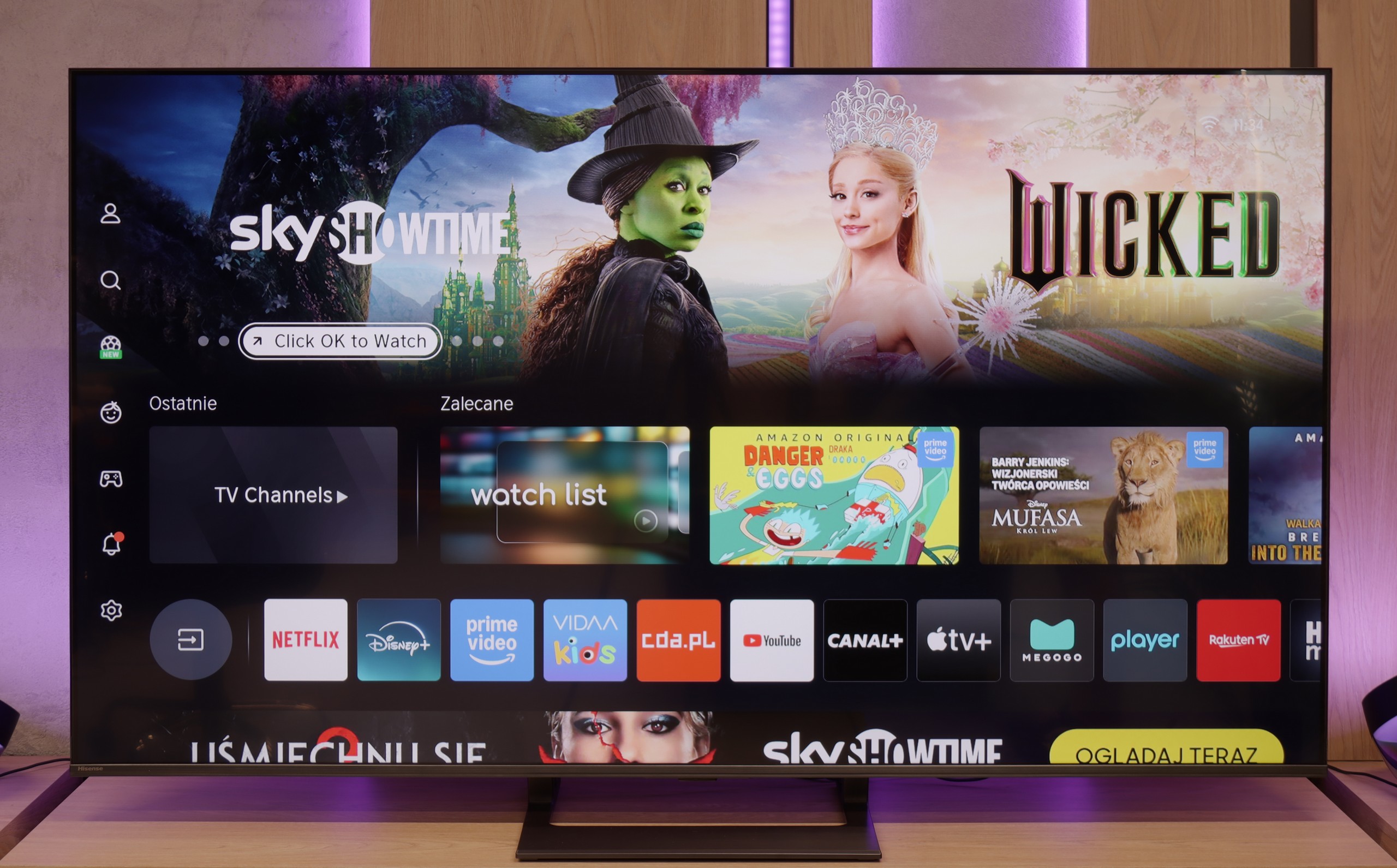
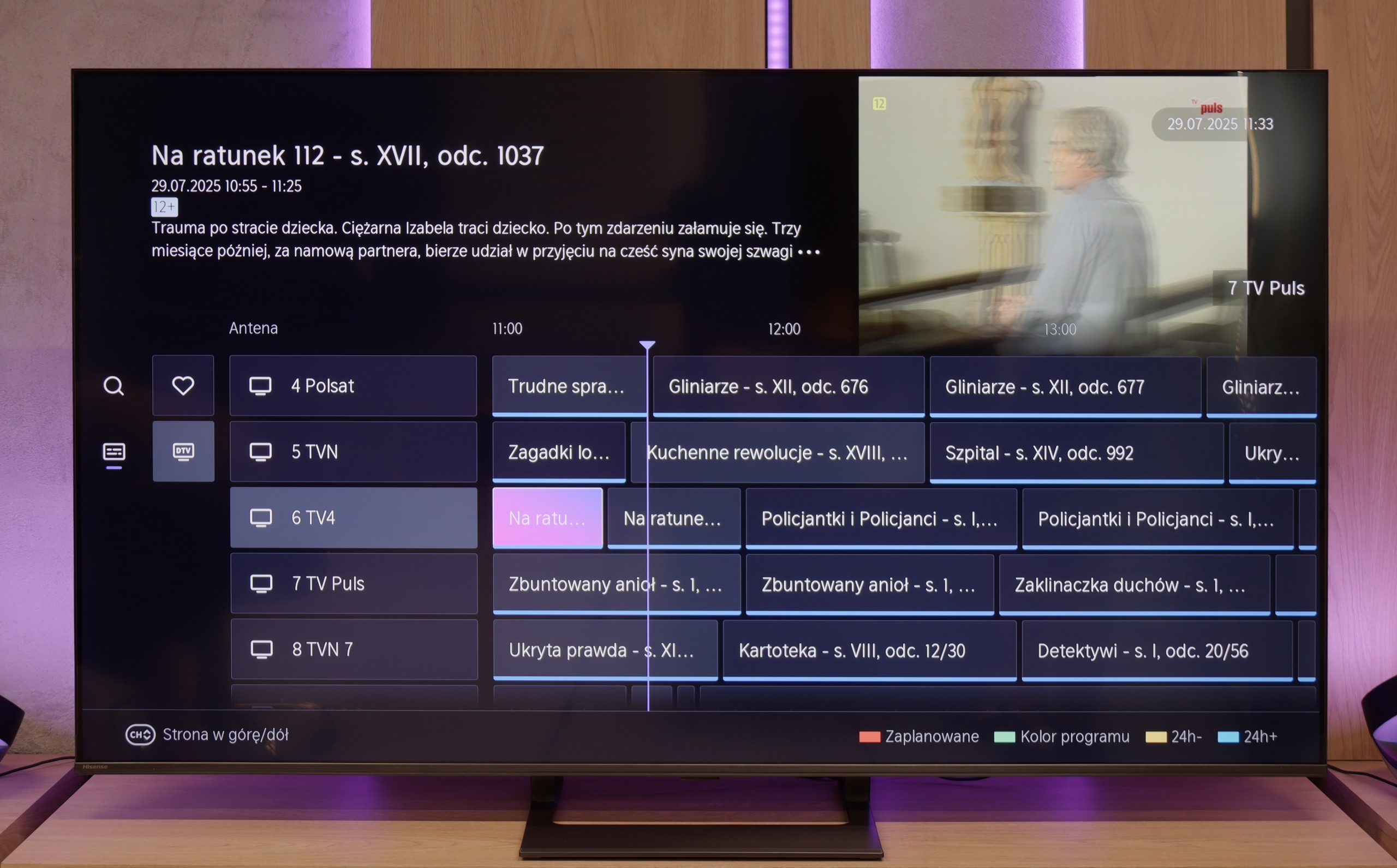
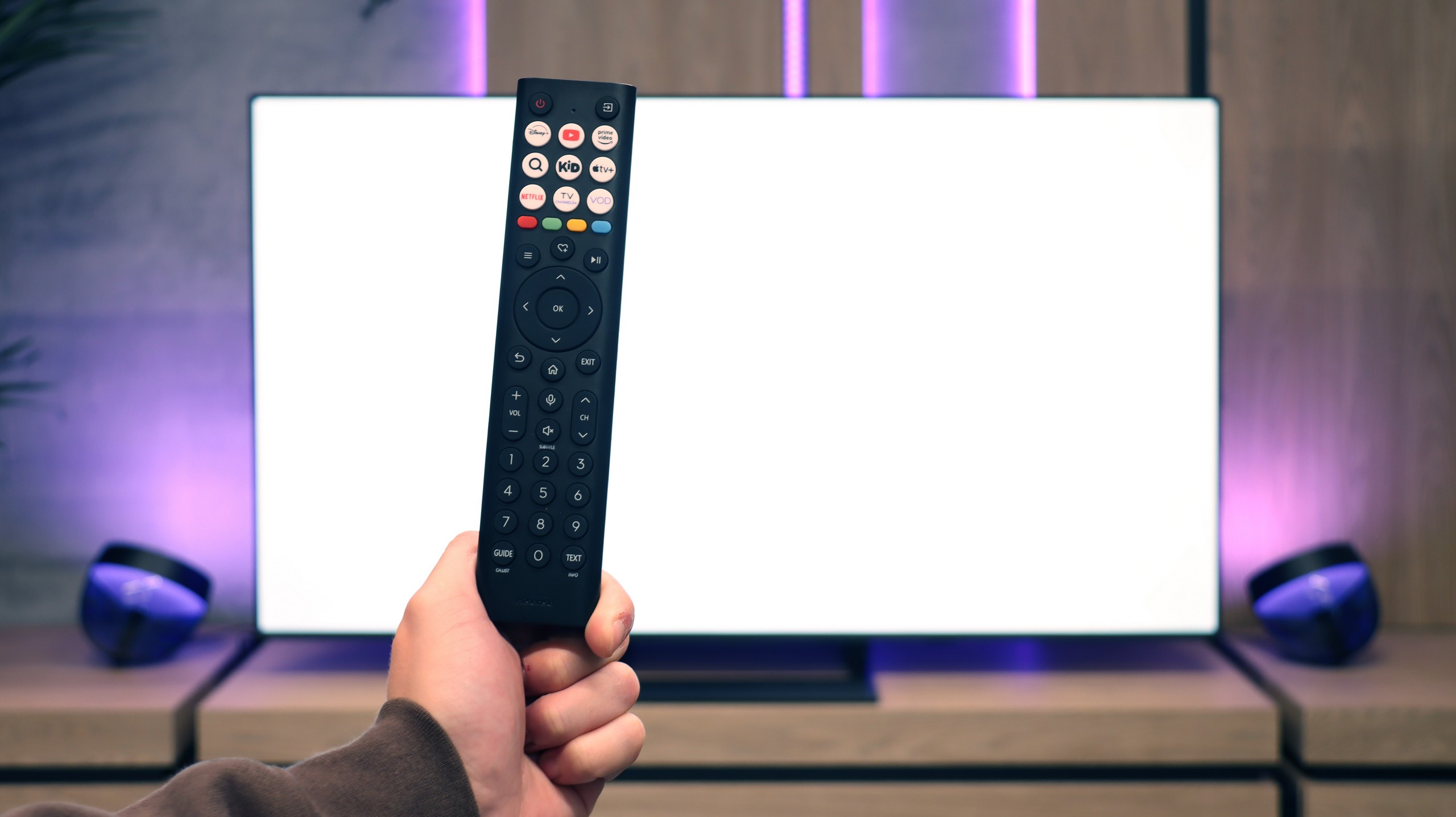

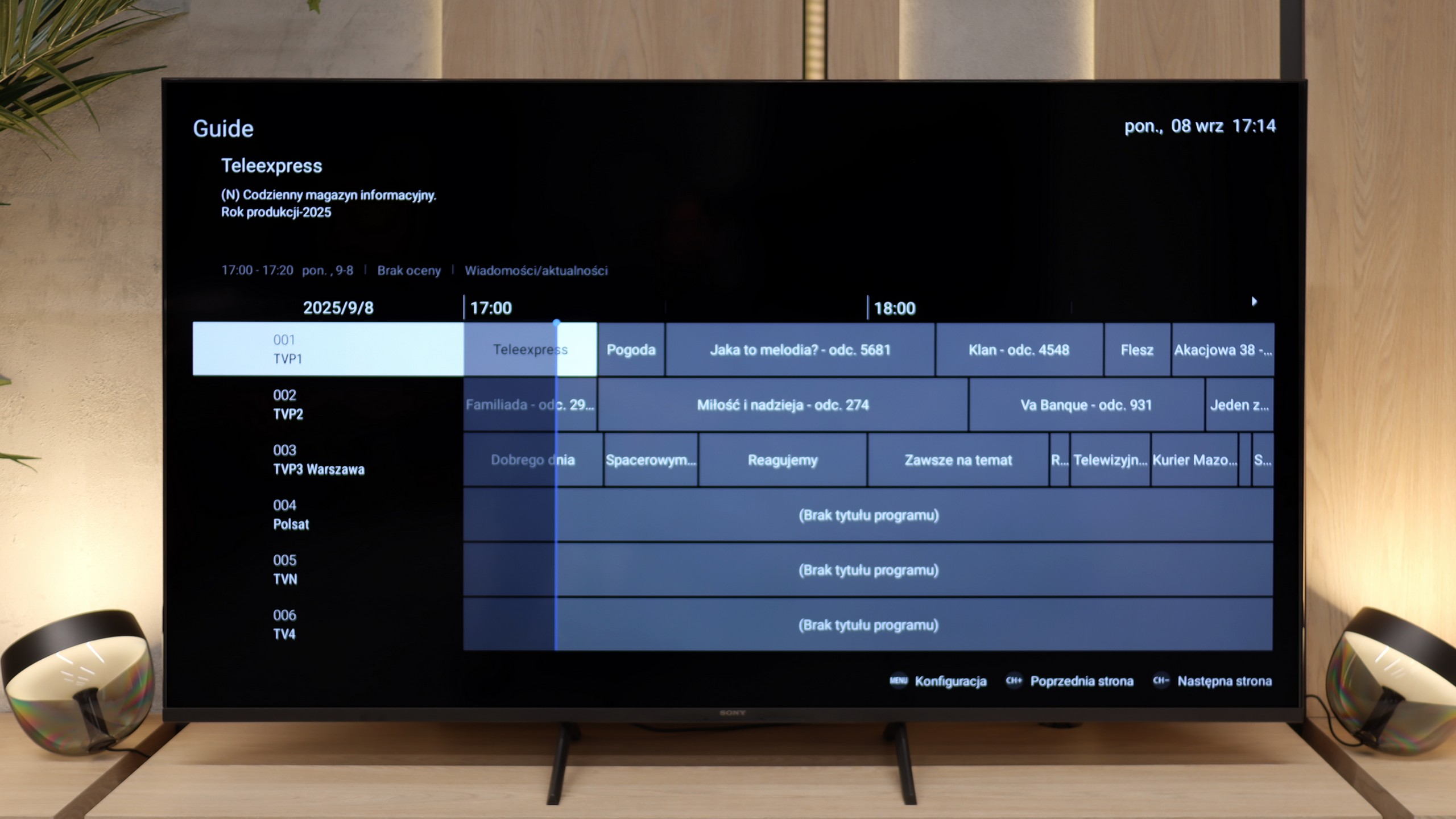
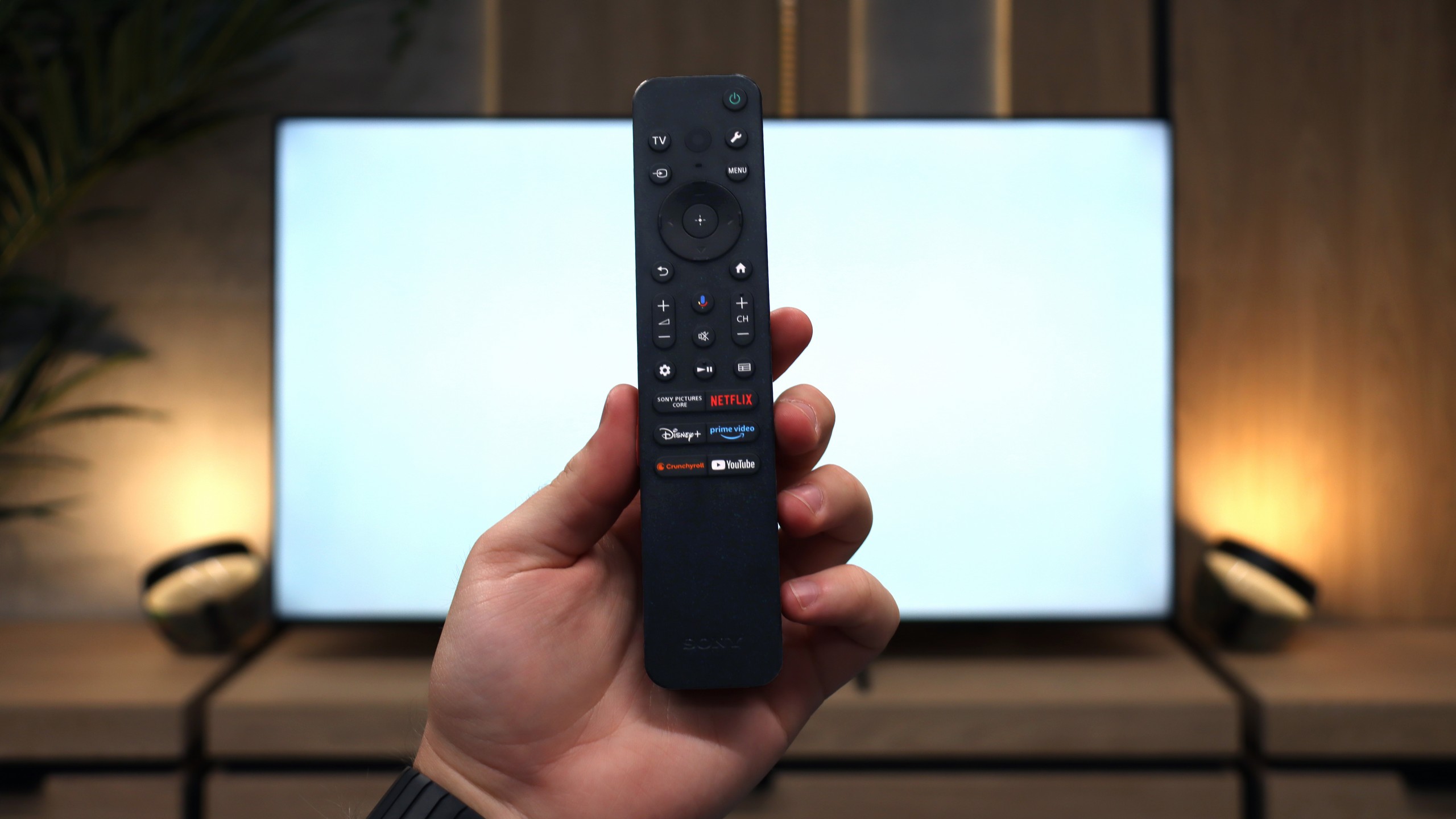
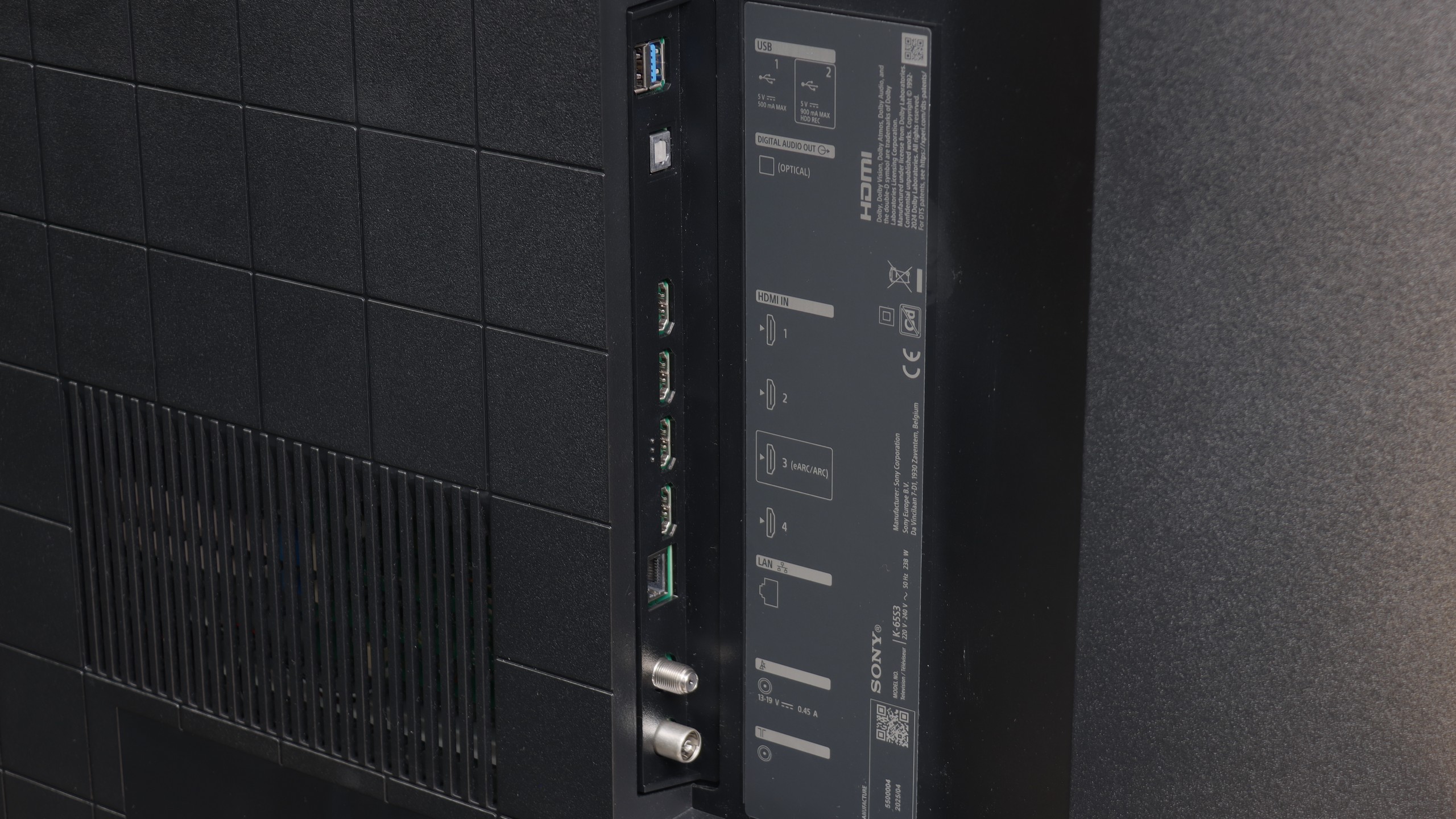
Classic Features – E8Q
The Hisense E8Q is not only equipment for gamers or movie enthusiasts – it can also serve as a daily television for the entire family. We can record programs to USB, connect headphones or speakers via Bluetooth, and the entire interface – including the channel guide – is clear and easy to use. It only lacks the PiP function, but aside from that, the set of classic features is truly complete.
Smart TV – VIDAA System
The E8Q runs on the VIDAA system, which is becoming more refined year by year. Voice search in Polish works flawlessly, and it's easy to cast from your phone (AirPlay and screen mirroring). The system operates smoothly, without any hiccups, although – as is often the case with closed platforms – there may occasionally be one or two less popular apps missing. Therefore, it’s worth checking before purchase to see if everything we use daily is available there.
Smart TV Features
The biggest advantage of the Bravia 3 in everyday use is the presence of the Google TV system. Thanks to it, we have access to one of the largest libraries of applications and streaming services, so regardless of whether someone mainly uses Netflix, Disney+, or smaller platforms, everything is at their fingertips. The Google voice assistant also worked very well, responding to our commands quite "smartly." The Google TV system should theoretically operate very smoothly because Sony has been implementing it better than many cheaper competitors for years. Unfortunately, in the case of the Bravia 3, it's not as nice as we would expect. During testing, we noticed slight lagging in the interface, and some features, such as screen mirroring, simply refused to cooperate. One might get the impression that the processor in this model sometimes struggles to handle the demanding system, and not everything works as smoothly as we would expect.
Classic Features
Sony, even in the cheapest series, manages to remind us of its experience with various users. In the package, we find as many as two remotes. The first is modern and minimalist, with a small number of buttons, which works great for using apps and Google TV functions. The second is a classic remote with a richer set of keys and a numeric keypad, which will be especially appreciated by older people used to traditional solutions. This is a nice nod to different user groups, and it must be admitted that Sony handled this very practically. However, it is a pity that compared to the X75WL model, the ability to record content from TV tuners to USB memory has disappeared. The manufacturer has completely abandoned this feature, so if someone was attached to it, they will unfortunately not find it in the Bravia 3.
Playing files from USB
8.2/10
9.6/10
Supported photo formats:
Maximum photo resolution:
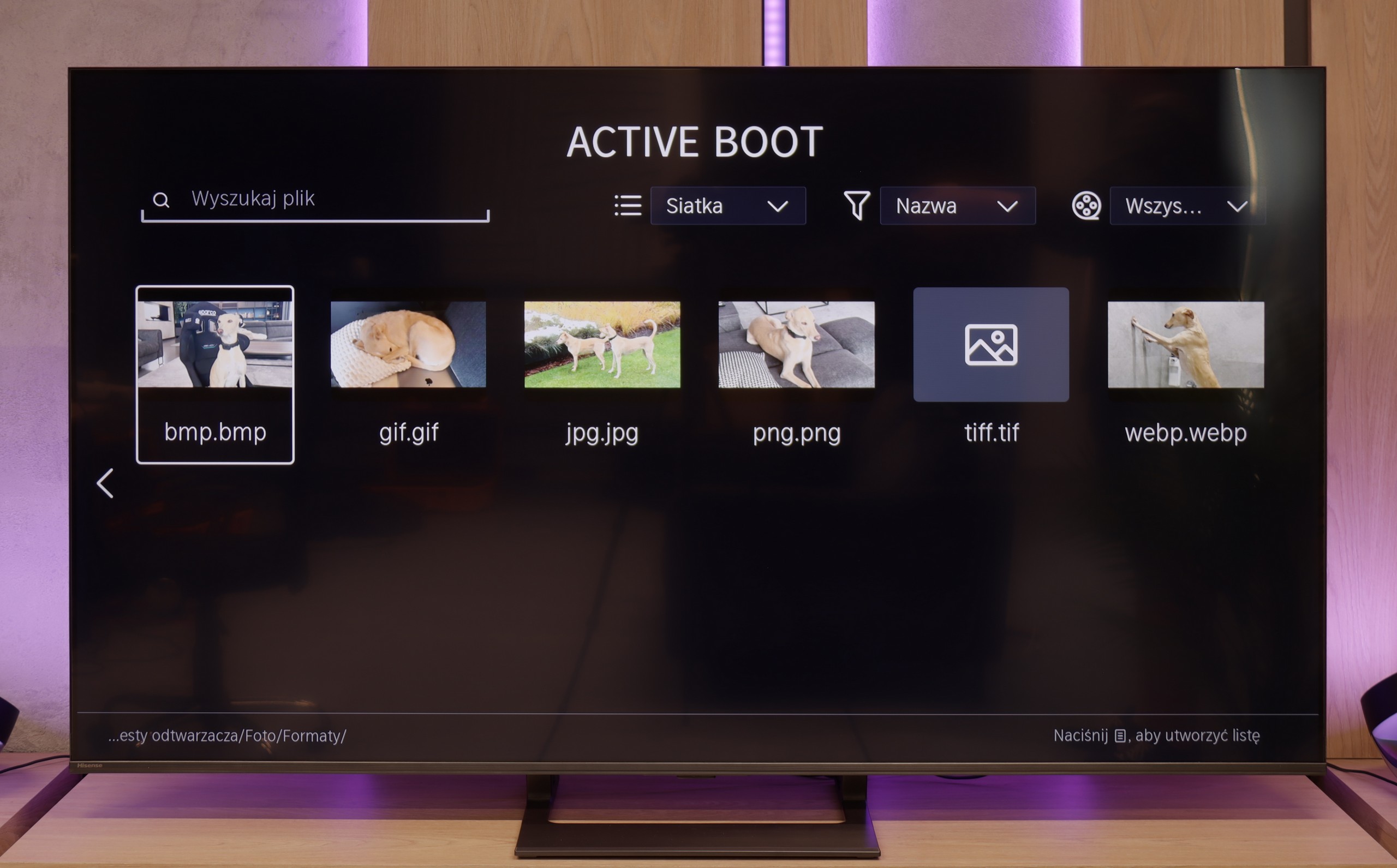
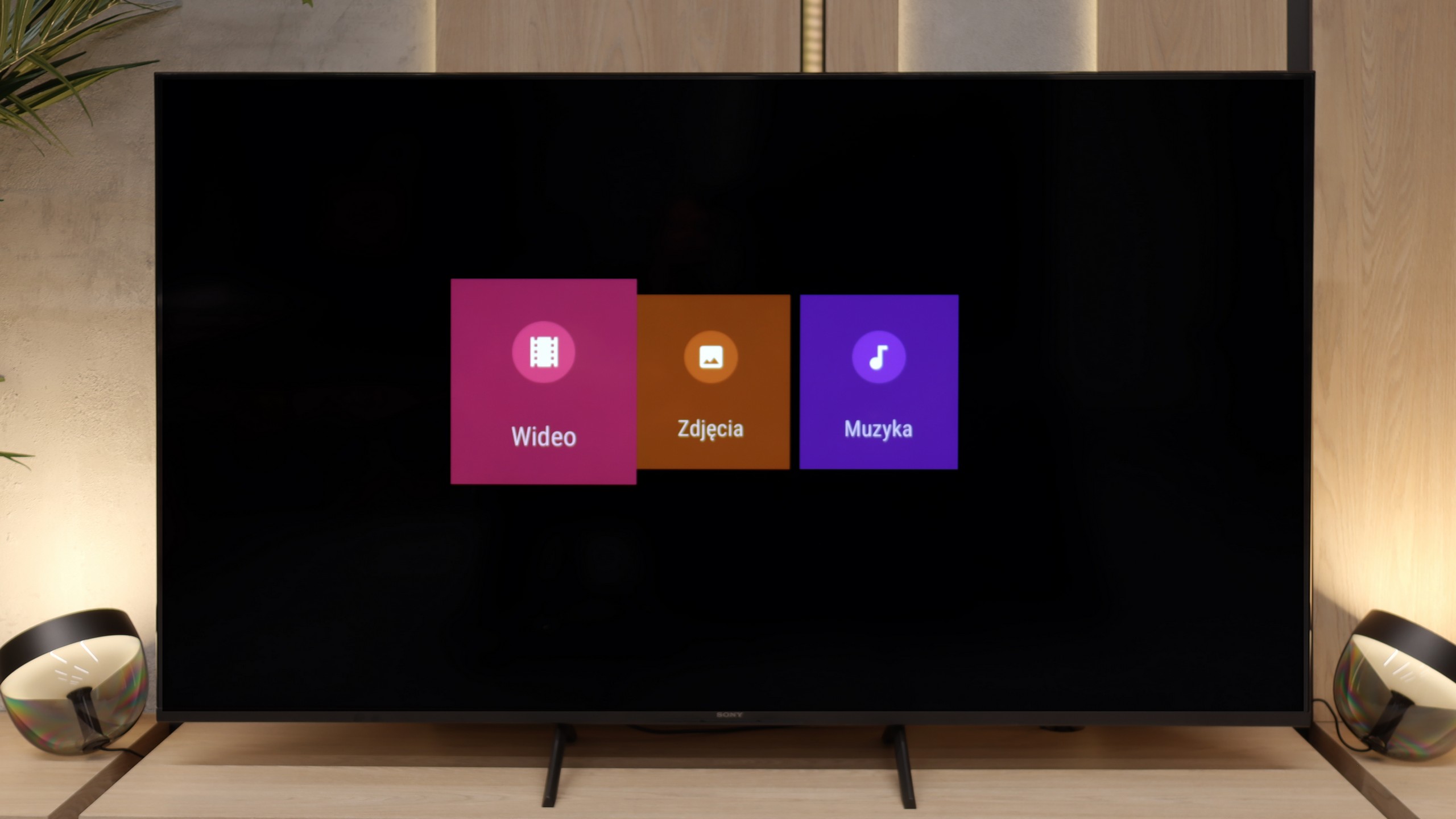
The built-in media player in E8Q performs quite well. It supports most popular video and audio formats, and files from USB drives or external disks play without major issues. Polish characters? They are supported. Subtitles? They work. The only minor drawback is the occasional problem with displaying high-resolution images – especially those from cameras or smartphones. So if you plan to show vacation photos on a large screen, it’s worth checking in advance whether they will all load correctly from the drive’s memory or USB stick.
Here, Sony really did a great job. The built-in player works quickly and doesn’t "hassle" when launching various formats. We didn't have to reach for external applications like VLC, as the TV handled even files that can cause a lot of issues on other models – such as HEIC photos from Apple devices. It’s a small detail, but one that shows the manufacturer wanted the user to feel complete convenience. By just plugging in a USB drive with a movie or photos from vacation onto an external hard drive, you can connect it and start watching on the big screen immediately. No fuss, no installing additional software, no searching for workarounds. This is really a rarity in TVs, and it must be said that in this aspect, Bravia 3 truly surprised us pleasantly.
Apps
7.7/10
9.6/10














































Sound
7.2/10
6.5/10
- Maximum volume85dB88dB
- Dolby Digital Plus 7.1
- Dolby True HD 7.1
- Dolby Atmos in Dolby Digital Plus (JOC)
- Dolby Atmos in Dolby True HD
- DTS:X in DTS-HD MA
- DTS-HD Master Audio
Unfortunately, the Hisense E8Q did not leave the best impression on us. Although on paper it has speakers with a power of 40 W (which is only slightly less than the 50 W in the U7Q), in practice, the difference is significant—and unfortunately not in favor of the E8Q. During testing, it quickly became apparent that something was off. When the volume was raised above 40-50%, the entire back housing began to resonate, and unpleasant crackling sounds emerged from the television. Even during regular viewing, it was hard not to notice this, and definitely hard not to hear it. In this form, it is difficult to talk about listening comfort. We do not rule out that this was a problem with a specific test unit, but nonetheless—it is worth keeping this in mind. If good sound is important to you, consider connecting a soundbar or… stick with the U7Q, which performs significantly better.
Bravia 3 plays in a rather flat manner, but makes up for it with volume. It will perform flawlessly for watching traditional television, as the dialogues are clear and the mid-tones are well audible. This type of characteristic will be particularly appreciated by older users who primarily care about speech intelligibility. However, if someone expects something more from the sound, such as stronger bass or a wider soundstage, it is worth reaching for a soundbar despite everything. The television supports modern codecs, including Dolby Atmos and DTS:X, so an external sound system will easily utilize their potential. This ensures that with a relatively small expense, one can achieve a much fuller and more engaging sound.
Sound Quality Test
No sound test video
Acoustic Measurements
85dBC (Max)
75dBC
No acoustic data


